But what exactly does digital customer engagement mean? Let’s break it down in plain and simple terms.
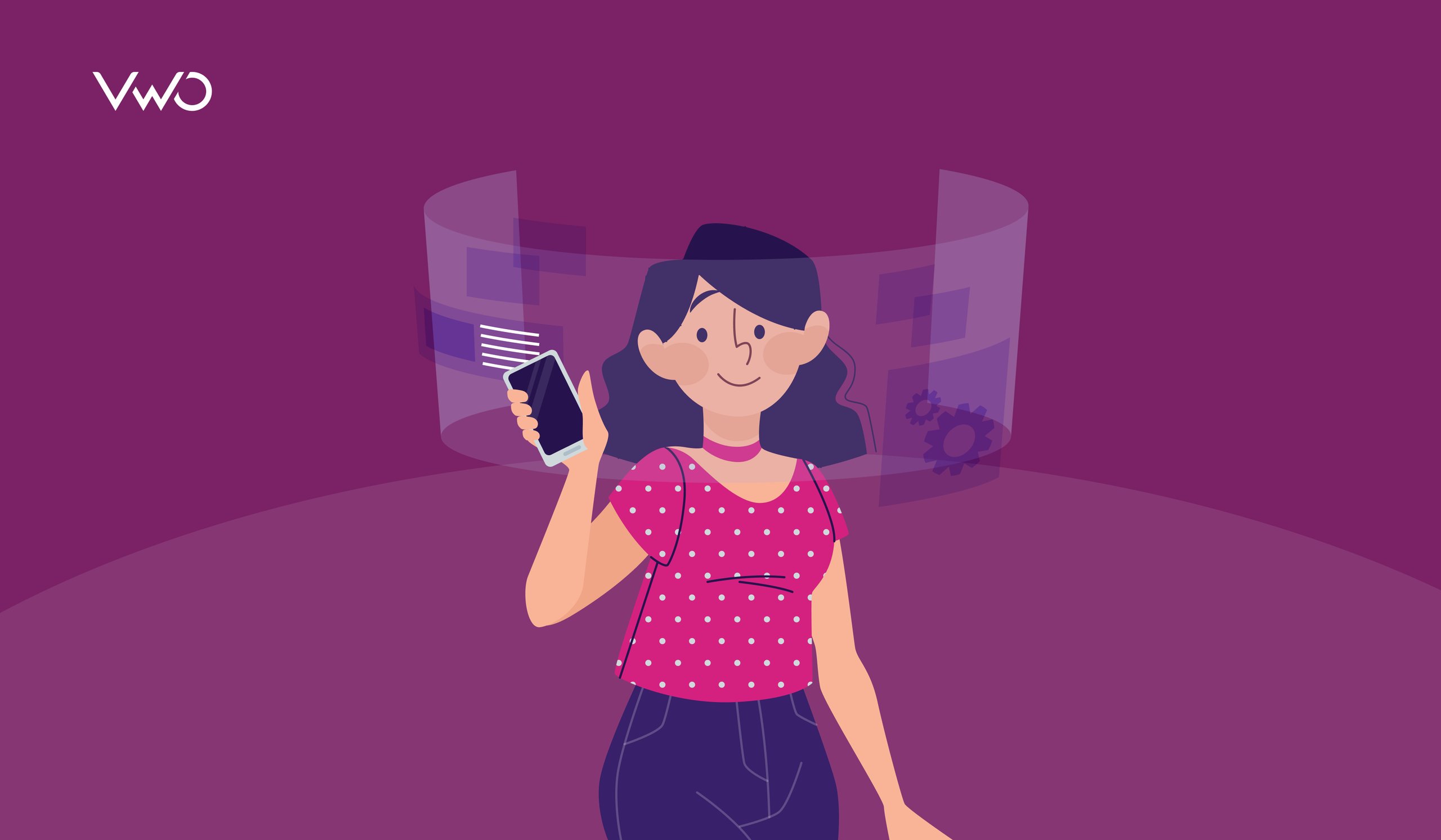
What is digital customer engagement?
Digital customer engagement is connecting with your customers in the digital space using various internet tools. It involves building relationships, creating customer loyalty, and providing a memorable experience for your customers.
As a customer, you must have received a personalized birthday wish via email or a website must have prompted you with a live chat for immediate assistance. That’s all part of digital engagement.
In today’s fast-paced digital landscape, where competition is fierce and attention spans are shorter than ever, mastering digital consumer engagement is crucial. It is the key to standing out, staying relevant, building long-term customer relationships, and thriving in the online marketplace.
Now, we move forward to understand why it is important to prioritize digital engagement.
Benefits of digital customer engagement
In today’s age, digital customer engagement is not just a buzzword; it’s the lifeblood of your online business. If you want to thrive in the competitive digital marketplace, engaging with your customers on a personal level is not an option but a necessity.
Let’s dive deeper into the benefits of digital customer engagement and answer the question: Why is digital customer engagement important?
Builds strong customer relationships
In the digital world, customer engagement is like a secret ingredient that makes your brand unforgettable.
When you engage with your customers in a meaningful way, you become a trusted friend they turn to again and again. Think about your favorite local coffee shop. The barista knows your order by heart and greets you with a warm smile. That’s not just great coffee; it’s exceptional customer engagement. In the digital world, it’s about knowing your customers’ preferences, addressing their needs, and making them feel valued and heard. That’s the kind of connection that keeps customers coming back to your website or app for more.
Boosts customer loyalty
Customer loyalty is the holy grail of business, and digital customer engagement is your treasure map. Engaged customers are not just one-time buyers; they’re your brand advocates. They’re the ones who sing your praises to their friends and followers on social media and keep coming back to choose you over the competition. They’re not just promoting a new product; they’re sharing valuable tips, responding to comments, and creating a community around their brand.
Drives growth
Digital customer engagement isn’t just about warm and fuzzy feelings; it’s a growth engine. Engaged customers are more likely to convert, spend more, and stick around. When you engage with your customers effectively, you’re not just boosting sales; you’re increasing the lifetime value of each customer.
For instance, imagine you run an online store, and a customer visits your website. They have a question about a product, so they click on the live chat option. Within seconds, they’re chatting with a friendly and knowledgeable support agent who answers their questions. That seamless experience not only clinches the sale but also creates a loyal customer who’s likely to return for future purchases.
Enables the business to adapt and thrive
In the fast-paced world of the internet, change is the only constant. Customer preferences evolve, new technologies emerge, and competitors are always one click away. That’s where digital customer engagement shines.
Imagine you notice a sudden drop in website traffic, and you’re not sure why. With the right digital engagement tools and analytics, you can quickly identify the issue, address it, and get back on track. It’s like having a GPS for your online business, helping you stay on course even when the road takes unexpected turns.
Digital customer engagement strategy
Having a well-thought-out digital customer engagement strategy sets the direction for all your digital channels and online presence. It ensures that you are not only connected with your audience but also leave a lasting impression.
We will look into some of the key strategies and tactics that can spearhead your digital customer engagement:
a. Web experimentation
You must constantly experiment with your website to enhance digital customer experience and engagement. By analyzing user behavior, you can identify pain points, areas of improvement, and new opportunities. Web experimentation involves making data-driven changes to your website to optimize its performance.
A key web experimentation method is A/B testing. It can help you compare two versions of a webpage to see which one performs better. Such experiments can lead to substantial improvements in conversion rates, user engagement, and overall customer satisfaction. For example, the following image showcases two variations and control (original version) of the product page that are A/B tested to improve conversion.
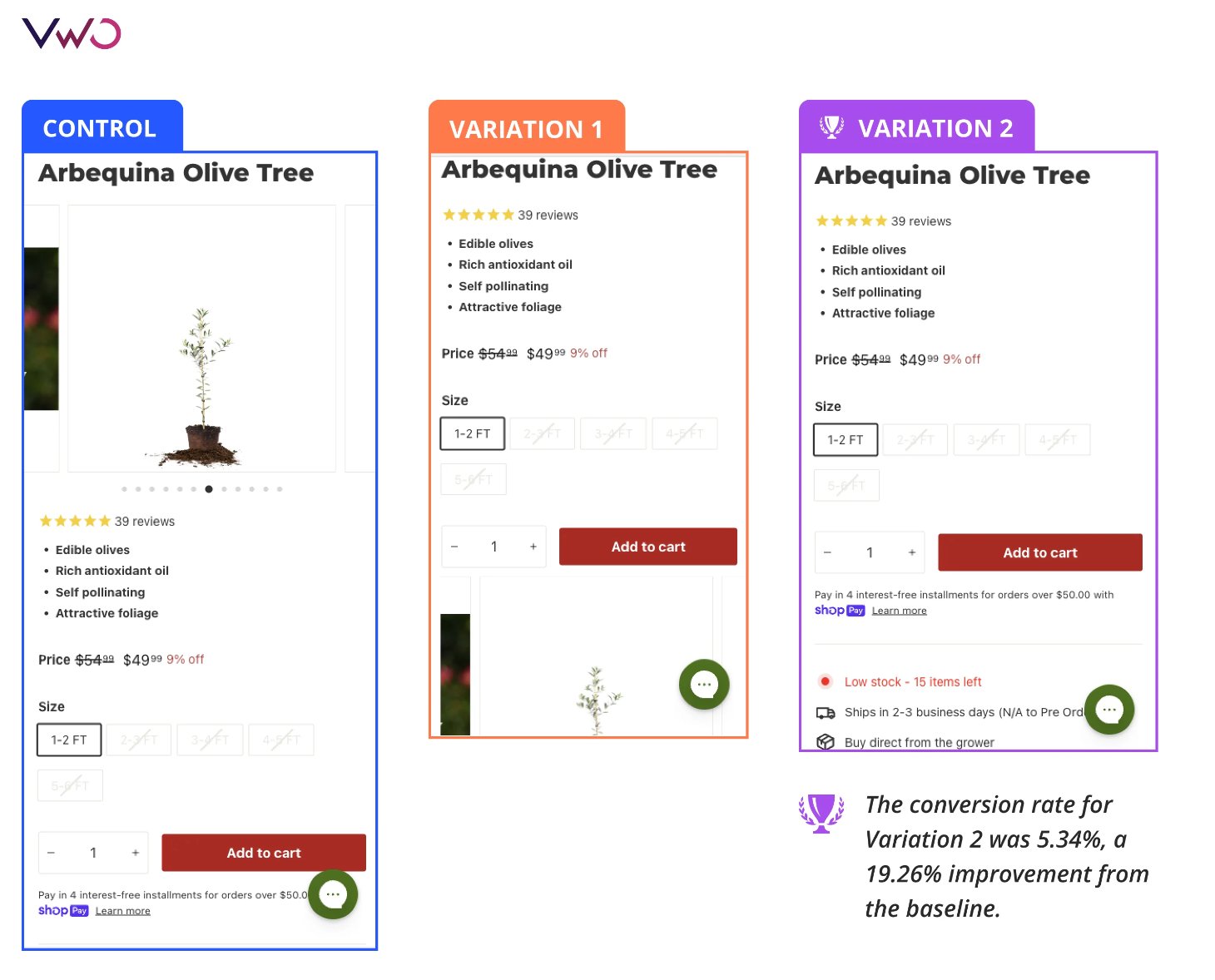
b. Customer experience personalization
Customer experience personalization is like having a digital concierge that tailors every interaction to the individual customer. It’s about using data and insights to create a personalized experience that resonates with each customer.
For example, if a customer frequently shops for running shoes, your e-commerce website can showcase the latest running shoe arrivals the next time they visit. These personalized touches go a long way in keeping customers engaged and coming back for more.
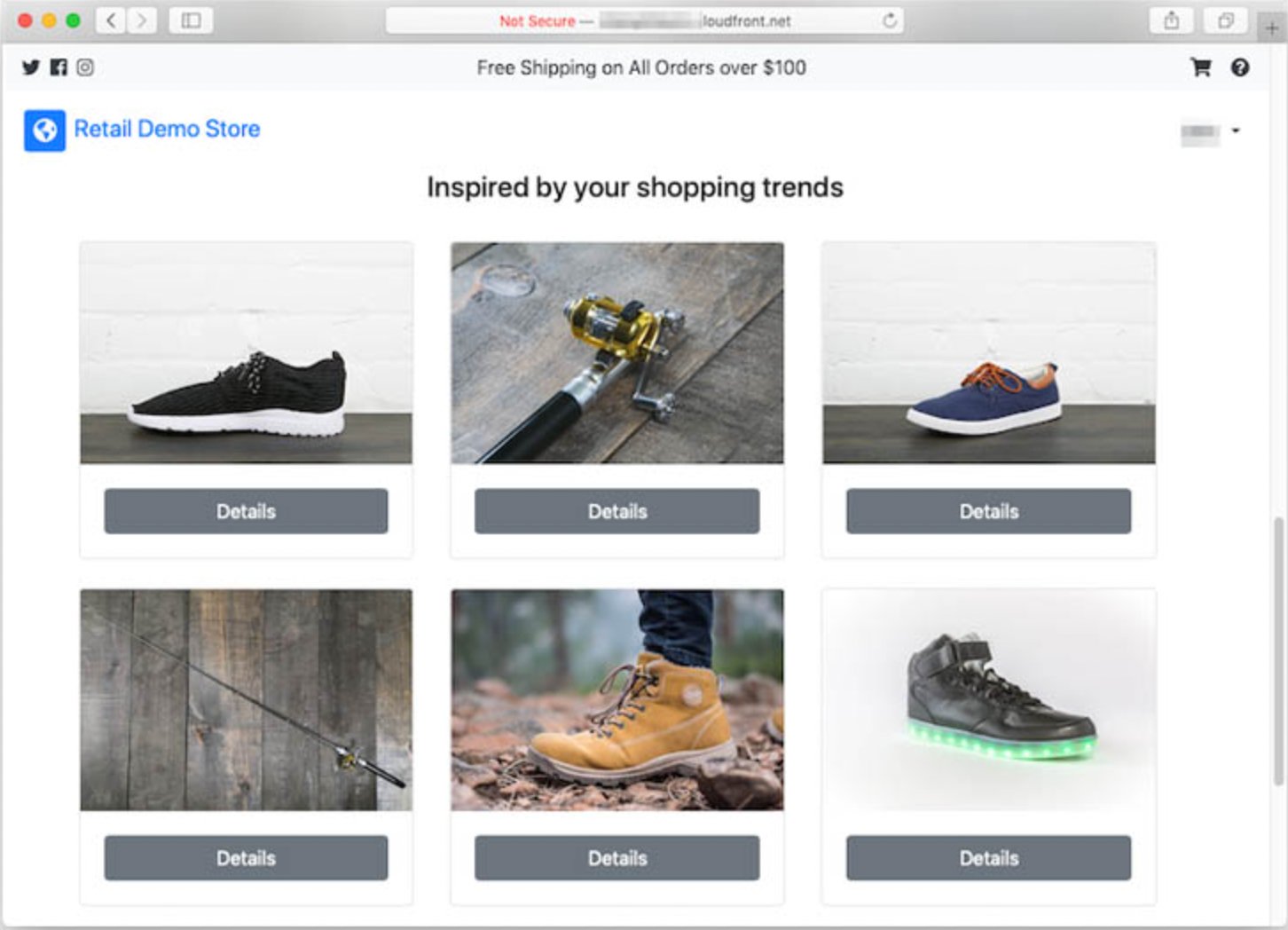
c. Content marketing
Content is the lifeblood of your digital engagement strategy. It’s the bridge that connects you with your audience, providing valuable information, entertainment, and solutions. Various forms of content, from whitepapers to webinars, play a pivotal role in creating digital customer engagement:
Whitepapers, reports, and ebooks
These in-depth pieces of content demonstrate your expertise and thought leadership. They offer valuable insights and solutions to your audience’s pain points. By providing free access to well-researched whitepapers, reports, or ebooks, you not only educate your audience but also establish trust and credibility. For example, VWO provides an in-depth A/B testing report that helps marketers get valuable insights about experimentation.

Online courses and webinars
Hosting online courses and webinars showcases your commitment to helping your audience grow and learn. These interactive formats allow for real-time engagement, enabling you to answer customer queries, address concerns, and build relationships. By consistently producing high-quality content that aligns with your audience’s interests and needs, you become a go-to resource. This keeps your audience engaged and encourages them to stay connected with your brand throughout their customer journey. For instance, Bain & Company conducts regular webinars on important business topics to regularly engage with their clients.

d. Integrated customer support
Exceptional customer support is the cornerstone of any successful digital engagement strategy. In the digital age, customers expect quick and convenient ways to get their questions answered and issues resolved. A robust contact center, equipped with knowledgeable contact center agents, is essential for delivering top-notch support. These agents are the human touchpoints in your digital space, available through multiple channels like chat, email, or phone. They play a crucial role in providing real-time assistance and creating positive customer experiences.
Moreover, a well-integrated contact center can also collect valuable data on customer interactions, allowing you to better understand customer pain points, preferences, and behaviors. This data can inform future engagement strategies, helping you continually improve customer relationships and build a base of loyal customers.
e. Multi-channel engagement
In today’s interconnected world, your audience engages with you through multiple channels. An effective digital engagement strategy embraces this multi-channel reality. By being present and responsive across all these channels, you create a seamless and consistent customer experience. Whether a customer reaches out via Facebook Messenger or your website’s live chat, they should receive the relevant experience as per the funnel stage.
f. Mining data-driven insights
Data provides valuable insights into customer behavior, preferences, and pain points. By continuously analyzing this data, you can refine your strategies, uncover new opportunities, and improve customer relationships by using a digital customer engagement platform.
For example, an educational portal is striving to create a vibrant online learning community. It uses a customer engagement platform to collect and analyze customer data from multiple sources and derive valuable insights. By tracking student behavior, preferences, and learning patterns, they tailor content and resources to individual needs, ensuring a personalized educational journey. This data-driven approach not only fosters greater student engagement but also boosts overall satisfaction, making the educational portal a trusted and preferred destination for eager learners
Digital customer engagement examples
Top-performing companies in the world utilize digital engagement strategies to keep delivering the best customer experience. Here are three examples to inspire you.
Nike
With thousands of product offerings in its arsenal, Nike understands the importance of tailoring the customer experience. They’ve built a digital engagement strategy that’s akin to having a personal shopping assistant right at your fingertips.
Here’s how it works: When you visit Nike’s website, they invite you to choose your interest. Whether it’s a specific sport, product category, or athlete, you’re in the driver’s seat.
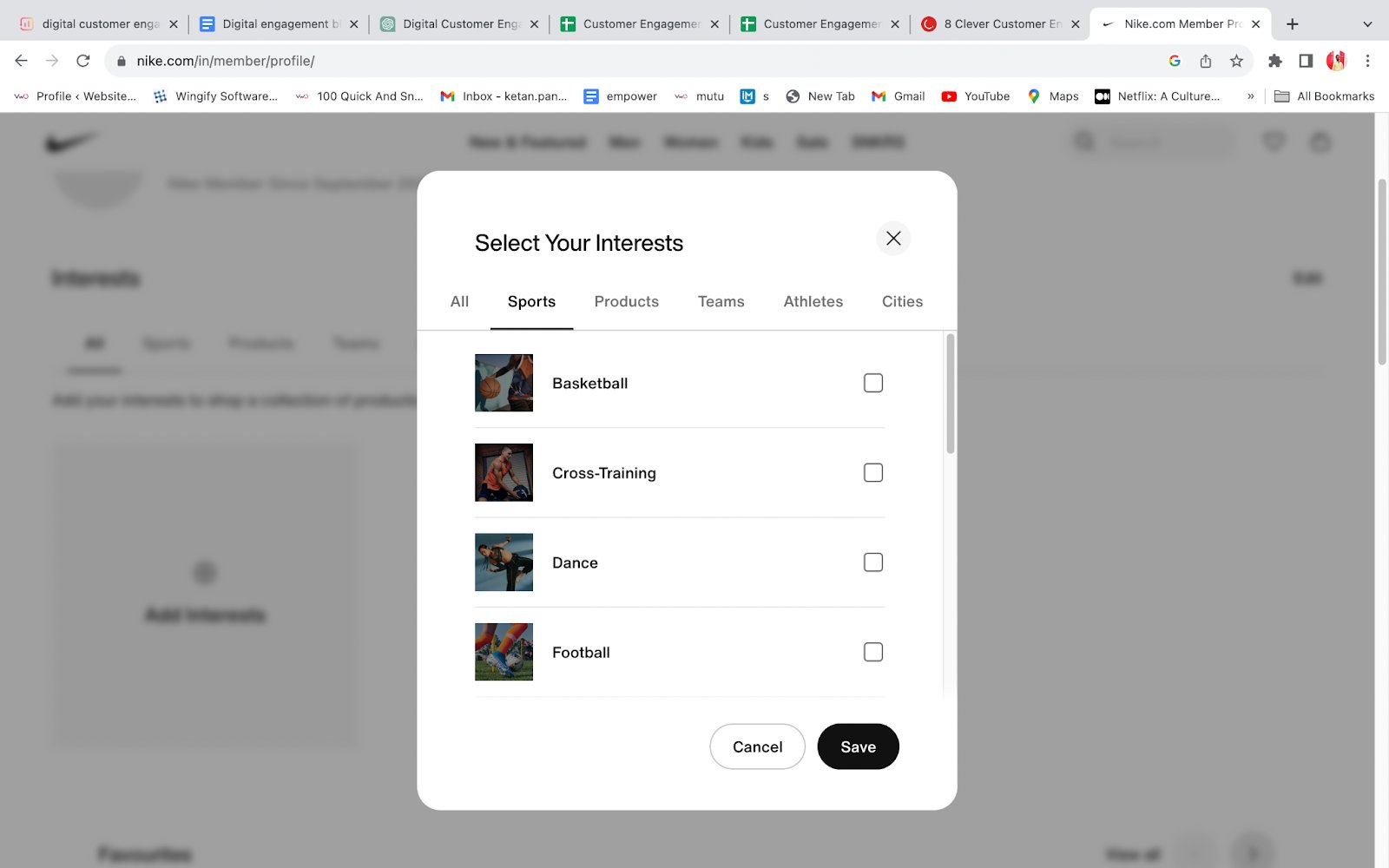
Once you’ve made your selection, the magic happens. Nike’s platform serves up a curated selection of products that match your chosen interest. It’s like having a virtual shopping aisle customized just for you. This approach makes the browsing experience not only convenient but also highly engaging.
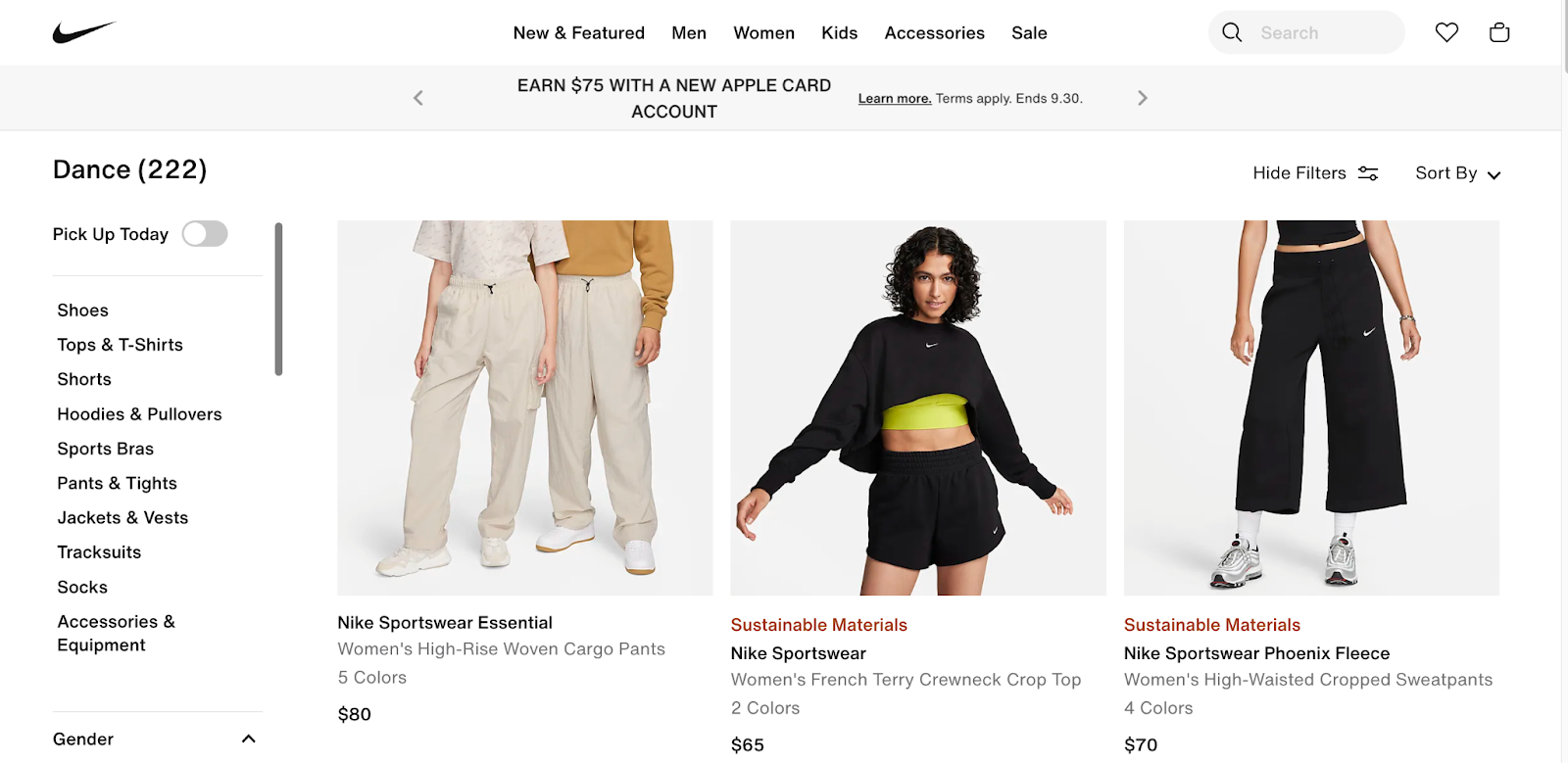
Customers can explore products that align with their passions and preferences, creating a sense of connection with the brand that goes beyond just making a purchase.
IMB Bank
One of the best banks in the world, IMB Bank, wanted to improve customer engagement on its digital platform. Recognizing the need to enhance its digital customer engagement, this global banking giant utilized VWO.
IMB Bank began its journey by analyzing the user journey on its digital platform. Through funnel analysis, they uncovered a significant bottleneck – approximately 37% of users were dropping off at the first page of their personal loan application form. Armed with this insight, they decided to roll up their sleeves and launch an A/B test using VWO.
The existing personal loan application form page (control) was tested against a variation. The variation introduced several strategic elements, including highlighting unique selling propositions (USPs), showcasing awards, mentioning the time taken to complete the steps, enhancing the overall form design for easier navigation, and providing clear instructions at each step to enhance user clarity.
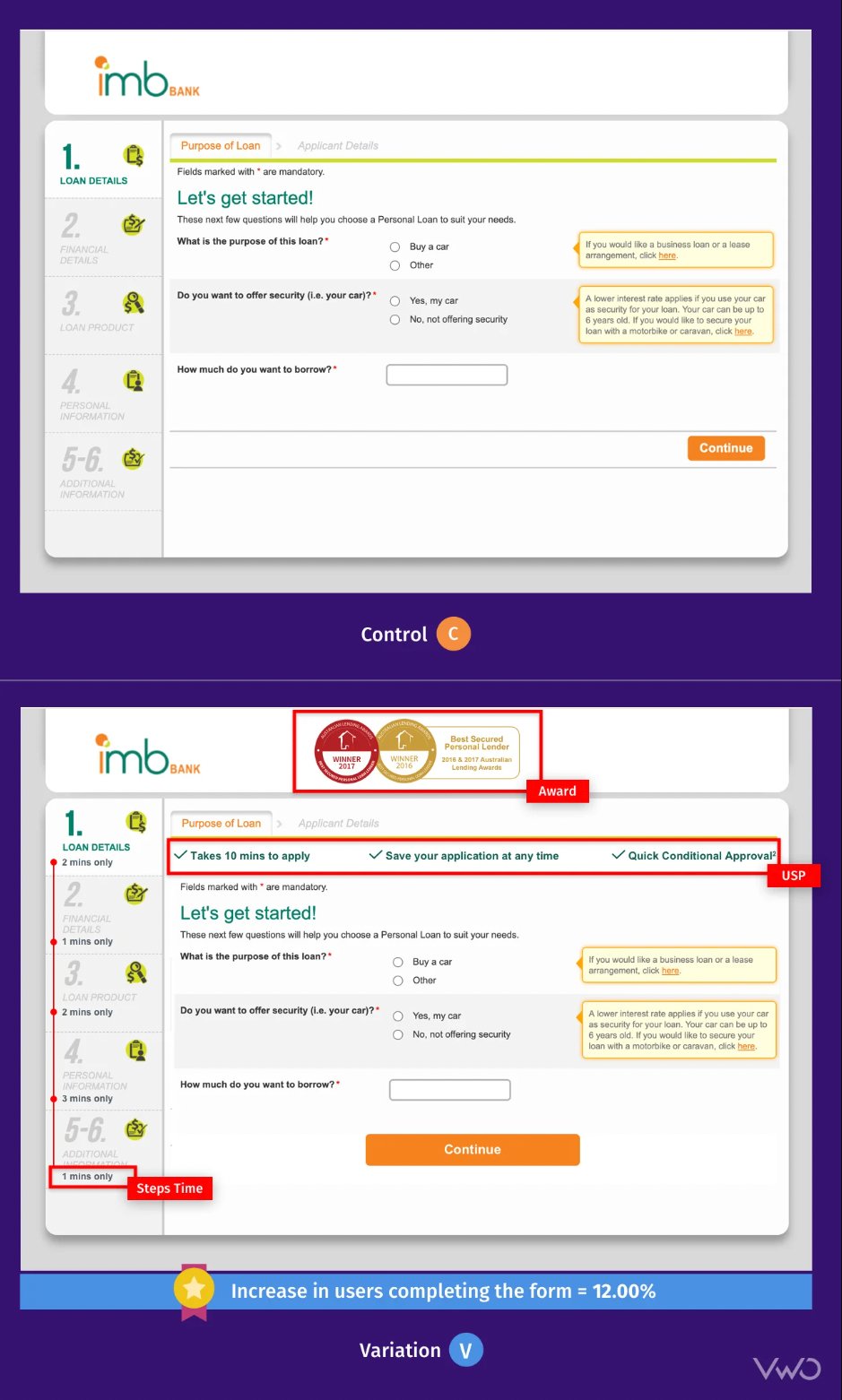
The results? A 9% increase in users completing the form.
IMB Bank’s success story with VWO is a shining example of how leveraging digital engagement strategies can yield not only higher engagement but also impressive conversions.
Spotify
In the ever-evolving world of digital music streaming, Spotify orchestrated a brilliant strategy known as “Spotify Wrapped” back in 2016 that has become music to its users’ ears. This annual campaign is a testament to the power of personalized engagement.

Spotify Wrapped offers users a delightful recap of their year in music and podcasts, presenting a customized list of their top tunes and most-played podcasts. It’s like a musical journey down memory lane, perfectly tailored for each user. Also, users can easily share this recap on their social media platforms, igniting discussions and fostering connections with friends.
This campaign isn’t just about celebrating the music; it’s a digital engagement masterpiece. By curating a unique experience for every user and encouraging them to share their musical journey, Spotify not only engages its audience but also creates a sense of community.
Spotify Wrapped has become a yearly tradition that users eagerly anticipate, strengthening their bond with the platform. It’s a shining example of how personalization, user-generated content, and social sharing can drive digital customer engagement.
Digital customer engagement trends in 2023
After 2020, brands are finding new ways and deploying new technologies to acquire, engage, and retain customers. Here are three major digital engagement trends to watch in 2023.
Generative AI
In 2023, companies will be using Generative AI to transform digital customer engagement. From personalized content and recommendations to innovative chatbots and product design, Generative AI is redefining the rules of engagement.
Thanks to Generative AI, companies can analyze data streams such as purchase history, browsing behavior, and social media activity to curate content and recommendations that cater to individual interests and preferences. For example, Netflix uses generative AI to recommend new movies and TV shows, and Amazon uses it to generate personalized product recommendations for its customers.
Moreover, conversational AI and chatbots powered by Generative AI provide 24/7 customer support, answering inquiries and collecting feedback naturally and engagingly. These AI-driven interactions create a seamless and personalized customer journey.
Augmented Reality (AR) and Virtual Reality (VR)
AR and VR technology create immersive experiences that blend the digital and real worlds. AR adds digital elements to our physical surroundings, while VR transports users to entirely virtual environments. Businesses are using this technology in innovative ways. For instance, furniture companies are allowing customers to virtually place new furniture in their homes using AR. Clothing brands are enabling customers to try on outfits in a digital mirror.

AR/VR is also revolutionizing customer support. For example, a car company can use AR to allow a customer service representative to see what a driver is experiencing through their windshield, providing real-time instructions to troubleshoot an issue. These technologies offer a unique way to visualize products, fostering a deeper connection between customers and brands.
Hyper-personalization
Hyper-personalization is all about delivering unique, tailored experiences to individual customers by leveraging data, analytics, AI, and machine learning. It helps redefine digital customer engagement and keeps customers coming back for more.
Businesses collect a wealth of data, including demographics, purchase history, browsing behavior, and social media activity, to fuel hyper-personalization. This approach serves as a dynamic catalyst for digital customer engagement by delivering relevant, captivating content. For instance, retailers can send personalized emails suggesting products based on past purchases, while streaming services recommend content aligned with viewing habits and preferences.
Hyper-personalization nurtures stronger, more personal relationships by demonstrating a profound understanding of individual needs. It’s a game-changer for businesses looking to stand out in a crowded market and build loyal customer bases.
Watch the webinar to learn more about personalization:
Conclusion
In the fierce competition to stay at the top of the business, the ability to establish personal, timely, and relevant interactions with your customers is essential for distinguishing your brand. It requires demonstrating not only a deep understanding of your customer’s unique needs but also having the right products and services to meet those needs.
Digital customer engagement is not simply a technological undertaking to experiment with; it is something that enables you to develop strong relationships with your customers, foster meaningful engagement, enhance your cross-channel marketing efforts, and maximize your return on investment to unprecedented levels.
FAQs
Engaging customers on websites, apps, chatbots, social media platforms, emails, and webinars are considered different types of customer engagement in digital marketing.
The benefits of customer engagement in digital marketing:
a. Builds strong customer relationships and loyalty
b. Drives growth and revenue
c. Increase customer lifetime value
d. Create a hyper-personalized experience for each user
Here are steps to create a strategy:
a. First analyze your digital touchpoints and their conversion rate.
b. Build a strategy that includes methods like web experimentation, introducing chatbots, etc. that suit your budget and needs.
c. Make a list of technologies and tools that can help your digital engagement strategy.
d. Start with the execution on a pilot level before expanding it to the complete website.
It depends on the type of channel that you use to engage. However, your aim should be to create a personalized experience irrespective of the channel.
Monitor key metrics like website traffic, social media engagement, email open rates, customer satisfaction surveys through NPS and feedback, and your company’s north-star metric. These indicators help gauge brand awareness, customer interest, and loyalty. Also, tailoring specific metrics to your business goals, such as conversion rates for sales, is crucial. Regular tracking of these metrics allows you to assess your strategy’s effectiveness.
You must have started with lots of questions (related to the use case, budget, impact, etc.). Then, there is a very high probability that at each stage of the buying process, you must have come across some content that answered a doubt and let you move forward. In the end, you must have chosen the tool that resolved all your doubts.
Content is like a signpost that leads you to the destination while moving on an unknown path. On that unknown path, you followed the signpost that made things clear for you. Similarly, your potential client is also moving on that unknown path. So, do you want to build signposts that will appeal to them?
If you’re interested in building content that will brighten your potential client’s path to the destination, we have six B2B content ideas for you. Each idea includes examples that have leveraged these formats to increase engagement and conversions.

1. Pillar pages
In any successful content marketing plan, pillar pages play an integral role. Essentially, a pillar page refers to an extensive and detailed content piece that delves into a broad topic within your industry or business. It functions as a central hub that connects all the relevant subtopics and content on your website, providing links to and from other pages and content.
Pillar pages should give a comprehensive and captivating perspective on a subject matter. Additionally, they should be visually appealing, user-friendly and incorporate a variety of multimedia elements, including images and text.
Pillar pages work best in improving conversion at the top of the funnel (ToFu). A pillar page can attract more traffic to your site as it showcases expertise, authority, and trustworthiness, which makes content rank higher in SERPs.
Take the example of the pillar page created by VWO on A/B testing.
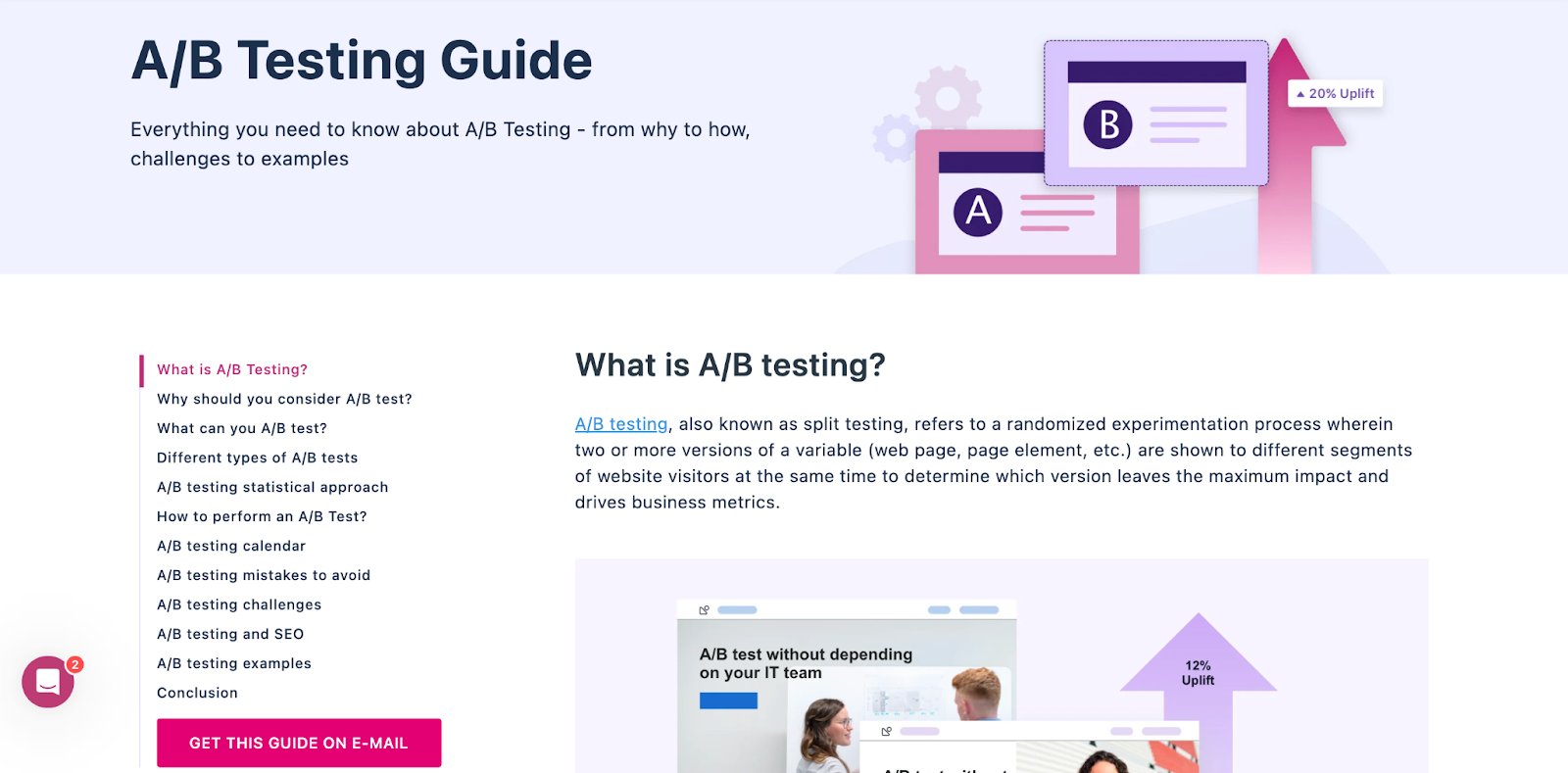
It touches on the broad topic of A/B testing and explains all the related subtopics to make it exhaustive and compelling simultaneously. The guide page showcases a table of contents that makes visitors aware of the content and jumps to a section of interest.
The guide has images and actionable tips, making it visually appealing and easy to digest. Also, a call-to-action to email the guide allows for achieving the objective of generating a lead.
The landing page has achieved a top-five ranking in the SERPS for keywords such as A/B testing, with a monthly search volume of over 10,000 in countries like the USA. This has resulted in a substantial influx of traffic to the page. Additionally, it projects VWO as a thought leader in online experimentation.
That’s the power of pillar pages. Though it takes significant time and effort to create these, the rewards are worthy of all the input.
2. Visual-based storytelling
In the age of information overload, the human attention span is fleeting, and your content strategy must include modern content delivery mediums based on visual storytelling. Content formats like Google Web Stories, short videos, and video series are becoming popular as they are visually appealing and quick to consume.
Visual-based storytelling does not aim to replace long-form content formats such as pillar pages, guides, landing pages, and blog posts. Instead, it offers a distinct approach to engaging with audiences by conveying content concisely and narratively. This unique mode of storytelling can be highly effective in enhancing brand awareness and expanding the reach to a broader audience, which in turn increases the conversion at the ToFu.
Mailchimp is one of the leading players in the email marketing and marketing automation space that incorporated visual base storytelling with its Mailchimp Presents initiative.
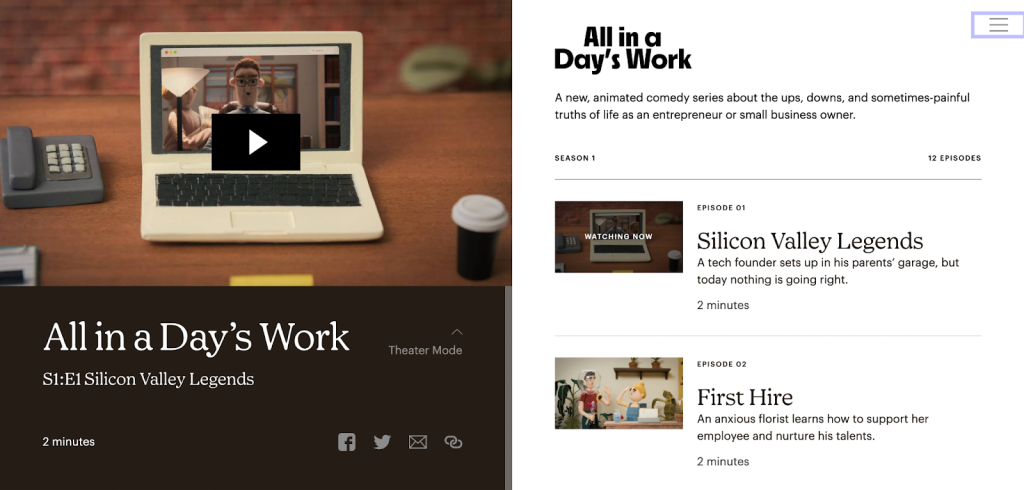
Mailchimp Presents shares content related to entrepreneurial spirit via video and audio-based content. The video series and films engage the audience with stories and motivate them to be entrepreneurial. The subtle CTAs to Mailchimp offerings promote the brand and how it can help businesses scale up.
Such initiatives bring a fresh perspective to the brand’s outreach initiatives rather than just promoting links to new blog posts. Though such initiatives require significant capital and human resources investment, a small business can start with other visual-based mediums like Google Web Stories, YouTube Shorts, etc.
3. Webinars
A webinar is an incredibly engaging and powerful way to communicate ideas, share knowledge, and build connections with your audience. A survey in 2021 that included 115 marketing practitioners concluded webinars as the most effective ToFu demand generation tactic.
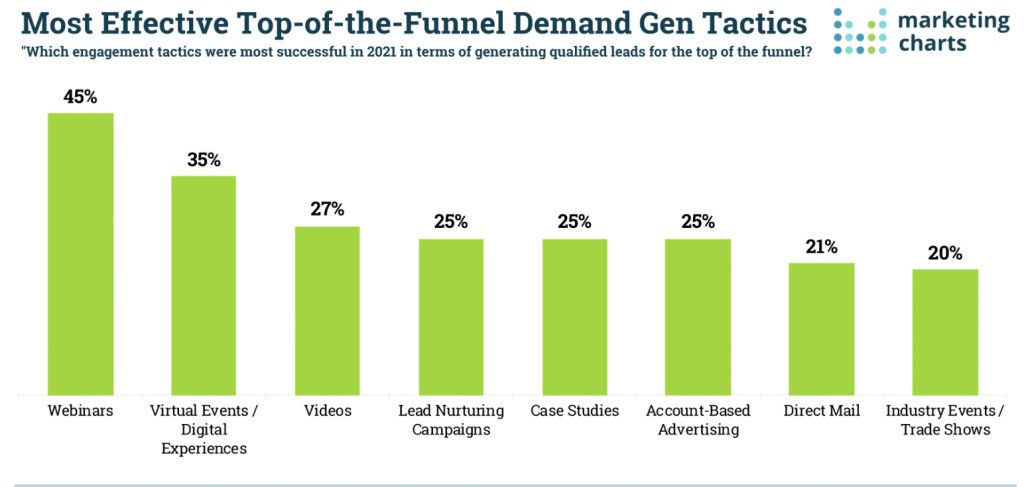
Additionally, webinars are one of the few strategies where there is two-way communication between you and your audience. Many companies conduct ask-me-anything (AMA) webinars to resolve doubts and questions related to the product, which helps increase the conversion rate at the middle of the funnel (MoFu).
By bringing in guest speakers and thought leaders from your domain, you can capture your listeners’ attention and draw them in, helping them to connect with your content on a deeper level. Also, by incorporating personal anecdotes, case studies, and examples from your own or other brands’ experiences, you can bring your content to life and inspire your listeners to take action.
For example, CNBC organized a @work Spotlight Series event in 2020 for CXOs on changing business scenarios and leveraging technologies at work.
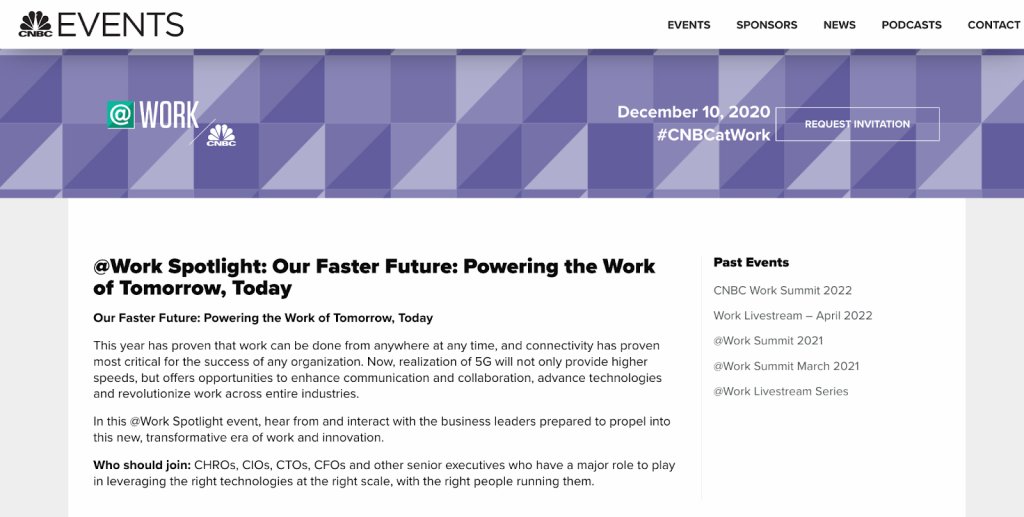
The virtual event series featured esteemed guest speakers from Fortune 500 companies, offering invaluable insights to participants. With an intuitive and engaging experience, including targeted breakout rooms, the event fostered dynamic two-way conversations between attendees and guests.
The results were remarkable, with over 20,000 average views on weekly live streams and a staggering 1 million unique visitors to CNBC’s Digital Events Hub, showcasing the event’s widespread success.
4. Case studies
In the B2B realm, case studies serve as a powerful medium to highlight the positive impact your product has brought to your clients. They also serve as compelling evidence for potential clients to evaluate your product based on the tangible results achieved by competitors or players within the same industry.
Case studies are a collaborative effort between your company and your clients, and the data presented in them must be accurate and genuine. Exaggeration or understatement can lead to legal implications, which is why case studies are considered a highly reliable source of information for companies to assess the effectiveness of a product.
Take the example of VWO’s Success Stories.
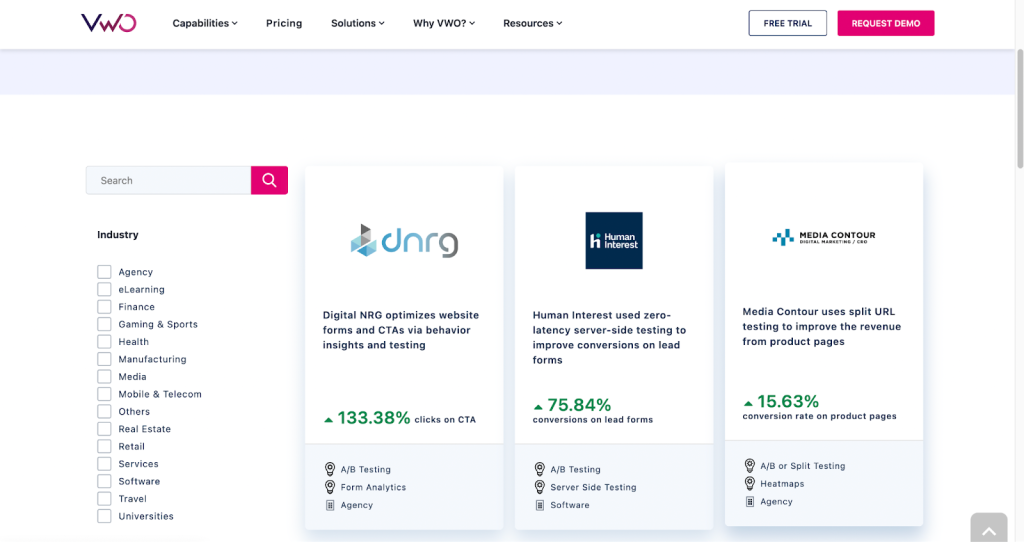
The success story landing page indicates the brand name, industry, utilized VWO product, and improvement in the conversion metric.
It allows a potential customer to easily skim through the numerous success stories, identify their industry, and report uplift before delving deep to get more information. Additionally, it enables the sales team to share relevant case studies while they are conversing with a potential client to finalize a deal.
Thus, case studies aid in giving a final nudge to a client to buy the product, as they showcase the product’s potential and answer doubts related to the product’s performance. Which helps in converting leads from the bottom of the funnel (BoFu) into clients.
5. Online courses
Online courses have become increasingly popular over the years and for good reasons. Many companies offer paid and free courses to increase brand affinity, revenue, customer retention rate, and project domain expertise.
A good online course targets a specific topic catering to a specific user segment. It enables learners to delve deep into the topic and equips them with valuable knowledge. An online course should clearly outline its duration, prerequisites, a comprehensive table of contents, and expected learning outcomes.
Online courses are efficient in converting leads at the ToFu by providing domain-specific courses and at the BoFu by providing product-related courses.
Take the example of HubSpot to understand the power of utilizing online courses as part of the content strategy.
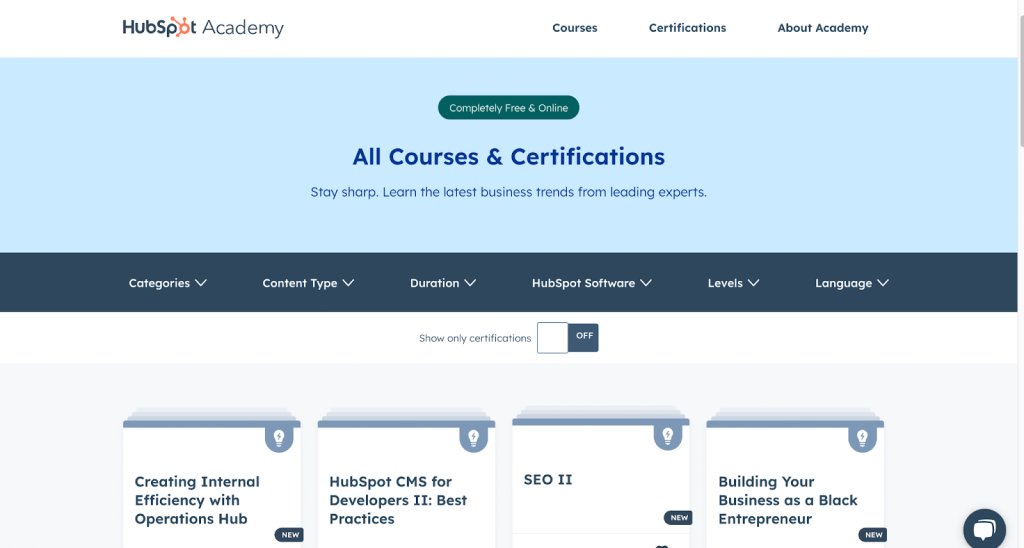
HubSpot offers a wide range of online courses that include certification programs related to marketing/sales and training programs on the HubSpot Product stack. Here is how it has helped Hubspot:
- Established HubSpot as a thought leader in the marketing and sales space. Which in turn, enhanced brand reputation and credibility.
- Lead to higher customer satisfaction and retention rates because training courses offered on HubSpot Academy have helped customers achieve their marketing and sales goals using HubSpot’s products.
- Enabled a partner ecosystem, which includes agencies, resellers, and integrators, by offering partner-specific training and certifications. It has helped partners gain expertise in using HubSpot’s software and services, enabling them to deliver better results to their clients and drive business growth.
The utilization of online courses has been instrumental in creating an ecosystem where HubSpot clients and partners receive comprehensive training to maximize their return on investment (ROI).
As a potent medium for delivering valuable content, online courses have played a pivotal role in building a loyal customer base, fostering customer success, and enabling partners to deliver exceptional results using HubSpot’s offerings.
6. Whitepapers
A whitepaper is a detailed and comprehensive report that focuses on a particular topic. It aims to present a problem and its solution in an unbiased and convincing manner. Unlike promotional materials, a whitepaper does not endorse or criticize any company. Its main purpose is to educate rather than sell products or services. Normally, whitepapers are around 10 to 15 pages long and offer an authoritative perspective on the subject.
The structure of a whitepaper comprises several sections, including a title, an extensive summary, a table of contents, an introduction, an overview of challenges, proposed solutions, recommendations, a concluding statement, a brief company background, and a call-to-action (CTA).
A whitepaper by The OpenGroup on cloud computing can serve as a great guide to understanding how a whitepaper is written and structured. This whitepaper focuses on building Return on Investment (ROI) in cloud computing. It begins with an executive summary and an introduction that outlines the context and existing challenges. The subsequent sections delve into specifics, including financial value and ROI models. These insights are designed to assist you in maximizing ROI from cloud computing. The whitepaper concludes with a summary, references, and acknowledgments.
Notably, it incorporates factual information and statistical data to establish credibility and underscore the expertise of The OpenGroup. The entire whitepaper educates you and elevates your knowledge about the topic without being promotional, which is the purpose of this content format.
Whitepapers are created to establish expertise and cultivate trust within the industry. Positioned at the initial stages of customer engagement, they provide valuable insights and help generate potential leads. Importantly, whitepapers offer informative solutions without directly promoting a product or service.
Boost content performance with VWO
It’s not enough to just create content and never look back. In order to truly optimize your content and improve engagement, you need to take a data-driven approach.
It means understanding how visitors interact with your content, identifying areas for improvement, and A/B testing to ensure that your content is not only high-quality but also effective in achieving your goals.
VWO enables you to enhance conversion rates by monitoring and optimizing your content. One common use case is to utilize VWO Insights to analyze the scroll depth at which the majority of users exit high-traffic content formats such as pillar pages and blog posts.
A scrollmap looks like this:

Once you know the scroll depth where most users are leaving, you can utilize VWO Testing to test how adding an image or interactive element can improve the conversion. Additionally, you can move important elements like newsletter sign-up above the point.
Furthermore, VWO Insights provides access to useful data like heatmaps, session recordings, and survey responses, which can aid in understanding visitor engagement with your content, enabling you to generate data-driven hypotheses. You can then optimize your content by conducting experiments with VWO Testing.
Grab a free trial of VWO and learn how to improve important media conversions like social media shares, email-ups, user duration, etc.
Tying it all together
To conclude, these six content ideas can play a significant role in improving conversion rates at different stages of the sales funnel.
The pillar pages provide comprehensive information on broad topics and bring traffic from organic sources, while visual-based storytelling engages audiences and increases brand awareness.
Webinars build connections and offer a two-way communication platform, case studies highlight a product’s positive impact, and online courses foster an ecosystem of thought leadership along with a loyal consumer base. While whitepapers help you build trust, showcase authority, and generate leads at the top of the funnel.
Although it requires significant resources and effort, the results are undoubtedly worth it in the long run.
]]>If yes, then you will agree that training is a very important component of outdoor sports. The training simulates the real scenarios of the game to identify shortcomings and make improvements. Yet, its benefits extend beyond mere performance enhancement, as it also facilitates learning in areas such as nutrition and psychology, ultimately leading to an overall improvement in one’s sportsmanship.
Similarly, conducting online experiments is like training your digital property. It not only enhances your conversion rate but also provides valuable opportunities to gain insights into various facets of the digital landscape, resulting in the overall growth and development of your company.
Don’t believe it?
In this blog, we have aggregated five real-life examples to showcase how experimentation induces learning related to various aspects impacting your visitors’ digital experience like content, conversion funnels, experimentation approach, and design.
Let’s begin.
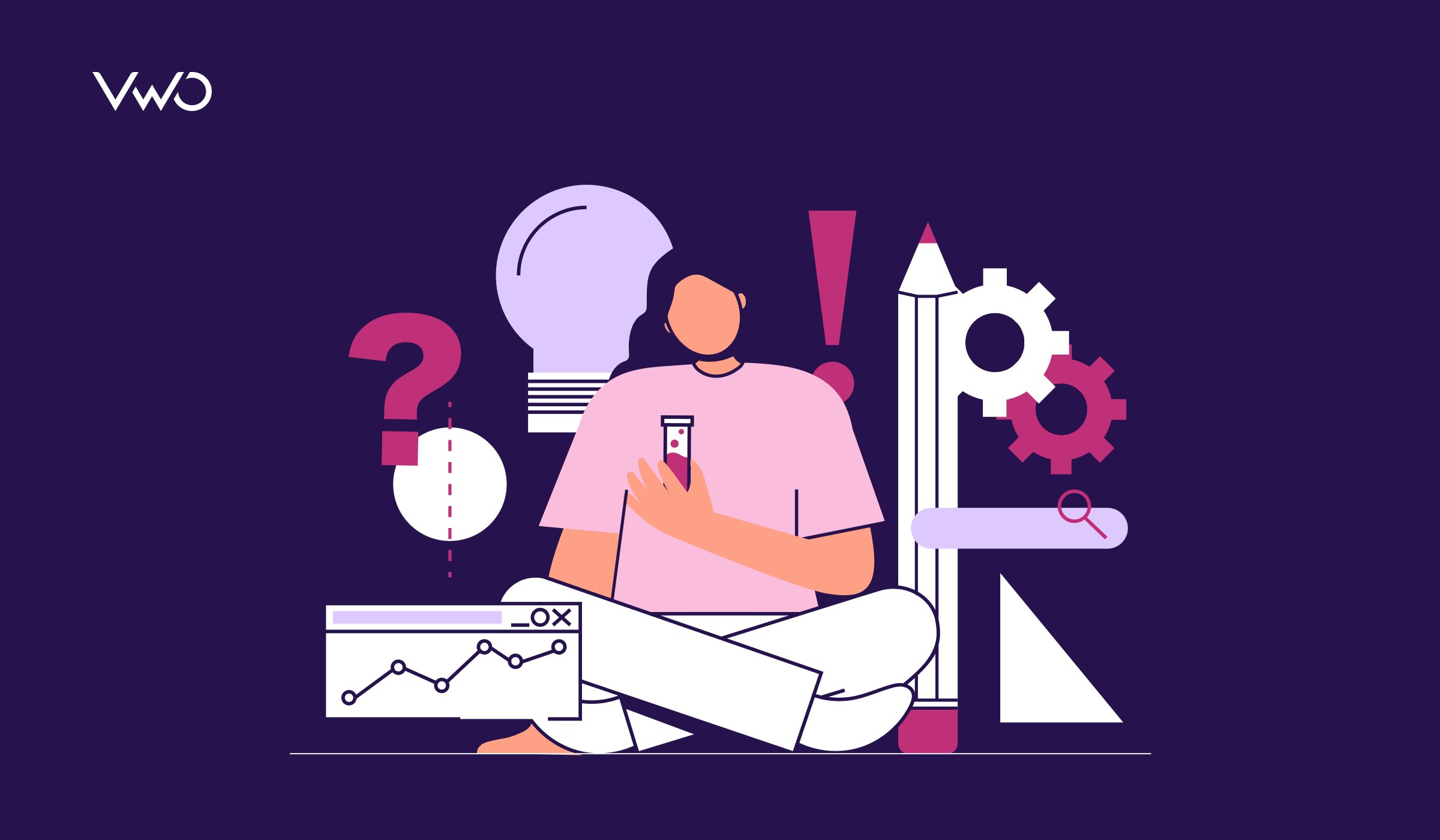
1. Dell Technologies
Dell Technologies, a technology giant, places significant emphasis on experimentation. The company’s commitment to this practice is exemplified by CEO Michael Dell’s occasional communication with the Digital Analytics team regarding ongoing tests. Experimentation has not only made a positive contribution to the multi-billion dollar revenue, but it also has induced some learnings for the company.
In one of the fireside chats with VWO, Narayan Keshavan, Head of the Design Analytics Team, shared his insights. The following learnings helped them improve their whole experimentation cycle and approach.
a. Don’t follow experimentation trends blindly
In one of their experiments for the website in China, the team at Dell tried to add a promo banner in the Navigation bar, a trend followed by a leading eCommerce website in China. But for Dell, the conversion rates dropped by adding a banner.
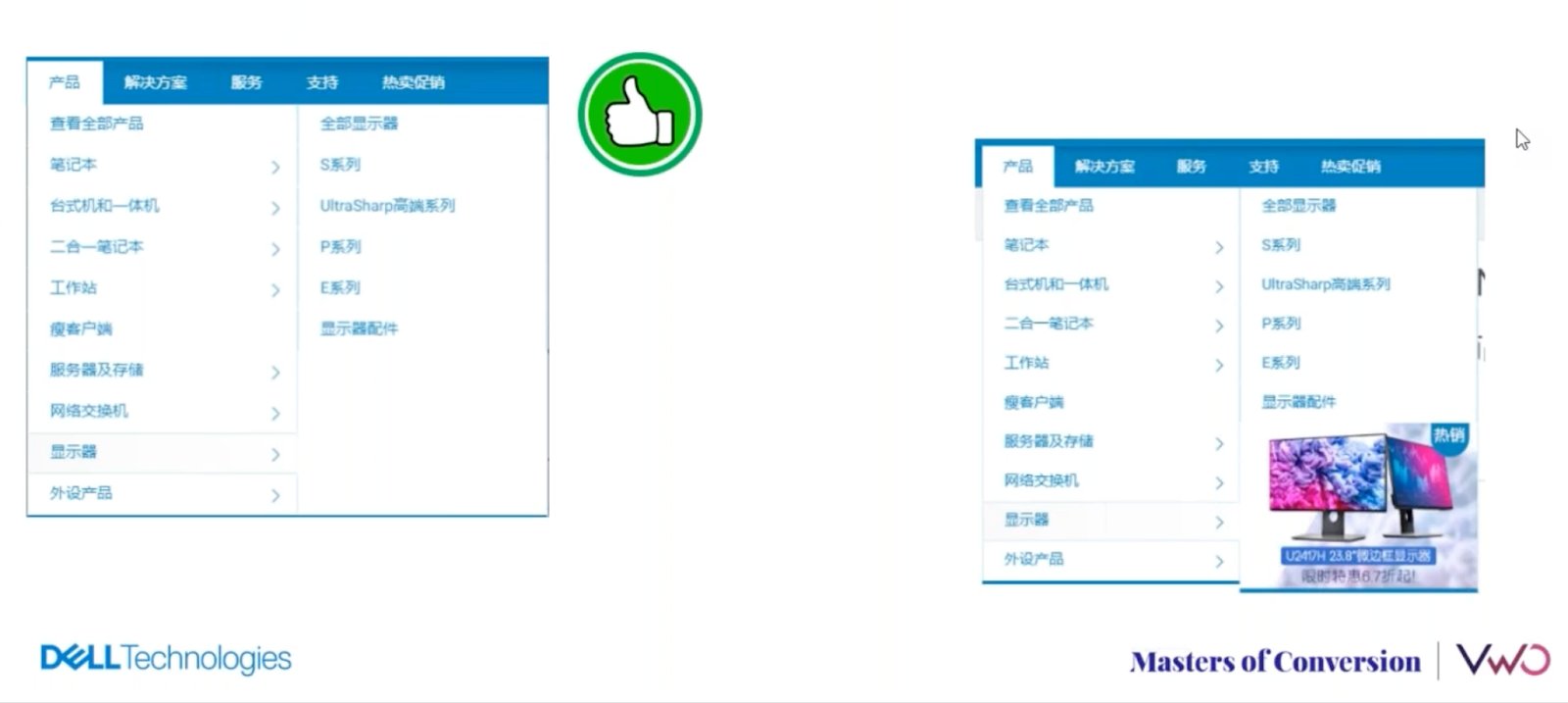
They learned that a trend should be followed carefully as every website is unique, and the user experience analysis should preside over each experiment.
b. Keep a neutral eye on an experimentation idea
The Dell Technologies team found that it’s natural to expect a lift in conversion rate from variations. But, the foundation of the whole effort is to run an experiment and not prove something. Thus, the optimization team must have a neutral approach toward each idea. It helps negate biases while running the experiment and post-analysis of the data.
c. Don’t fall for testing myopia
Testing myopia is a term used by the Dell Technologies team, which means you are so focused on improving a metric that you forget the effect on other metrics.
Let’s say you aim to enhance the Click-Through Rate (CTR) of the primary Call-To-Action (CTA) button on one of your landing pages. You conduct tests using captivating banners and observe a surge in the CTR of the primary CTA. While this experiment may seem successful based on this one metric alone, a deeper analysis reveals that the bounce rate has increased due to a decrease in website speed caused by the banner’s size. As a result, even though the conversion rate has improved from people who engage, many visitors are leaving the site without engaging because the page takes too long to load.
Therefore, it’s crucial to take a holistic approach to experimentation and analysis instead of obsessing over a single metric.
Watch the complete webinar:
2. Uber Eats
Uber Eats started its operation in South Africa as an online food delivery service. But can you imagine that it is now a virtual mall that sells jewelry, clothing, and other accessories? Here is the screenshot of its product page:
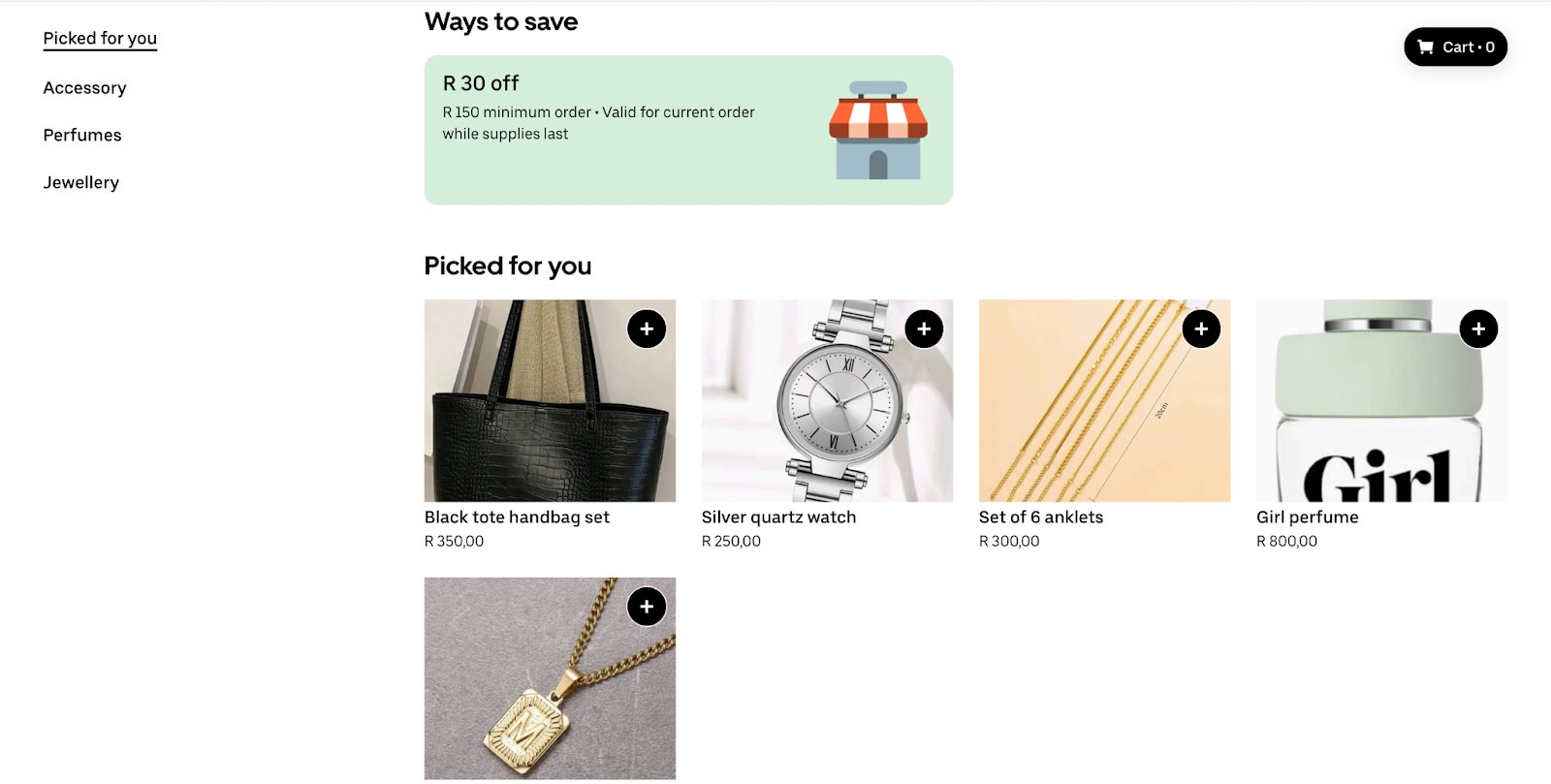
Starting with the food delivery and diversifying to become a virtual mall happened because of experimentation. Uber Eats in South Africa has ingrained a culture of experimentation, where they depend less on market research and more on experimentation in the real world. Experimentation has allowed Uber Eats South Africa to grow 149% month-on-month in its non-restaurant vertices.
Here is what the experimentation taught them and facilitated expansion outside food delivery.
a. A tool with an easy setup and automation enhances the experimentation culture
Uber Eats’ team recognized that a simplified experimentation setup means less dependency on development and fewer entry barriers, which motivates team members to partake more in experimentation. Also, by automating post-analysis and deploying the winning variation, the workload on the team is reduced, which speeds up the experimentation rate. It collectively promotes a culture of experimentation within the company.

b. It’s important to take time while creating a hypothesis
The hypothesis is the foundation of the experimentation, and even simple-looking tests might turn complicated if there is a fault in the hypothesis. A hypothesis must be based on data insights and behavioral analysis. Also, the hypothesis must specifically mention the website element that needs to be tested and the expected improvement that you expect at the end.
For instance, if a CTA button on a landing page with a low conversion rate is identified through heatmap analysis to have fewer clicks and less attention, changing the button color to make it more prominent could be a potential solution. In this case, the hypothesis could be: “Changing the color of the CTA button to X color will result in a Z% increase in conversion.”
In addition, the team at Uber Eats advocates for testing one hypothesis at a time with various methods like A/B testing and Multivariate testing rather than testing multiple hypotheses with the same method to achieve better results.
3. MakeMyTrip.com
MakeMyTrip.com is an online travel aggregator in India that gets 44 million visitors per month. The two-decade-old company has first-hand experience with digital transformation and changing user demands. The experimentation culture has positively contributed to the 64.1% Y-O-Y growth that the company saw in 2022.
In one of VWO’s webinars, Aakash Kumar, head of the user experience at Makemytrip.com, revealed some critical experimentation-induced learnings.
a. Fewer purchase cycle stages don’t necessarily mean more conversion
It’s a general notion that a few stages between awareness and purchase will lead to more conversion. However, the design team at MakeMyTrip.com found something interesting.
Their typical hotel search user flow started with searching for destinations on the homepage, which led to a page with a list of hotels. On clicking a hotel tab, a page opens with a hotel description followed by offered accommodation types. The team noticed that many mobile users who ended up converting were choosing the cheapest room option and there was a low conversion rate for premium rooms.
After conducting a thorough analysis of user behavior and data collection, the team found that the hotel details page’s description was causing users to scroll excessively, leading them to select the first room type they saw after scrolling. To address this issue, the design team introduced an additional step that allowed users to select the room type before completing the transaction.
The whole optimization effort led to an increase in the booking rate for premium room types.
b. Design changes should be gradual and not drastic
Drawing on their decades of experience in experimentation, the design team has discovered that design changes aligned with user needs should be gradual rather than drastic. Following the ideate-experiment-learn cycle during website design experimentation is crucial. Subsequent design changes can be based on the team’s previous experimentation and learnings, which helps to minimize risks and reduce negative impacts on the conversion rate.
Watch the complete webinar:
4. Netflix
Netflix has a culture of experimentation and learning, which helped it transform from a DVD mailing service to a streaming service giant with 230+ million paid subscribers worldwide. Here is what Netflix has learned about experimentation from decades of experience.
a. A successful idea can come from an unlikely source
Netflix has an open culture where anybody can see the running tests and associated results. The naturally low win rate of experiments brings humility and humbleness to the team. It opens up doors for every team member to share ideas and experiment with user experience. There are instances at the company where ideas from experts have failed, but ideas from executives and engineers have brought unexpected wins. The democratization has enabled them to get massive revenue-generating ideas from unlikely resources.
b. A failed experiment in the past can achieve success in the present
Customer behavior and preferences are evolving, and at Netflix, they have found that revisiting past failed ideas and deploying them at present can find success. Sometimes, the analysis of the failed ideas suggests that they may achieve success in the present or the new user group. So creating a repository of each experiment along with its analysis is beneficial to redeploy and find success in the future.
5. Frictionless Commerce
Frictionless Commerce is a 13-year-old digital marketing agency with a focus on enhancing the sales of Shopify websites by utilizing buyer psychology techniques to influence and convert new buyers. The agency has helped 118+ DTC brands and carried out A/B tests for them to improve conversion rates. Here is what the people at Frictionless Commerce have learned about buyer’s psychology due to these experimentations, which can help create copies and headings for landing pages.
a. Showcasing expertise and brand story create a sense of connection
People like to associate with brands who are experts in their domain and specialize in crafting the product or service. Additionally, a brand’s narrative, detailing its origins and the obstacles it overcame, can foster a sense of connection with the visitor and drive them further down the path to purchase.
b. Adding surprising facts can negate the midway quitting
Behavior analysis can help you understand the scroll depth at which most visitors leave. The team at Frictionless Commerce has found that adding a surprising fact at such points can reduce the midway quitting as it gives a burst of energy to a visitor to know more.
c. If doubts are not solved, then the visitor will leave
If a landing page fails to address a visitor’s specific query, they may feel hesitant to trust the product or service being offered. The team discovered that four particular factors – the absence of features, unclear pricing, subpar features, and confusing design elements – can all contribute to a negative perception and generate doubts in the visitor’s mind.
To avoid these pitfalls, marketers should aim to view the landing page from the visitor’s perspective and ensure that any potential doubts or concerns about features, pricing, or design are addressed and resolved through testing.
This learning, along with other insights, helped the company in shaping A/B testing campaigns for their clients.
One of their clients is into selling shampoo bars. The team at Frictionless Commerce carried out an A/B test which was influenced by the above learnings. Here are the controls and variations of the test created with VWO. You can see that the variation is trying to solve a doubt that will come naturally to a visitor’s mind.
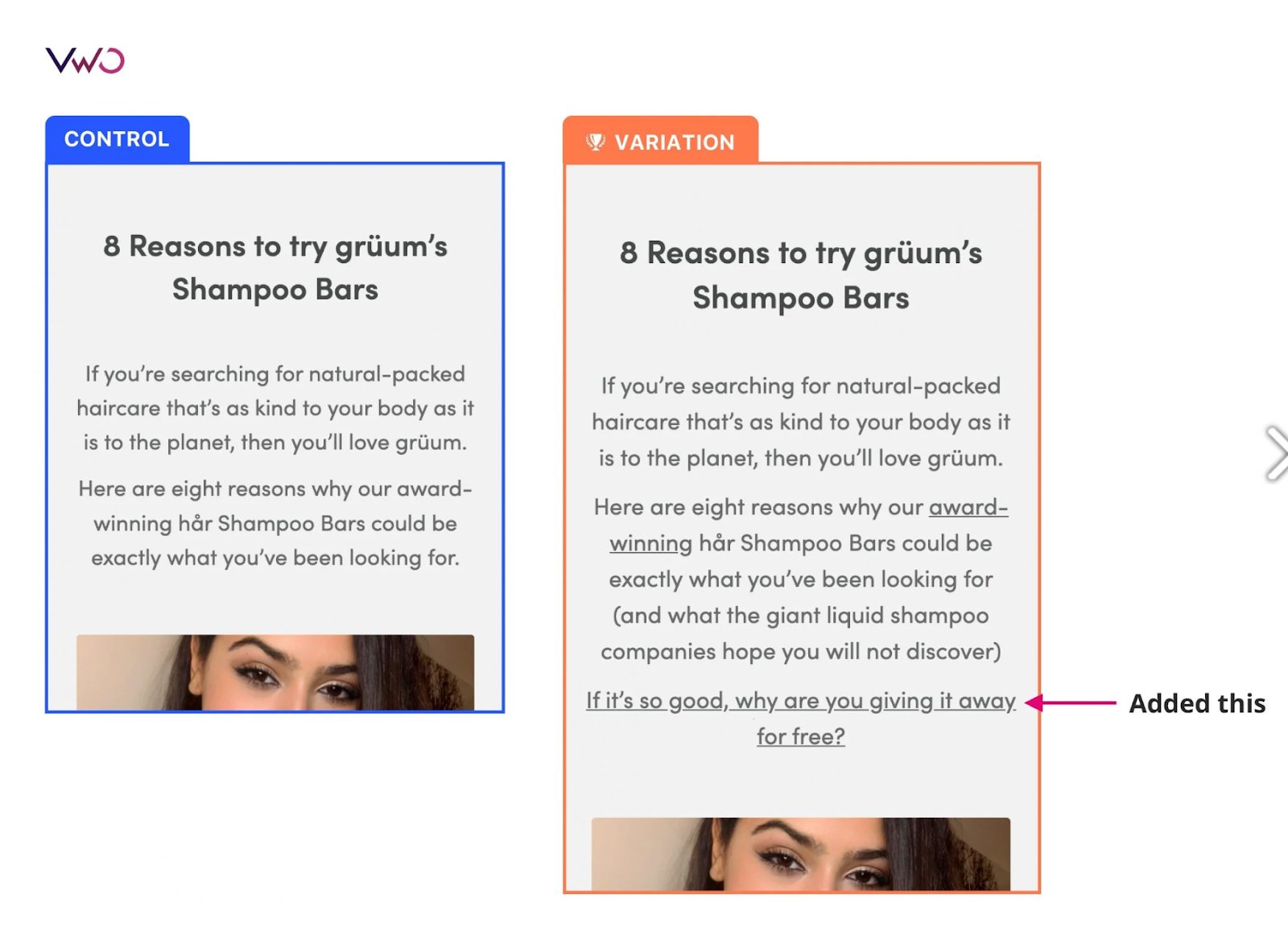
The test resulted in a 5.97% increase in the number of orders.
Begin your experimentation journey with VWO
The five examples show that experimentation not only enhances the conversion rate but also generates valuable insights that can lead to new user experiences, business ventures, and cultural shifts, ultimately propelling the company to greater heights.
Also, we saw in the case of Uber Eats, one of the key contributors to success is the availability of a user-friendly experimentation tool that enables the rapid scaling of experimentation efforts.
However, choosing an experimentation tool is not an instant decision. You have to evaluate the compatibility with your business and get hands-on experience with the tool before spending a buck.
To facilitate this process, we have created a 30-day free trial that provides full access to all the offered capabilities without any financial obligations.
So, If you are new to experimentation or considering a switch from your current setup, we recommend reading our detailed guide on VWO’s free trial, which provides complete information about working with the world’s leading experimentation platform.
]]>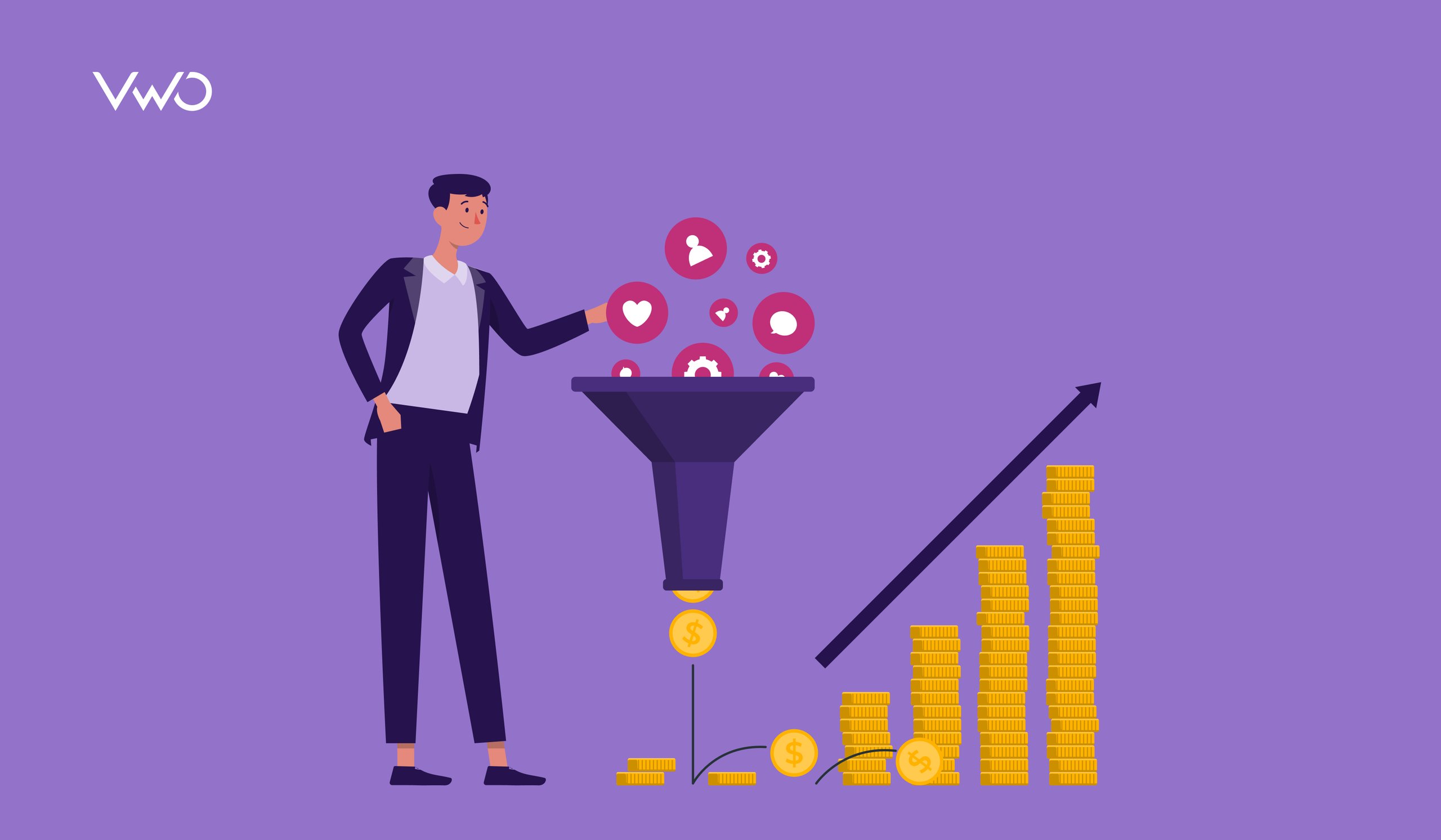
What is a value center?
A value center is a crucial component of a business. It is a function, a team, or a department that plays a vital role in boosting the company’s profit. A value center brings tangible benefits to the organization by optimizing costs, generating revenue, or even doing both at the same time. Moreover, a value center identifies new revenue-generating prospects by exploring new markets, and innovating products and services.
Is CRO a value center?
A cost center refers to a department or unit that does not directly contribute to the company’s profit. In some cases, Conversion Rate Optimization (CRO) is perceived as a cost center since its outcomes may not always yield tangible results in a short period and give occasional failures.
While CRO initiatives can encounter challenges, it is crucial to recognize the long-term value they bring to the organization. CRO can be turned into a value center by leveraging continuous experimenting and optimization of strategies to improve conversion rates and enhance overall organizational performance. Even failures in CRO experiments can serve as a valuable foundation for future success, as they provide invaluable insights and learnings that contribute to creating an experimentation loop.
Moreover, CRO acts as an enabler of efficiency within the business. By testing and refining different elements of a customer’s journey, CRO helps identify and eliminate bottlenecks, streamline processes, and enhance the overall user experience. This, in turn, accelerates growth by maximizing the conversion of visitors into customers and maximizing the value derived from each interaction.
How to make CRO a value center
Let’s understand how to make conversion rate optimization (CRO) a profitable investment (value center) with some real-life examples.
a. Create a CRO cycle to increase revenue
Revenue is the fruit of an optimized visitor journey that starts via landing pages on different devices. Many organizations need to avoid expecting results with few tests. CRO is not a magic wand that will uplift revenue in a single campaign or a few days. It requires constant efforts to optimize each stage of the visitor journey, from the landing page to the checkout page.
For instance, GRENE, an agriculture wholesaler, utilized VWO to optimize the conversion funnel. The company ran a series of experiments for the 2018-19 financial year. The experiments included the A/B testing homepage, checkout page, product section, etc. This whole optimization exercise resulted in a whopping 59.9% increase in revenue. Such a staggering growth in revenue makes CRO the value center of GRENE.
CRO can become a value center when you create a strong hypothesis and identify revenue-affecting elements at each conversion funnel stage. Then, with a constant CRO cycle of testing-learning-optimizing, you craft an optimized conversion funnel that increases revenue. CRO reaps rewards with consistency and not with one-time initiatives.
b. Turn failures into information goldmines
Many companies give up on CRO because of failing to achieve desired goals. However, a failure in CRO is a goldmine of information that can be a foundation for future optimization. Here is one great example of the same.
Uncommon Knowledge, an online education portal, tested its lead generation page to see an uplift in leads. The team at the company created a variation of the lead generation page with new design trends, while the original version had a traditional magazine layout.
At the end of the test, the team found that the old page beat the new one by a 19.55% conversion rate. The optimization efforts were unsuccessful, but the insight from it was a goldmine for the team. It came to their notice that the majority of their target audience is aged 45+.
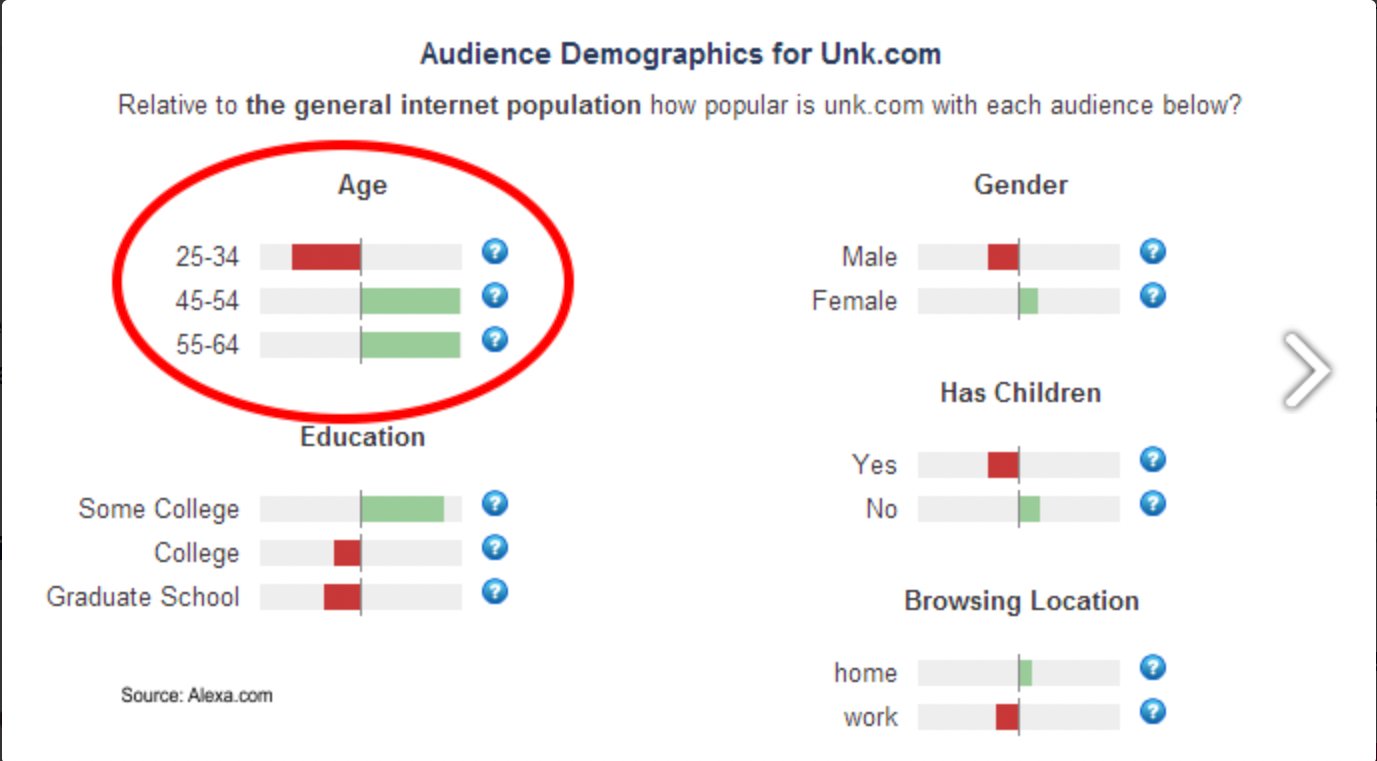
The new design trend was not relevant to the target group, and the failed test validated that relevance is the key to conversion, not the trend. Thus, even a failed experiment can become a foundation for the next optimization effort. So, CRO is a value center, even if you face failures.
c. Run experiments to retain customers
You can increase your website value by constantly acquiring new visitors or retaining returning visitors. But, it’s always easy and more affordable to retain a returning visitor than a new one. That’s why every business is in a race to increase the visitor’s lifetime value, which is the monetary benefit that a single visitor delivers to a company. CRO is a value center because it increases the visitor’s lifetime value.
One example of this is Tele2, a leading Dutch mobile subscription service. They were facing a decreasing subscription rate and wanted to make necessary amendments to uplift it. The team at Tele2 did a detailed analysis and found that adding a filter of mobile brands in the product section can create convenience in the visitor flow. Thus, they ran an A/B with the original page without the filter and variations with it. Here is how it looked:
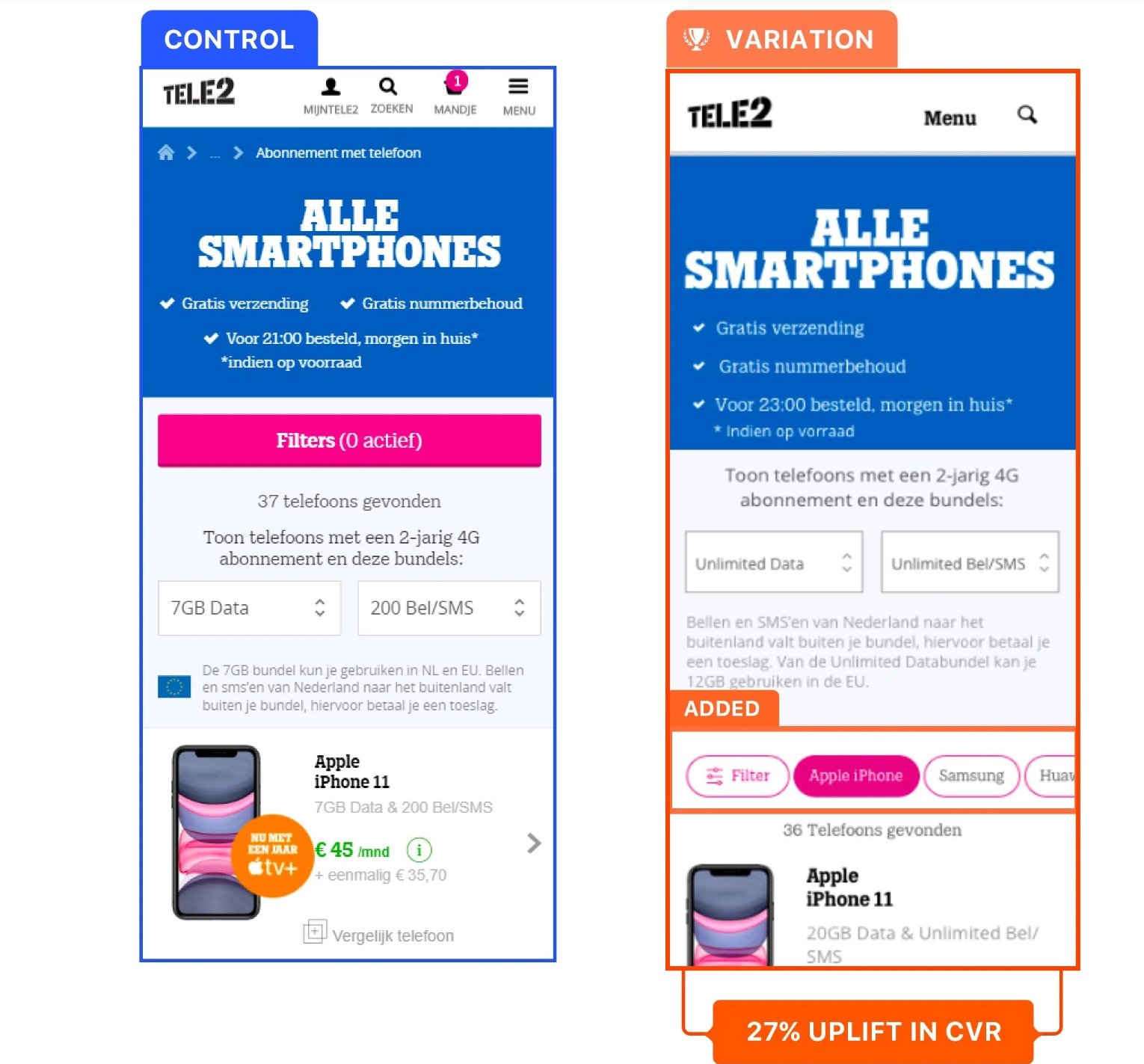
The test ran for 28 days and registered a 27% increase in subscriptions from existing customers. For Tele2, CRO campaigns ensured a positive cash flow from the existing customers. What is more important is that they didn’t stop after one campaign and kept analyzing behavior and experimentation to engage their customers.
In addition, you can run CRO campaigns such as personalized experiences based on past behavior and experiment with cross-selling and upselling tactics to better customer retention rates. Improved retention rates, in turn, result in increased revenue while keeping customer acquisition costs low since fewer resources are needed to onboard new visitors to maintain revenue.
d. Aggregate customer data for hyper-personalized experiences
CRO is now moving towards unifying data from various sources and profiling customers based on it through customer data platforms (CDP). The customer profile can be segmented and targeted for a hyper-personalized experience.
One real-life case study is of Yves Rocher, a global cosmetic brand. Yves Rocher wanted to personalized product recommendations section. The team utilized a CDP to recommend personalized products to new and existing customers. The existing customer got recommendations based on past behavior data, and for new customers, the recommendation algorithm worked on the recent activity.
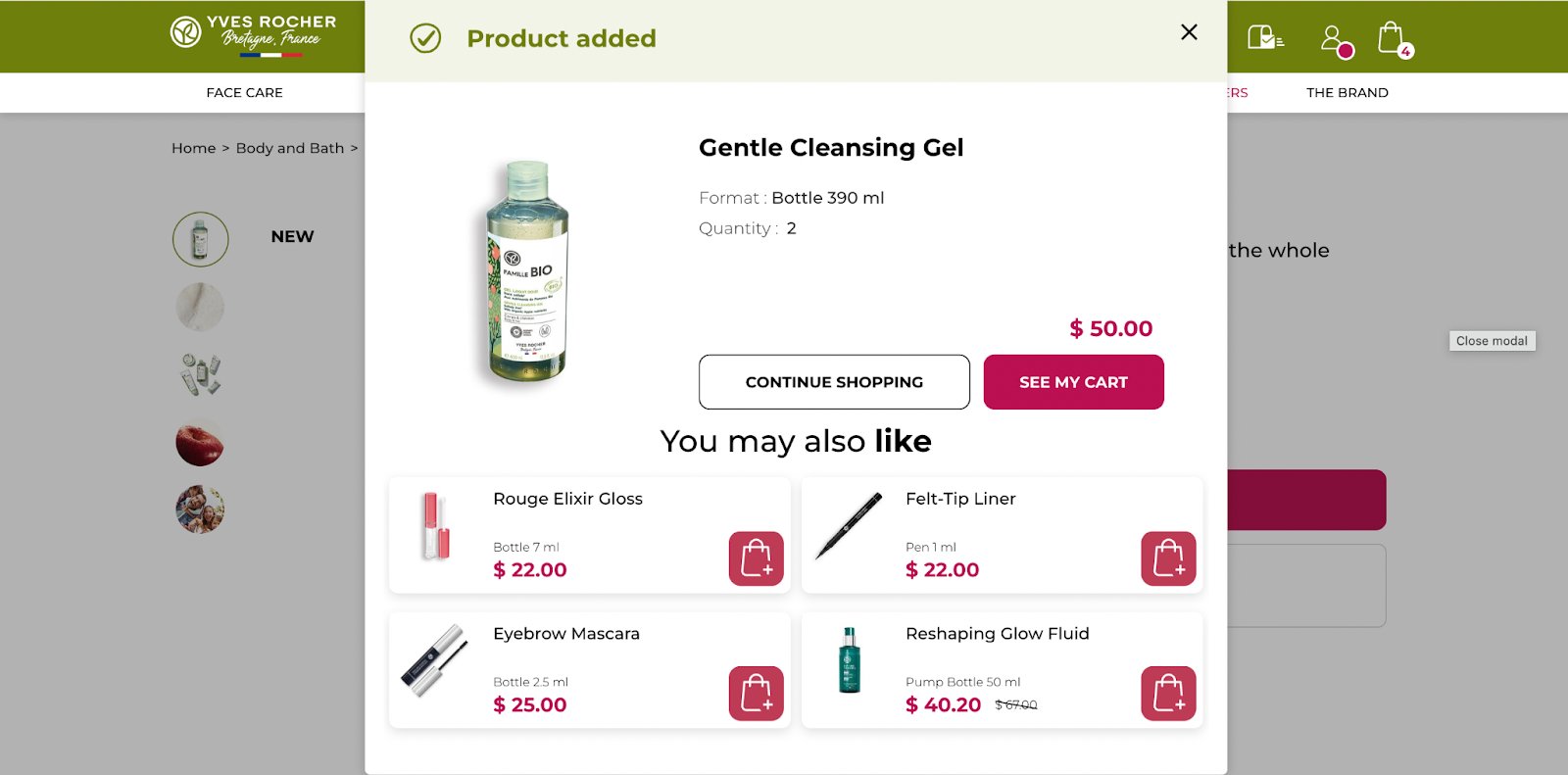
The optimization efforts led to a 17.5x increase in clicks on the recommendation section and an 11x increase in the purchase rate. Thus, CRO efforts get a boost from technological advancement like CDP and become a value center for an organization. So you must leverage this advancement in your favor and move towards creating hyper-personalized experiences to drive more revenue.
Conversion rate optimization with VWO
Over a decade, 2500+ customers have found their value center with VWO.
VWO allows you to understand visitor behavior, experiment with user experience for multiple devices, personalize experiences, and aggregate visitor data for segmentation and targeting. As per G2 Summer 2022 reports, VWO has been named a leader across five categories winning 20 badges.
Once you partner with VWO, you don’t have to go anywhere else for your optimization needs. Here is what one of our clients says:
VWO has been the most comprehensive testing tool I’ve used, and they have the support and services to back it up.
Product manager, Micro Focus
So, multiply your gains with VWO. Get a comprehensive VWO free trial of its complete range of features. VWO also offers a free starter pack for web testing that supports 50,000 monthly traffic. Visit VWO’s plans and pricing to find more information.
Conclusion
CRO (Conversion Rate Optimization) is a value center because it benefits an organization in terms of revenue and directly affects its growth and cash flow.
CRO increases revenue by optimizing each stage of the visitor journey, from the landing page to the checkout page. It also turns failures into information that can be used to improve future optimization efforts. With constant CRO efforts, an organization can increase its revenue, keep customer acquisition costs low, and create a positive cash flow from its existing customers.
Therefore, CRO should be considered an essential investment, and organizations should engage in constant CRO efforts to reap long-term benefits.
]]>You can see that advanced technology did not come out of the blue. It evolved with one advancement becoming the foundation for another.
For instance, the smartphone industry stands on the foundation of numerous technological breakthroughs. From the initial landline telephones, the concept of cordless phones emerged, followed by the integration of mobile communication with computing power.
Over time, we witnessed an evolution from personal digital assistants, such as BlackBerry devices, to the advent of the iPhone, which paved the way for the smartphone industry.
It’s like a loop, where each advancement created new opportunities that, in turn, lead to further progress. The loop has revolutionized our technology because we never left a loose end after an advancement.
What if we followed the same approach toward experimentation on digital properties?
Experimentation can sometimes lift your conversion rate beyond expectations and at times drop even for a promising hypothesis. It’s part and parcel of the process.
But if you stick to a linear approach of closing the test after getting results and move on to test something new, it will rarely give you breakthroughs. You’ll miss out on chances to improve conversion rates and overlook valuable insights for future success. In the best-case scenario, it will plateau your growth rate.
That is why it’s time to move on from the linear approach and take a strategic approach with the Experimentation Loop to realize the true conversion potential of your websites and mobile apps.
But what is an Experimentation loop? Let’s delve into this fascinating concept.

What is an Experimentation Loop?
An Experimentation Loop starts with identifying a problem through behavior analysis and creating a solution in the form of a hypothesis. Then, you run experiments to test the hypothesis. You either win or lose, but with a linear approach, you stop the experimentation cycle here. But with the Experimentation Loop, you investigate the test results to uncover valuable insights. The uncovered insights can derive new hypotheses, which lead to further experiments, creating a continuous cycle of learning and optimization.
Here’s a visual illustration of how the Experimentation Loop works:
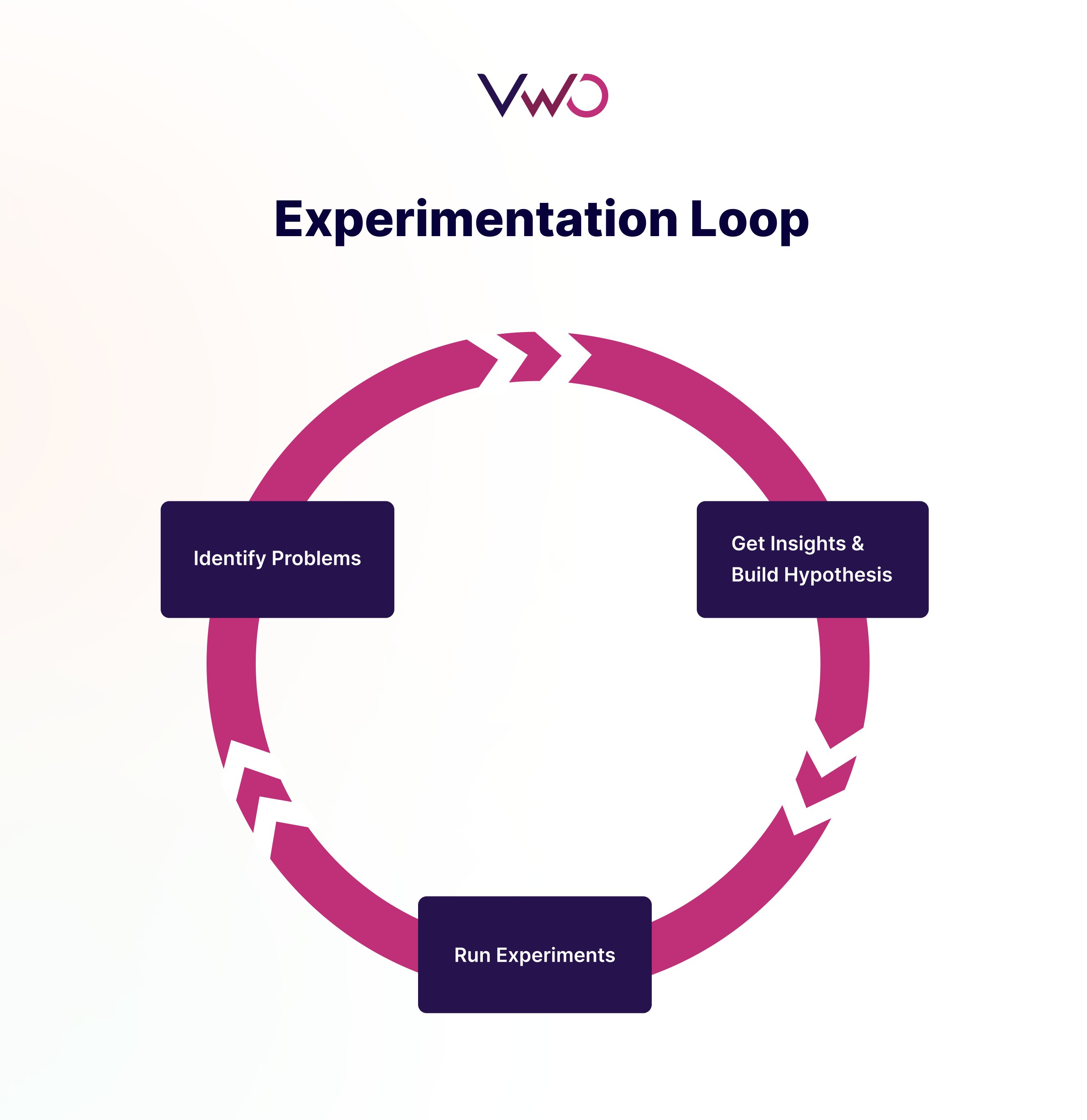
With Experimentation Loops, you are not just stopping at the results but diving deeper to understand the reasons behind the results, identifying anomalies, and discovering if particular audiences (or participants of the experiment) react differently from others. This becomes the foundation for your new hypothesis and experiments.
It is especially critical in today’s ever-changing digital landscape, where user behavior is constantly evolving. By embracing the continuous learning and optimization provided by Experimentation Loops, you can stay ahead of the curve and keep improving your conversion rate.
Understanding the Experimentation Loop with an example
Here is a hypothetical example that explains how the Experimentation Loop functions:
Consider a landing page created with the intent to generate leads. The original version of the page has a description of the offering in the first fold, followed by the call-to-action (CTA) button that will lead to the contact form.
Let’s say that the behavioral analysis of the landing page reveals many visitors dropping off on the first fold. This leads to the hypothesis of adding a CTA above the fold to improve engagement. This way, you create an A/B test to compare the original version and the variation with additional CTA above the fold.
Here is the visual representation of the original and the variation of the landing page:
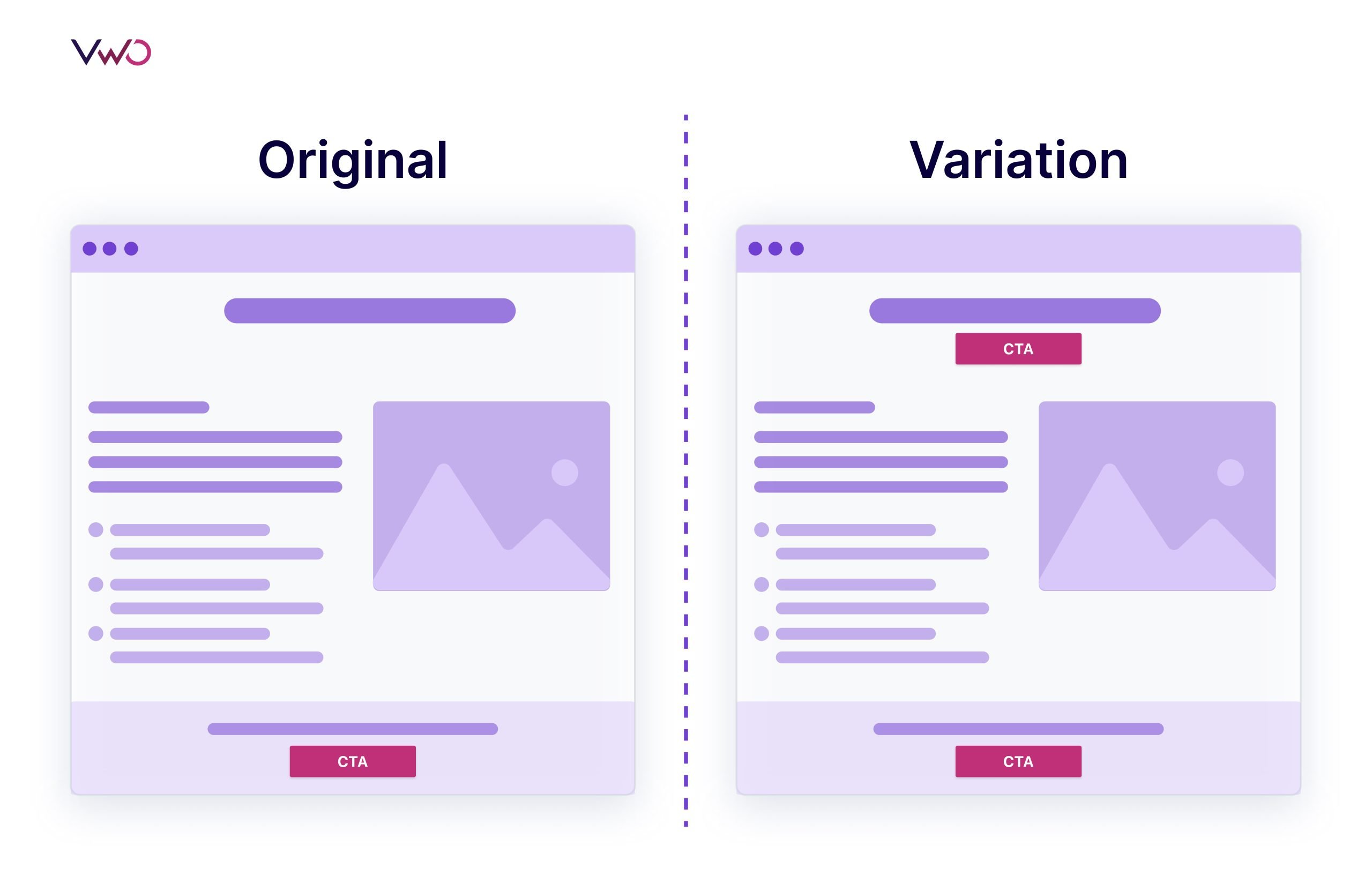
Let’s assume that the test ends with the variation outperforming the original in terms of the conversion rate (i.e. number of clicks on the CTA). Here, the traditional approach concludes the test. But with the experimentation loop, we will try to analyze the results to come up with more hypotheses and open up multiple opportunities for improvement.
Suppose, we zero down on the hypothesis that demands testing the CTA button. Then, the second round will involve coming up with multiple variations of the CTA text and CTA color to optimize the button. Here, to find out the best variation, we can run a multivariate test to compare the original version and multiple variations with different combinations.

At the end of the test, there can be an uplift in conversion, which would have not been possible with the traditional approach. And if the test fails to get an uplift in conversion rate, it will lead to insights that can help in knowing more about the users.
Likewise, we can check the results to know if a particular audience segment engaged with the button more than others (and if they have common attributes) – in which case, it could lead to a hypothesis for a personalization campaign that includes personalizing the headings or subheading before the CTA as per behavior, demographic, or geographic attributes of the segment.
Thus, an Experimentation Loop opens up the opportunity to improve, which is not possible with a siloed and linear approach.
But how can you carry out the successful execution of the Experimentation Loop?
The experimentation loop consists of three steps, and we will delve into each of these steps in the upcoming section.
Three steps in the Experimentation Loop
Following are the three key steps in the Experimentation Loop for improving conversions.
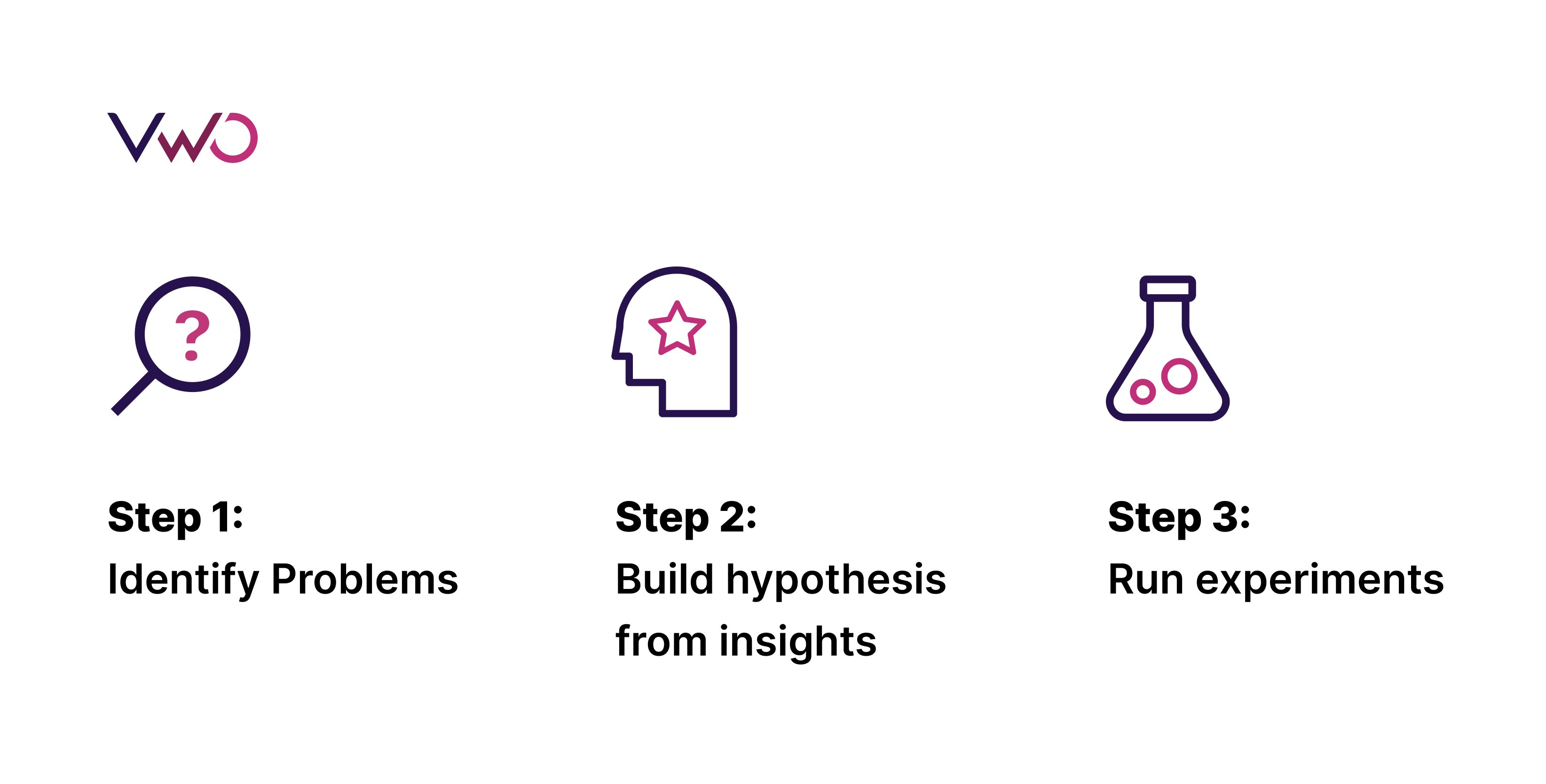
Step 1: Identify problems
The Experimentation Loop starts with identifying the existing problem in user experience. First, you do a quantitative analysis that involves going through key metrics like conversion rate, bounce rate, and page views to identify the low-performing pages on the user journey.
Once you zero down on the weak links, you can do a qualitative analysis to understand the pain points. You can check session recordings and heatmaps to know the performance of each element that affects the conversion rate.
Once you identify the problem associated with the elements, it can help draft a hypothesis.
Step 2: Build hypothesis from insights
After identifying elements that are affecting the conversion negatively, you can start digging into the insight data to make sense of it.
For example, you identified the banner image position as the reason for the high bounce rate of the blog after all the quantitative and qualitative analyses. Then you can build a hypothesis about the position of this image that offers a solution for the high bounce rate.
While framing the hypothesis, you should specify the key performance indicator (KPI) to be measured, the expected uplift, and the element to test.
Next, you move forward to run the experiment.
Step 3: Run experiments
Based on the hypothesis, you choose from tests like the A/B test, multivariate test, split URL, and multipage test. You run it till the test reaches a statistical significance.
The test may result in a change in the conversion rate, and the insights about the user behavior toward the new experience can open doors to identify areas for the second cycle of the experimentation.
Thus, the Experimentation Loop will constantly carve a path to improve conversion.
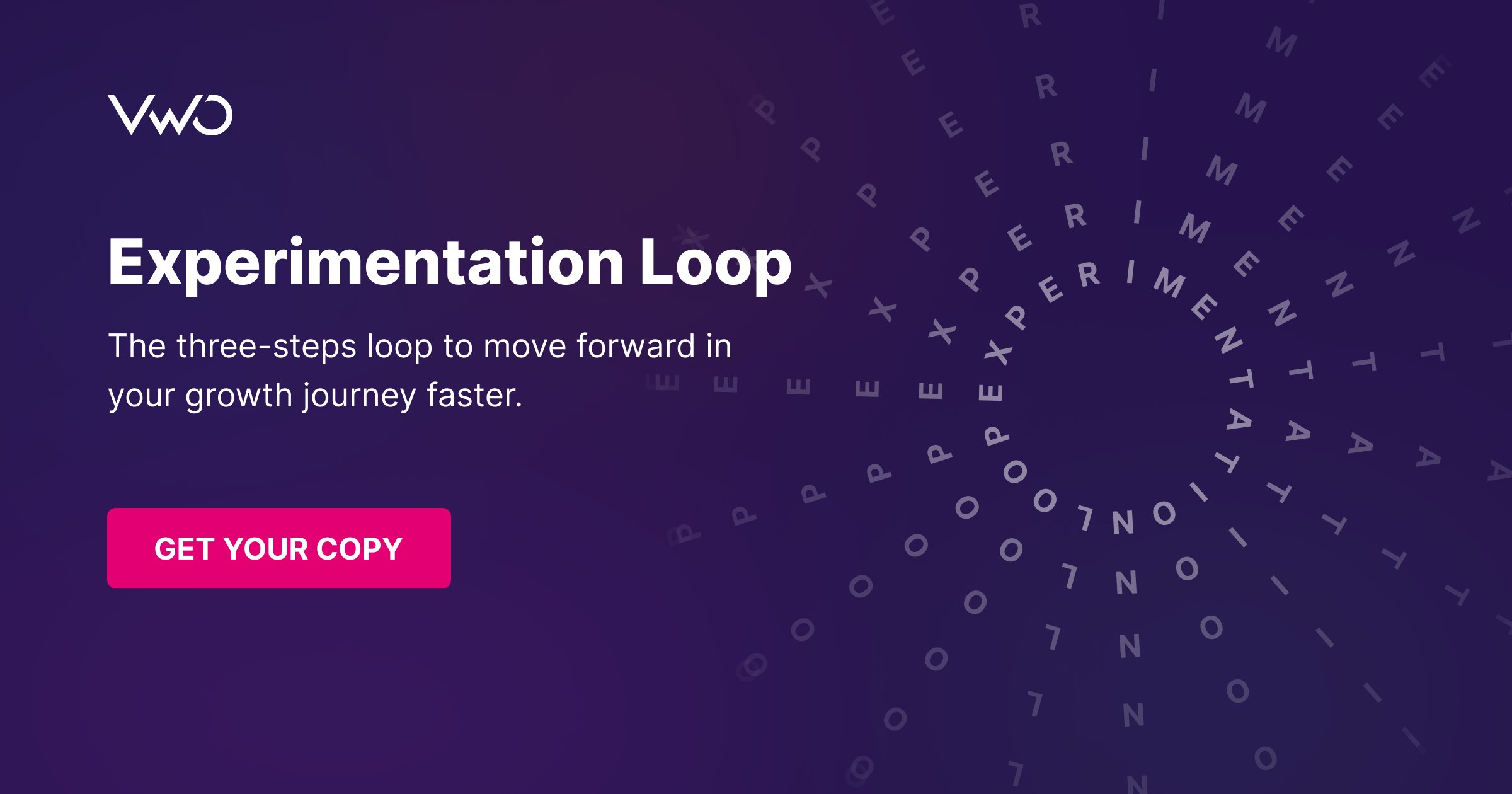
Experimentation Loop and sales funnel
Running Experimentation Loops at every stage of the funnel can substantially improve the conversion rate and provide a strategic framework for testing hypotheses rather than a haphazard approach.
To enhance the conversion rate of the same element, you can run an Experimentation Loop, as seen in the example of A/B testing to Multivariate testing.
Alternatively, you can analyze the insights from a test that improved a metric to see how it affected other metrics, which could lead to the second cycle of the test.
For instance, let’s take the awareness stage. The goal in this stage is to attract users and introduce them to products or services on a digital platform.
Suppose you ran an A/B test on search ads to get more users to the website and monitored metrics like the number of visitors.
Let’s say the test led to an improvement in traffic. Now, you can move on to analyze other metrics, such as % scroll depth and bounce rate for the landing page, and identify areas for improvement. To pinpoint the specific areas where users are leaving, you can use tools such as scroll maps, heat maps, and session recordings. The analysis can lead you to create hypotheses for the second leg of the experiment. It could involve improving user engagement by testing a visual element or a catchy headline.
Likewise, running the Experimentation Loop at other stages of the funnel can optimize the micro journey that the customer takes at each funnel stage. Moreover, the Experimentation Loop can lead to hypotheses creation from one funnel stage to another, resulting in a seamless experience that is hard to achieve with a siloed approach.
How Frictionless Commerce uses Experimentation Loops for conversion copywriting
Frictionless Commerce, a digital agency, has relied on VWO for over ten years to conduct A/B testing on new buyer journeys. They have established a system where they build new experiments based on their previous learnings. Through iterative experimentation, they have identified nine psychological drivers that impact first-time buyer decisions.
Recently, they worked with a client in the shampoo bar industry, where they created a landing page copy that incorporated all nine drivers. After running the test for five weeks, they saw an increase of 5.97% in conversion rate resulting in 2778 new orders.
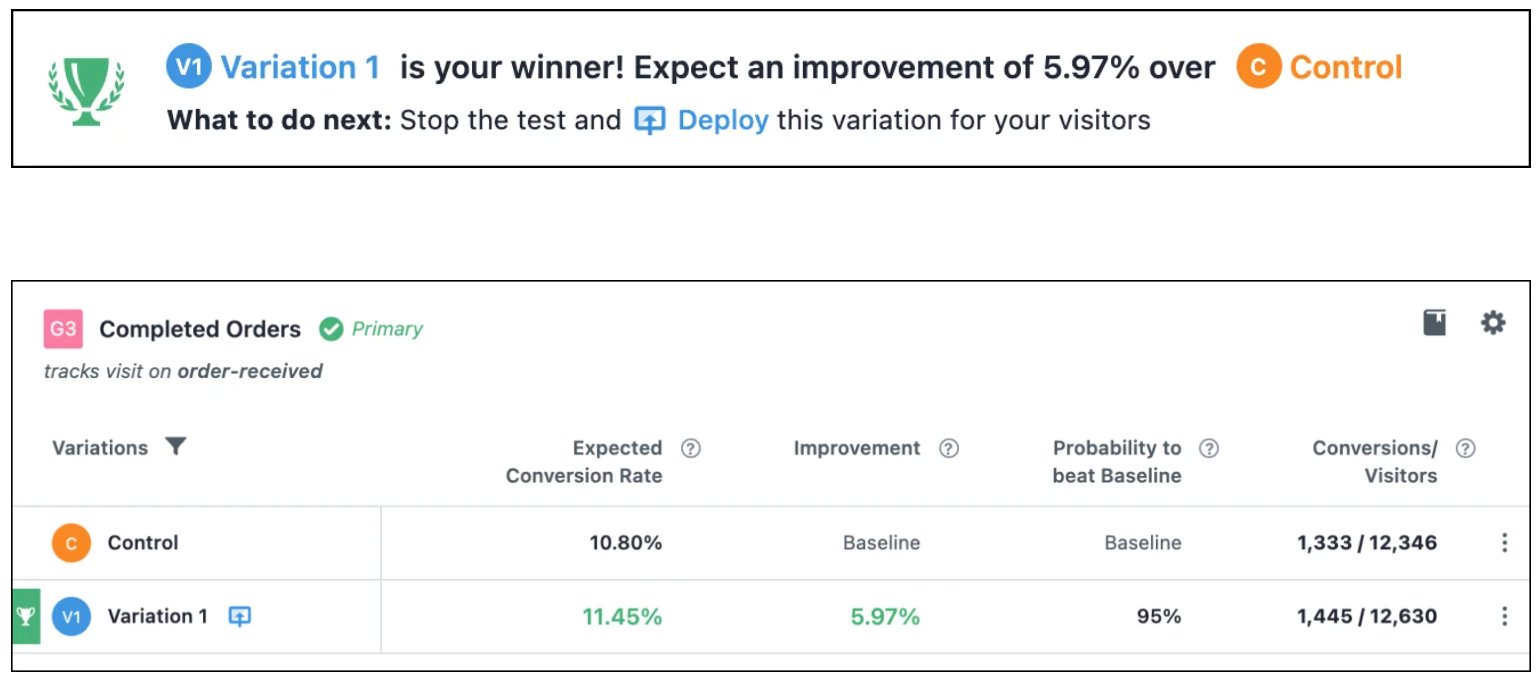
It just shows how Experimentation Loops can bring valuable insights and take your user experience to the next level.
You can learn more about Frictionless Commerce’s experimentation process in their case study.
Conclusion
Embracing the continuous learning and optimization provided by Experimentation Loops is crucial for businesses looking to stay ahead of the curve and improve their conversion rates.
To truly drive success from your digital property, it’s time to break the linear mold and embrace the Experimentation Loop. By using a strategic framework for testing hypotheses, rather than a haphazard approach, businesses can continuously optimize and improve their digital offerings.
You can create Experimentation Loops using VWO, the world’s leading experimentation platform. VWO offers free testing for up to 5000 monthly tracked users. Visit our plans and pricing page now for more information.
]]>Businesses don’t wish for users to have a hesitant conversation about their product. Unfortunately, most free trials don’t hold true to user expectations. You sign up for a free trial, but some capabilities are always gated, making it difficult to fully evaluate a product before investing in it.
At VWO, we realize that users need to understand how a product and its capabilities fit into their workflow, whether they fulfill important business objectives, and satisfy relevant use cases. That’s why, with VWO, you get a 30-day free trial that includes all offered capabilities. The allotted visitor quota that comes with each capability gives sufficient time and bandwidth to experience all the benefits that VWO can bring to the table.
Experimentation is a continuous and interconnected process with data as its backbone. As shown in the loop diagram below, VWO’s suite of capabilities includes everything needed to run experimentation and personalization end-to-end. The free trial gives you access to each of these capabilities.
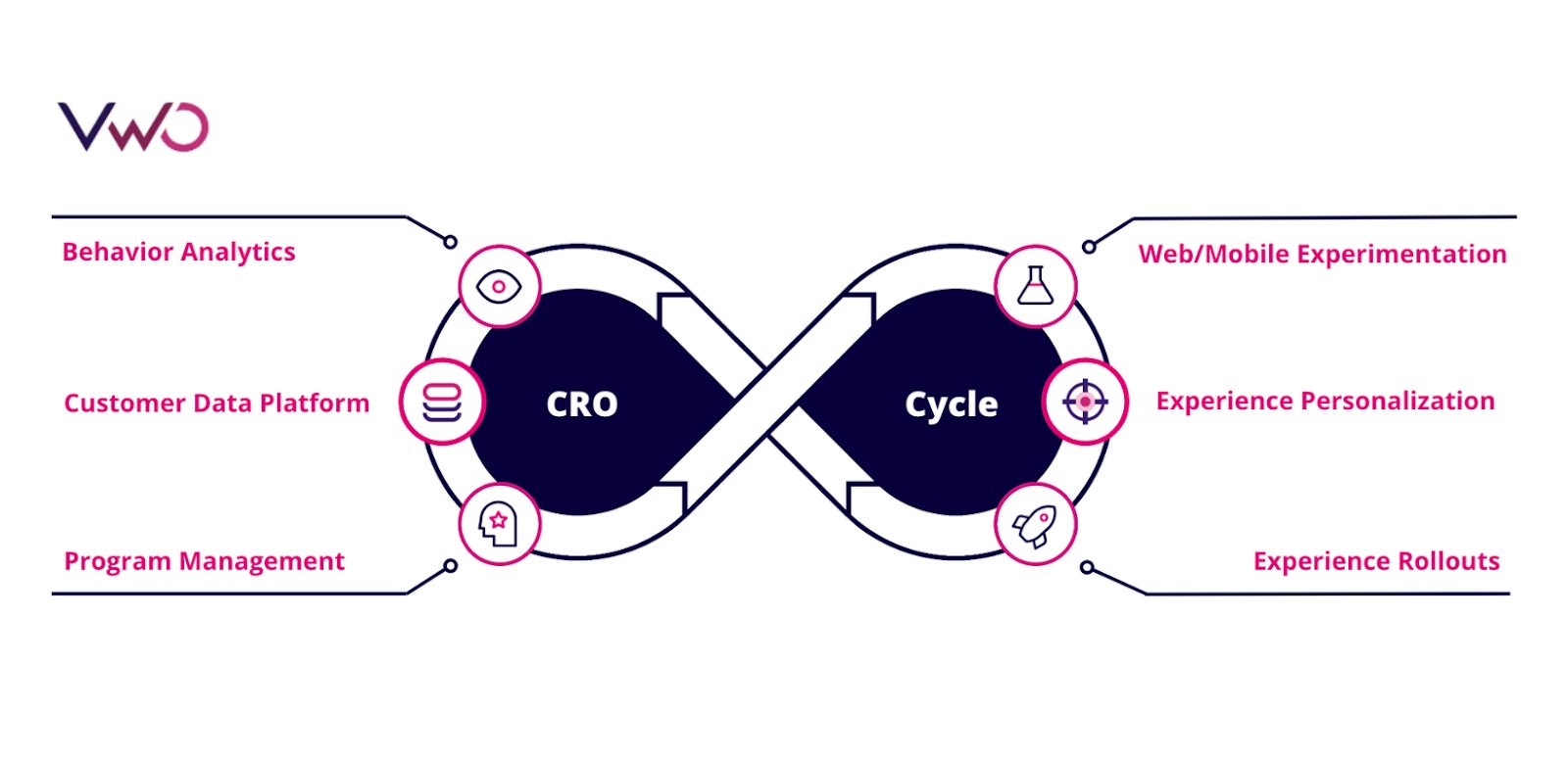
This blog answers questions that you may have about the free trial and explains what is included, how to access it, and the next steps.
1. Behavior analytics | VWO Insights
The process of experimentation starts with analyzing visitor behavior. With VWO Insights, you can analyze visitor behavior and identify bottlenecks in your current flow. Here is what you can do during your free trial:
- Goal setting to track the performance of pages and elements. You create pages and elements on a website with a specific purpose, and tracking how they perform is necessary. With VWO Insights, you can track the following:
i. Page visits to know the number of unique visitors who visit a page.
ii. Click on links to gauge the click-through rate of links, URLs, and URL patterns.
iii. Click on elements to track clicks on menus, videos, images, and other elements.
iv. Form submission to find the number of successful form submissions.
v. Revenue to track the earnings generated from each successful conversion.
vi. Custom conversion goals that are business specific.
- Funnel tracking to visualize the visitor journey and know where they drop off. Funnel visualization, in combination with heatmap and session recording, allows you to know why visitors are converting or losing interest. For example, the following is a funnel overview of the lead generation journey in VWO.
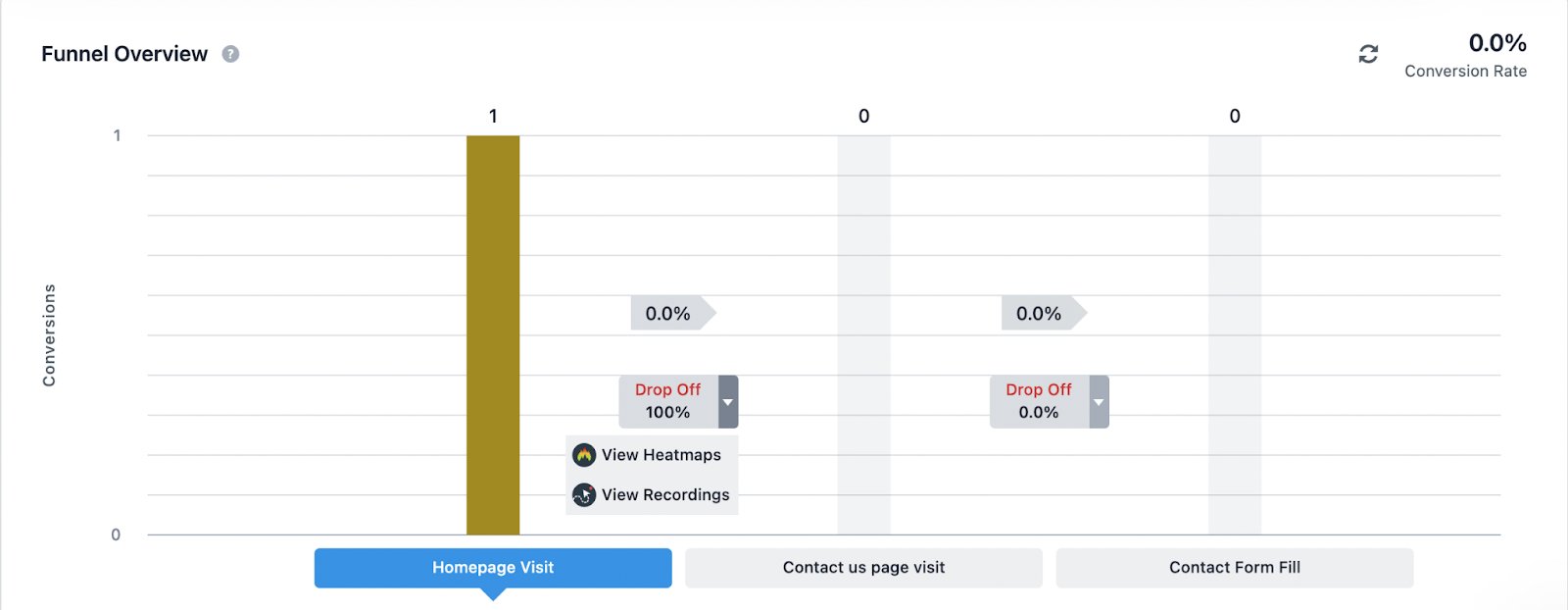
- Heatmap tracking offers a comprehensive real-time view of website visitors’ movement and behavior. You can gain insight into how website elements are perceived with features such as dynamic heatmap, clicks-map, scroll-map, element list, and click area.
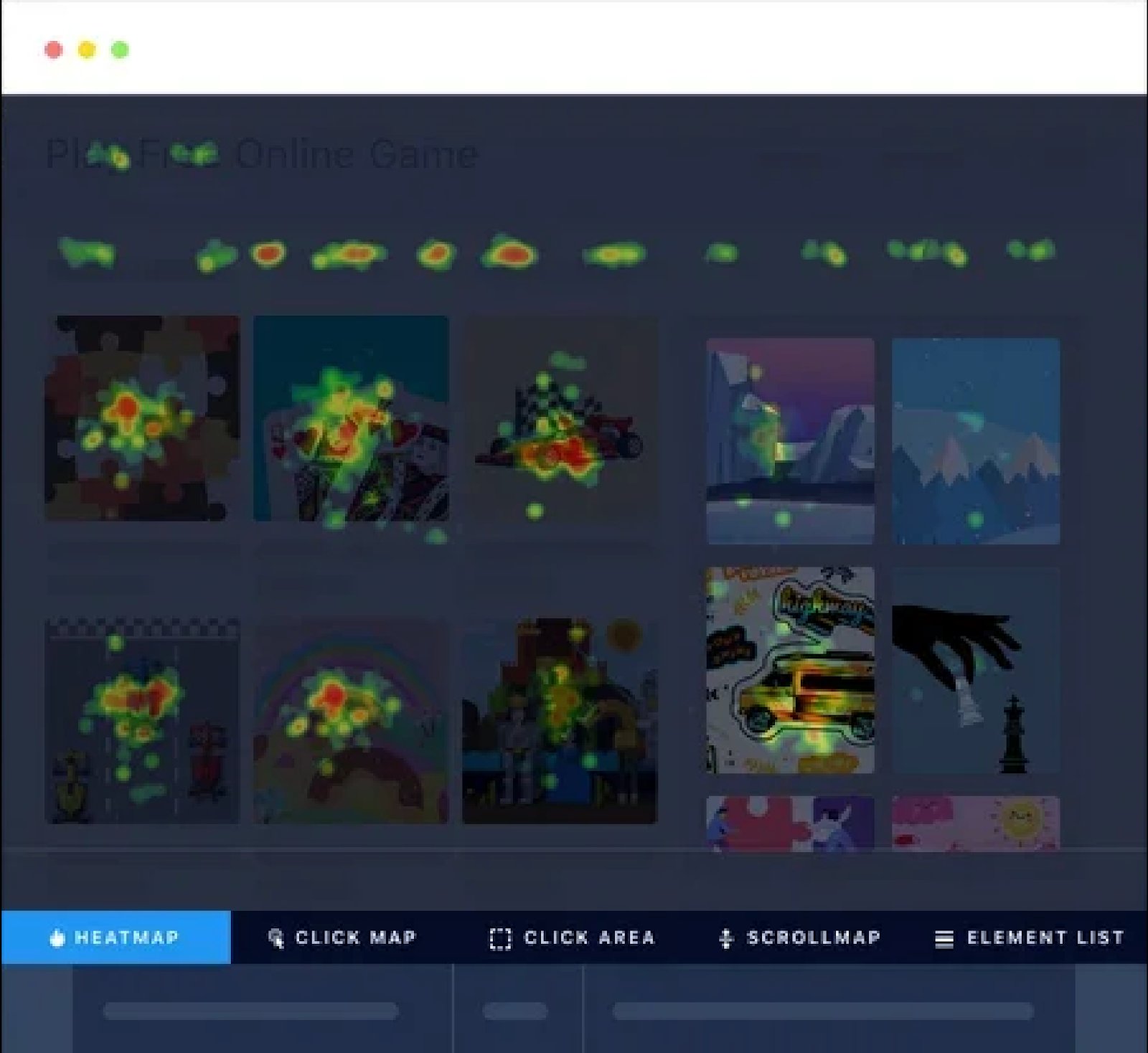
- Session recording to record visitor interaction for a single page or the complete website. You get to view the mouse movement and clicks to know how visitors engage with the overall website design, CTA position, content, and other aspects. With session recording, you can know the difficulties faced by visitors.
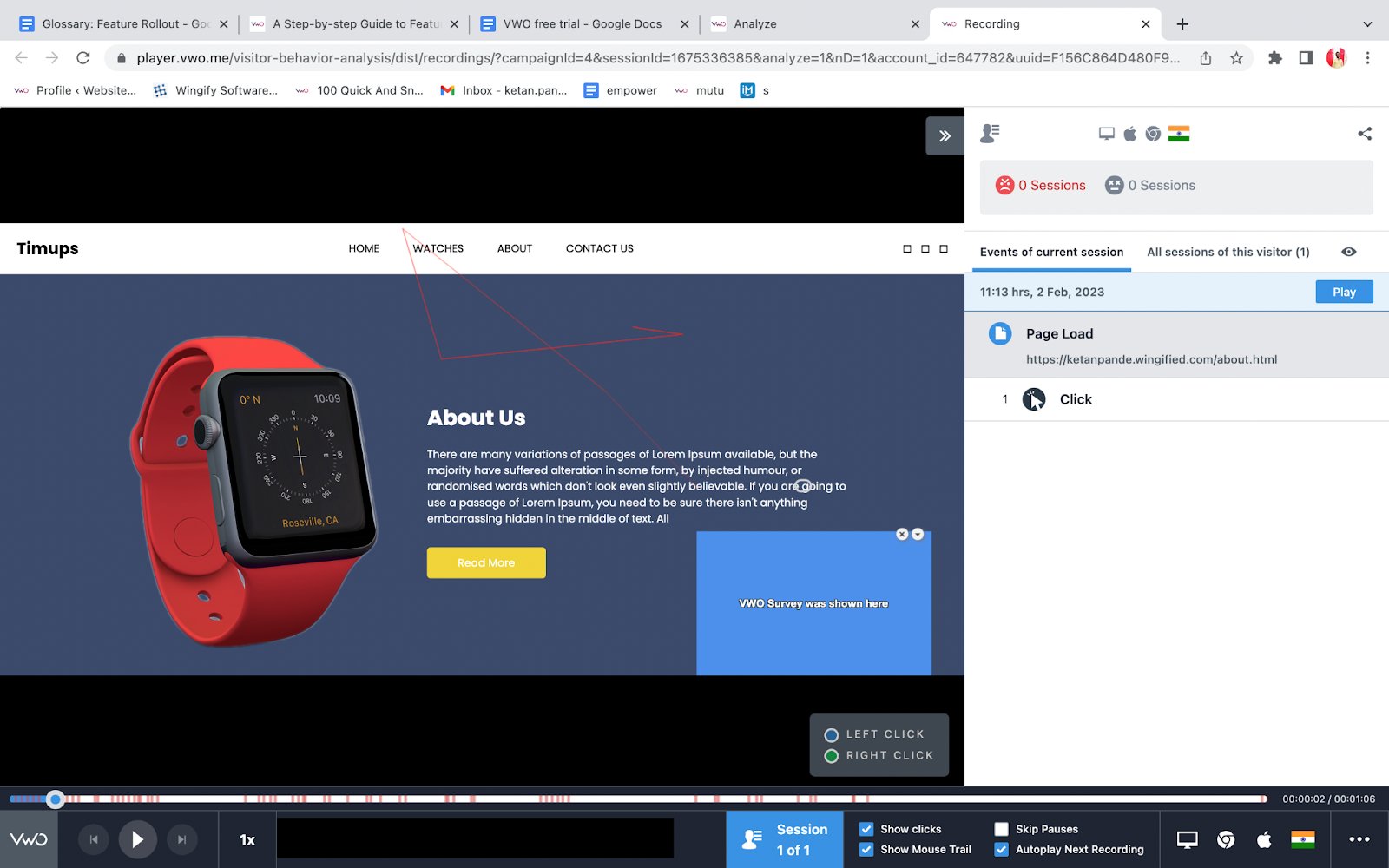
- On-page survey to collect visitor feedback on website experience. The survey can be triggered based on specific events like when the visitor lands on the check-out page and can be targeted for specific visitor segments. You also get the option to view session recordings of the survey to scrutinize its performance.
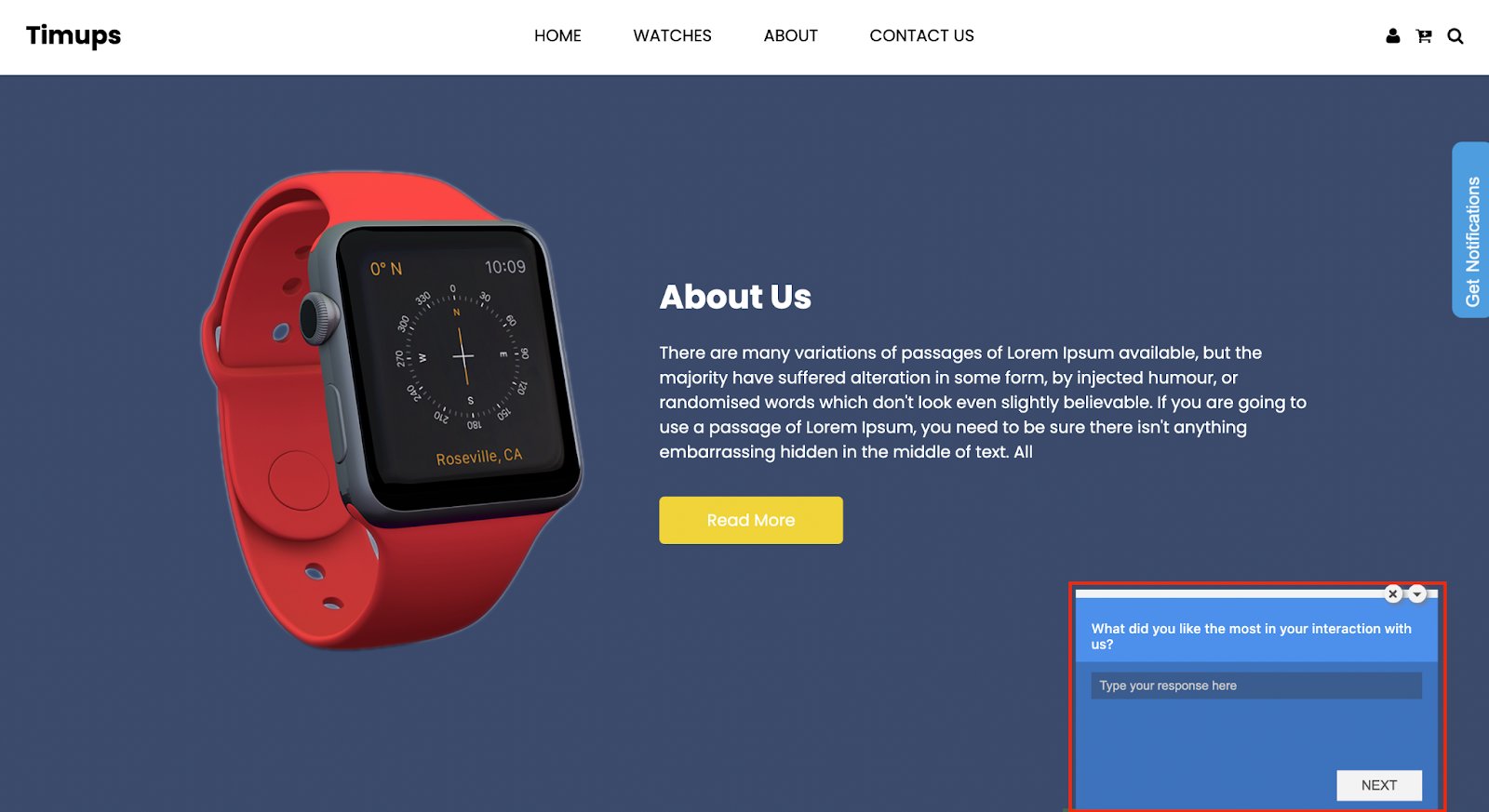
- Form analytics to analyze the performance of all types of website forms. Form analytics helps understand visitors’ interaction with your forms and the factors that lead to drop-off. You can identify which fields caused the most confusion, took the most time or needed the most revisions for the visitors.
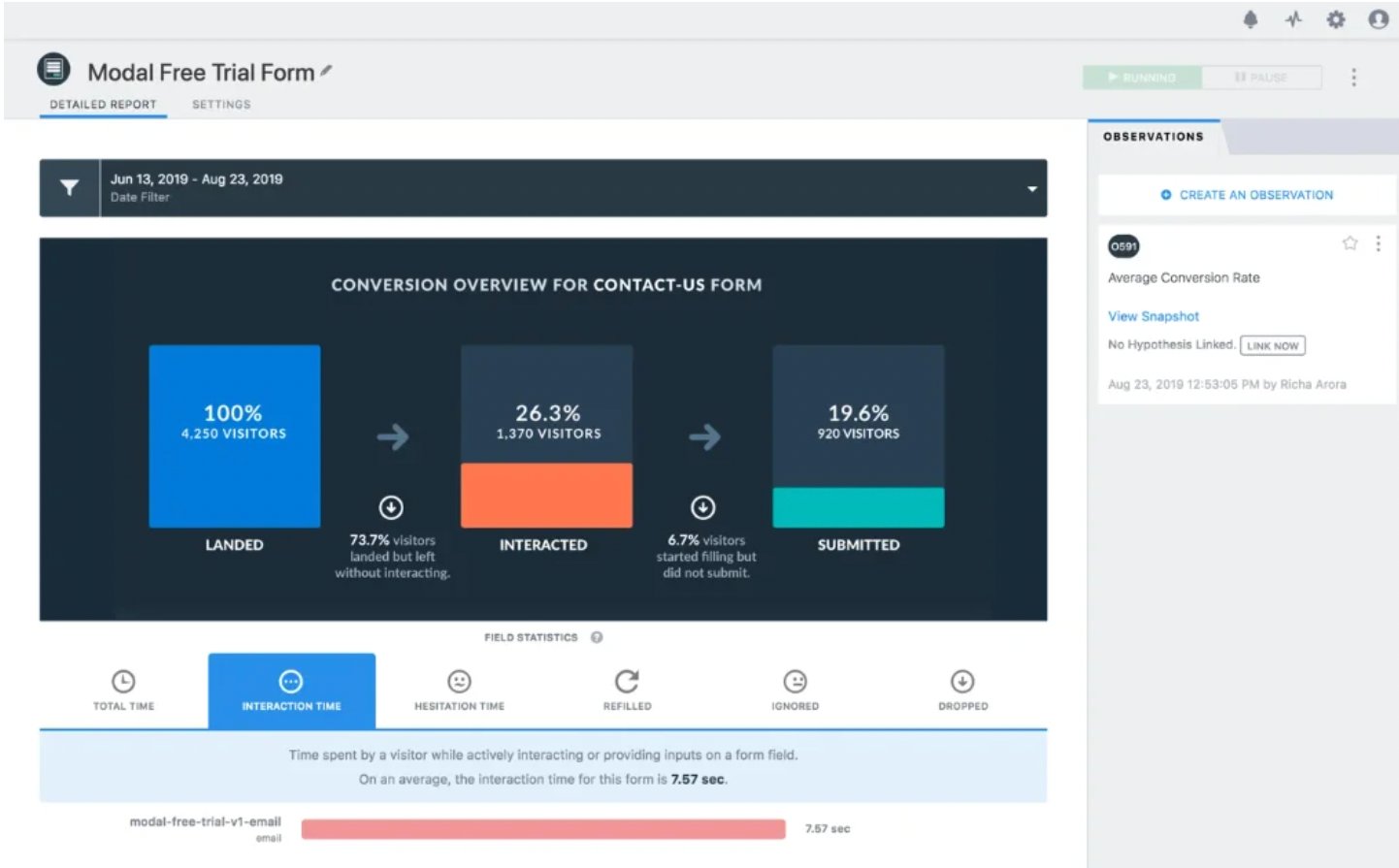
Note: Except for the survey, visitors are sampled uniformly for tracking and analysis for all other products in the insights. You can read more about the sampling logic of VWO. When signing up for the free trial of VWO Insights, the visitor quota is allocated based on your website’s monthly traffic. You can select from the following options during the free trial sign-up process:
| Selection | Allotted Quota |
| Upto 10K | 10K |
| Upto 50K | 50K |
| Upto 100K | 100K |
| Upto 200K | 200K |
| Upto 500K | 500K |
| Upto 1M | 500K |
| More than 1M | 500K |
| I am unsure about my visitors | 100K |
2. Web experimentation | VWO Testing
Once you have gathered visitor behavior insights, you can form hypotheses for running tests. You can perform A/B testing, Split URL testing, and Multivariate testing with VWO Testing to optimize the website for various marketing objectives. Here is what you can do with VWO Testing:
- Define specific pages, URLs, and URL patterns for the test. Segment visitors for testing based on visitors’ interests, demographics, or any custom characteristics.
- Modify elements, embed media, and add widgets and dynamic text to create variations for A/B and multivariate tests with a drag-drop editor. Also, your development team can use an inbuilt code editor to make complex changes.
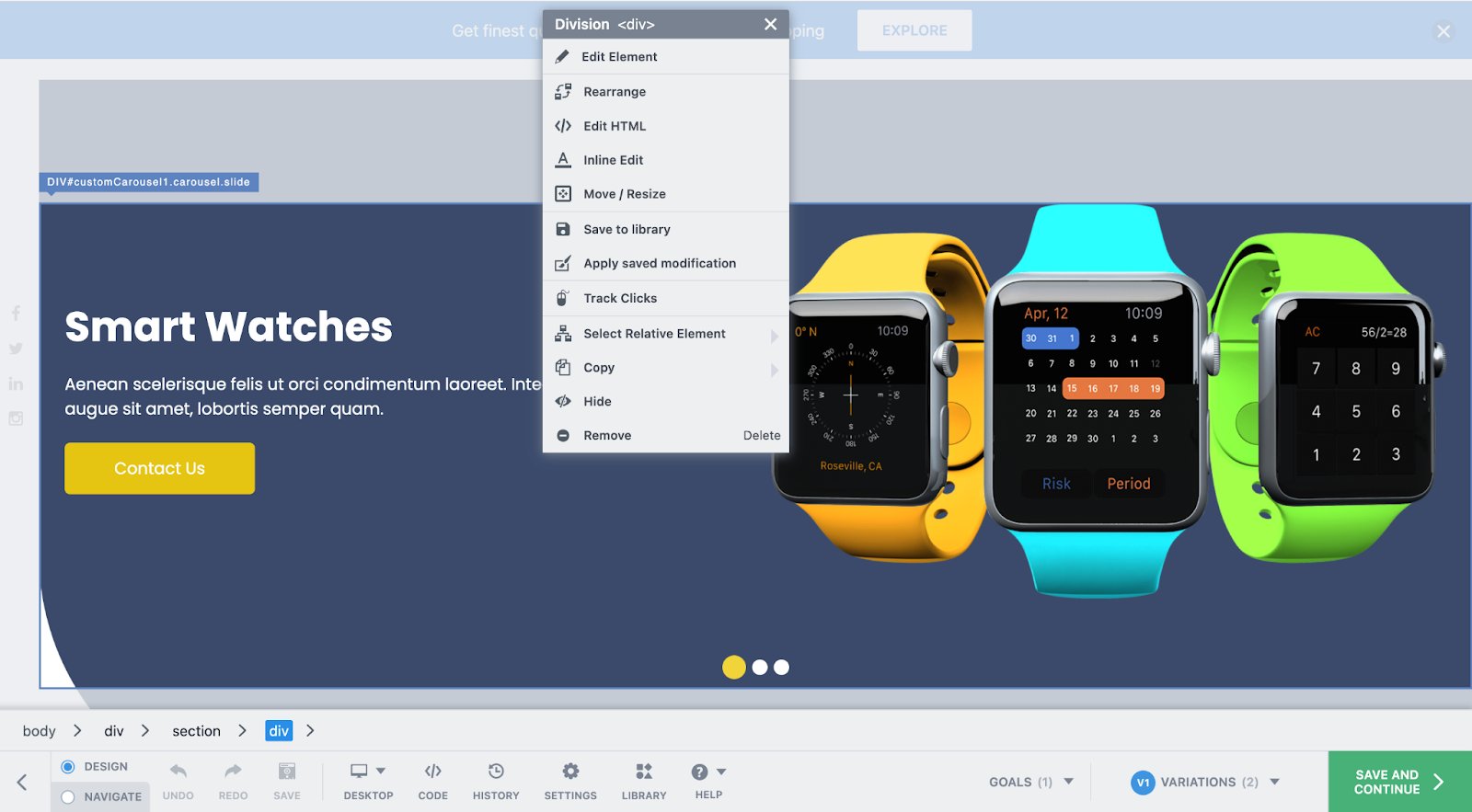
- Set goals for page visits, engagement, form submissions, clicks on links and elements, revenue, or a custom event.
- Allocate traffic to variations, integrate third-party apps for data transfer, and create mutually exclusive groups for similar tests, such as two A/B tests with different product prices.
- Get real-time reports that are easy to understand and equipped with over 20 predefined segments, like new or returning visitors, devices, location, etc., for detailed analysis. Additionally, you can compare the behavior of two segments, such as visitors exposed to a special promotion and those who were not.
Additionally, you get to,
- Tailor variations for particular devices or uniformly implement them on all devices.
- Organize your testing program with ease using the Kanban board, providing a clear and comprehensive overview of your entire testing pipeline. It enhances accessibility and transparency.
- Record learnings from past tests so that all teams can build better hypotheses and test them in the future.
- View the heatmap and click map for variations and control.
In the free trial, you get a quota of 10K visitors for VWO Testing. A unique visitor can become part of multiple tests but will be counted only once. Also, it is important to note that only visitors who become part of a campaign are counted and not the complete website traffic.
3. Server-side experimentation | VWO Fullstack
There are multiple use cases, like search algorithm testing for instance, for experimenting on the server-side to avoid flicker and ensure zero latency. You can perform server-side testing to test complex ideas with VWO FullStack. Here are the capabilities that you can explore:
- Run experiments and launch new features across multiple channels, such as web, mobile, email, etc.
- Test different variations of a product’s features, functionality, design, and pricing.
- Release new features to a small group of visitors or even to a production environment without releasing them to the entire visitor base.
- Connect the data sources with the popular tools used for data storage, business intelligence analysis, and customer data platform.
- Get advanced reporting and identify instances like a group of visitors demonstrated a substantial deviation in conversion rate compared to others for a particular objective or variation.
We offer an assisted free trial for VWO FullStack that includes backend installation and initial campaign setup. Also, you get a quota of 10K visitors per month in the free trial.
4. Mobile app experimentation | VWO Mobile App Experimentation
You can also use VWO Mobile App Experimentation to optimize your in-app experience. Here is what you can do:
- Test everything from simple CTA button changes to complex app flow.
- Measure ROI, and identify conversion triggers.
- Test new app features on a selected audience before making it live for all app visitors.
We provide an assisted free trial for VWO’s Mobile App Experimentation that includes backend installation and initial campaign setup. Also, you get a quota of 10K visitors per month in the free trial.
5. Personalization | VWO Personalize
You can tailor visitor experiences with VWO Personalize based on visitors’ past data. Your visitor data is secure with strong privacy and security protocols. Here is what you can do with VWO Personalize:
- Create personalized experiences for different visitor groups with a WYSIWYG Visual Editor.
- Monitor the performance of personalization efforts and assess their impact on different visitor segments with a central platform-level metrics system.
- Integrate third-party analytics tools, CMS, CDP, and ABM to fill lacking visitor information and understand customer behavior to create complex customer segments.
Similar to VWO Testing, for VWO Personalize free trial account, you get a quota of 10K visitors. A visitor can become part of multiple personalized campaigns and will be counted only once.
6. Rollout | VWO Deploy
Once you have your experimentation results, you can choose to push your winning version live using VWO. VWO Deploy allows you to roll out minor changes or revamp the website. Here are its features:
- Drag and drop editor to edit, resize, move, and replace the existing elements, and the option to add widgets. Also, there is a code editor to make complex changes.
- Live preview of the changes on different devices and browsers
- Ability to deploy winner variation from web experimentation.
- Option to roll out new changes to a segment of visitors so that you can release relevant changes as per visitor background and interests. For example, releasing a greetings widget for festive seasons as per geography.
For a free trial, you get a quota of 10K visitors for VWO Deploy. A visitor can become part of multiple deploy campaigns and will be counted once.
7. Customer data platform | VWO Data360
When customer data feeds into the experimentation and personalization loop, it keeps you on the right track. VWO Data360 is a customer data platform that provides a single and coherent view of all customer data. The platform allows data unification that can be later used for segmentation and targeting in campaigns. The Data360 module enables you to create and manage the following features:
- Attributes: Attributes are variables that help identify and segment visitors, including information such as traffic source, browser used, visitor gender, subscription level, and location.
- Events: Events refer to actions taken by visitors on the website, like clicking on an offer banner or making a payment. Each event has a name and set of properties that describe it.
- Metric: With our tool, you can establish and monitor your goals/key metrics for a thorough understanding of your conversions, such as form submissions, page views, and clicks on specific elements.
- Profile: With our platform, you access all the information of a visitor, such as their attributes, events, segment membership, metrics, and behavioral data all in one place. It gives you the ability to perform in-depth analysis and better understand the motivations behind their actions. You can also see data related to VWO Testing, Insights, Deploy, and Personalize campaigns of which the visitor is part
- Audit: It lives streams the website events as a list. It helps to know if the set events are tracked properly on your website.
During the free trial, Data 360 can be used without any monthly set traffic quota. You can track the number of times an event is triggered but not track complex metrics like average order value or total revenue. Additionally, in the free trial, only one numerical property can be set for an event. Custom attributes such as age, gender, etc., cannot be created. Finally, the free trial only allows you to view up to five profiles in user profiles.
8. Program management | VWO Plan
With VWO Plan, you can collaborate with teammates and other teams to prioritize, analyze, and discuss experimentation campaigns. Here is what you can do:
- Store all your thoughts, insights, comments, or ideas related to any aspect of your experimentation program in a centralized database.
- Capture behavior data and record your observations from VWO Insights. You can use these observations to document and prioritize experiment ideas on the Kanban Board.
- Prioritize and execute testing ideas from a shared dashboard.
- Track key business metrics and monitor their changes over time with ease through the experimentation program.
In the free trial, you get full access to VWO Plan.
FAQs on VWO free trial
You can create your free trial account here.
You can use VWO with all features and capabilities for 30 days.
You get a live demonstration of the product with self-learning videos to understand its capabilities and dashboard functions.
If you don’t subscribe to a paid plan, the account is deleted after 45 days of inactivity. However, you can export the collected data before the deletion day.
Yes. A free trial account gets email, chat, and phone support for the complete duration. Also, we share some testing ideas with you that you can use to get started with experimentation.
Yes, we offer a VWO Testing – Web and VWO Insights – Web starter pack in which you get free usage. You can learn more about VWO pricing and plans.
Conclusion
In this blog, we have tried to provide exhaustive information on the VWO free trial. However, if you have further questions, please get in touch with [email protected]. Our support team is available to guide you throughout the free trial. Alternatively, you can also request a live demo to see VWO’s capabilities in action.
So, boost your optimization efforts, and grab an all-inclusive 30-day free trial today.
]]>Download Free: A/B Testing Guide
For marketers with digital properties, this implies that even a minor negative deviation from visitors’ expectations will lower the conversion rate along with a loss of time and money spent attracting the target audience to the digital asset.
So, how to deal with the fleeting attention span? Let’s go through some strategies that marketers can use to capture visitor attention and improve engagement on their websites.
Identify the fold where most visitors leave
As a marketing professional, you work hard to design a landing page and create stellar copy. But what if most visitors leave at point A on the website, and all the crucial information about the product with an important call-to-action button comes at a succeeding point B? This means that numerous visitors are moving on without knowing the product. That’s why it is necessary to know the point on the page where most visitors lose interest and drop off.
A marketer can identify the fold where most visitors are leaving with the help of a scrollmap. For instance, here is a scrollmap of the homepage of an online watch store.
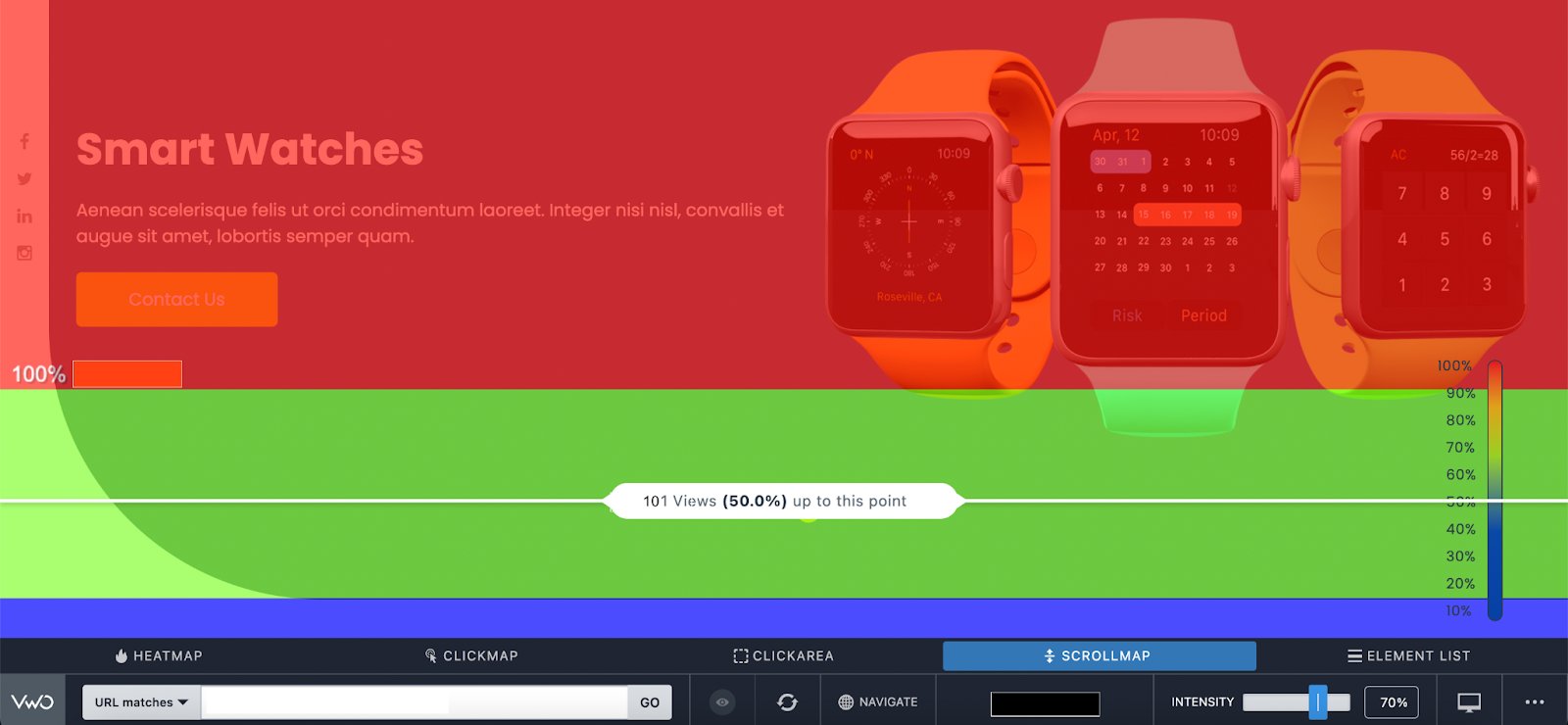
Half of the website’s visitors are dropping before reaching the product section located below the fold. To capture their attention, the website administrator can employ several tactics. For instance, at the 50% viewpoint, the website administrator can insert captivating text to highlight the watch’s features, pricing, or special offers, such as “The most affordable smartwatch on the market.”. It can entice visitors to continue scrolling for more information.
Additionally, incorporating multimedia elements, such as images or videos, can pique visitors’ interest and encourage them to explore further. Another approach to address this attention threshold is to move key elements and information about the product above the 50% viewpoint.
It’s like either you increase the attention span with attractive elements or show everything important before the visitor loses attention.
Use quick and consumable content
This is the age of information overload, and everybody is looking to get answers that are crisp, visually appealing, and consumed in a minute. Thus, a marketer must resort to content formats like web stories and infographics that suffice all the mentioned requirements.
For example, Refinery 29, an entertainment website, wanted to generate leads for their email digest. They explored the topic of currency manufacturing through a visually appealing medium like Google Web stories.
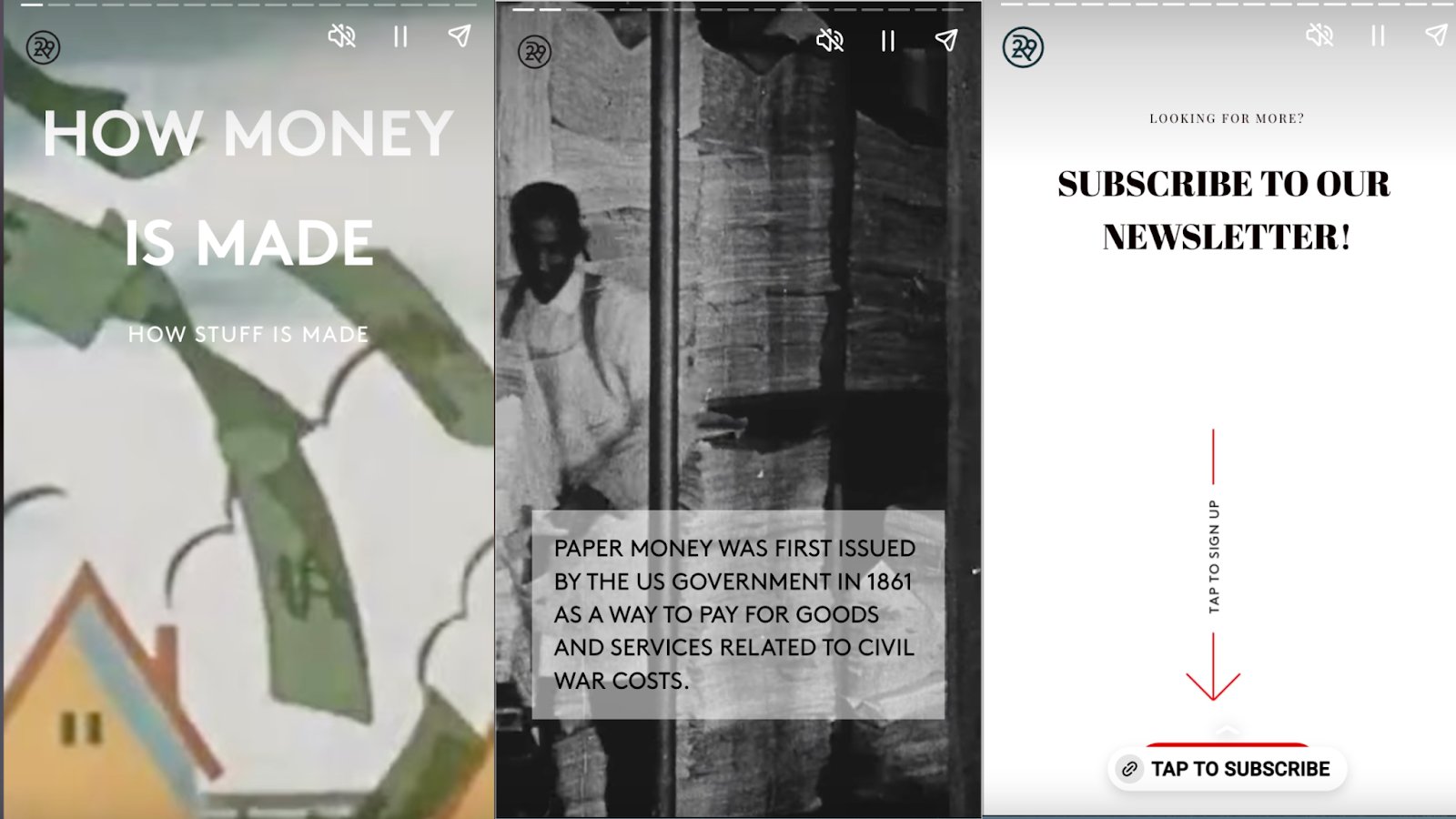
Image source: Refinery 29
They could have gone through the traditional route of creating a long blog post with a request to join the newsletter at the end. Though web stories are not a replacement for blog posts, if you can explain a topic in a few words with visuals, then a web story can catch the attention and, at the same time, help achieve the marketing goal.
Personalize the visitor experience
Personalization is a sophisticated technique that can enhance visitor satisfaction. Generic headlines and a copy may not effectively communicate your message to individuals with diverse interests, demographics, or ages. Personalization captures visitors’ attention by providing highly relevant content that makes them feel valued and unique.
Personalization must address visitors’ demands simply and transparently. For instance, here is how Amazon Prime uses personalization to communicate with subscribers.
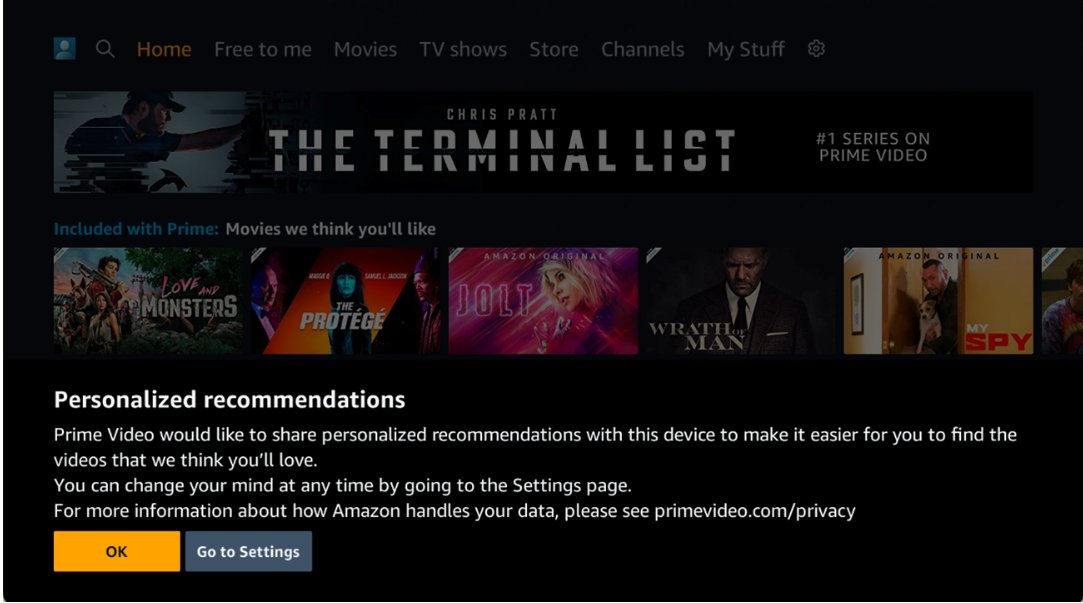
The subscriber knows what’s in it for them without any ambiguity. Thus, after opening the app or watching a video, the content recommendation section entices visitors to explore similar content. Likewise, you can communicate with visitors and add personalized sections with clear headings like “You might also like” on the webpage based on past activity.
Additionally, the emergence of customer data platforms (CDPs) makes it easier to have a customer information hub collecting data from various sources. CDP allows tailoring a cross-channel hyper-personalized experience. For example, a regular customer of an eCommerce store with the habit of buying in discounts can get a tailored email, paid ads on social media, and a section on the website with top deals of the month or season. It will make the customer engage with the brand for a longer time, as all digital touchpoints have been customized to serve the intent of the customer.
Download Free: A/B Testing Guide
Reduce page loading speed
Imagine a visitor waiting 4-5 seconds for a webpage to load; with each passing second, the visitor is most likely losing interest and trust in the brand.? There is a substantial negative impact on the conversion rate due to an increase in page load time. Here is an excellent infographic showcasing the relationship between conversion rate and page load speed.
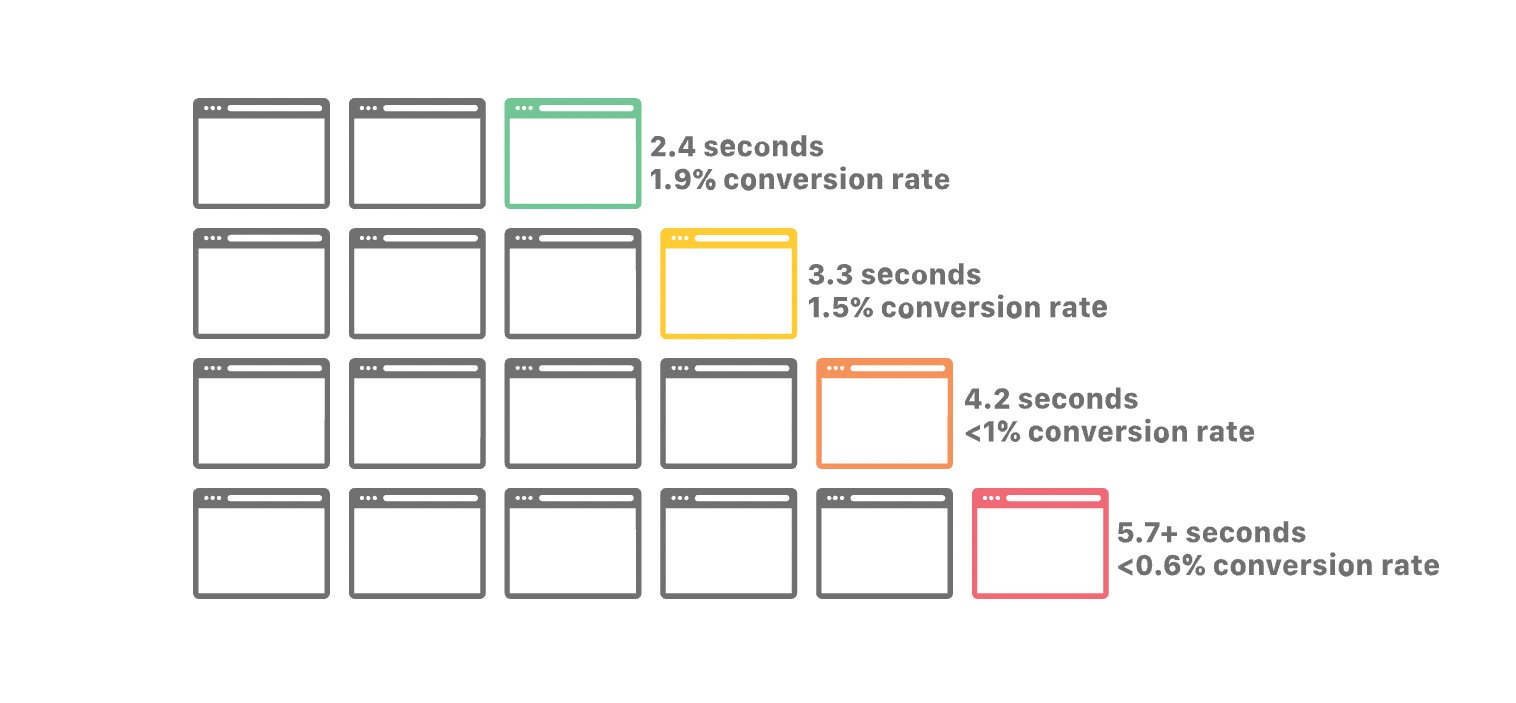
A marketer with the help of the website manager must regularly audit the website speed with tools like GT Metrix, and Google Pagespeed Insights to find possible opportunities to improve the speed. Also, a good content delivery network (CDN) and a dedicated hosting server can ensure the speedy delivery of content across geographical domains.
Engage with interactive elements
What leaves an impression on visitors’ minds is experiences, not just plain information. Static content on landing pages limits the experience, and visitors are left to their imagination about the product or concept included in the content copy. Interactive elements fill that gap and allow the visitors to experience the content they just read.
For example, on the VWO Deploy landing page, the visitors get to play with all the features of the editor described in the page copy.
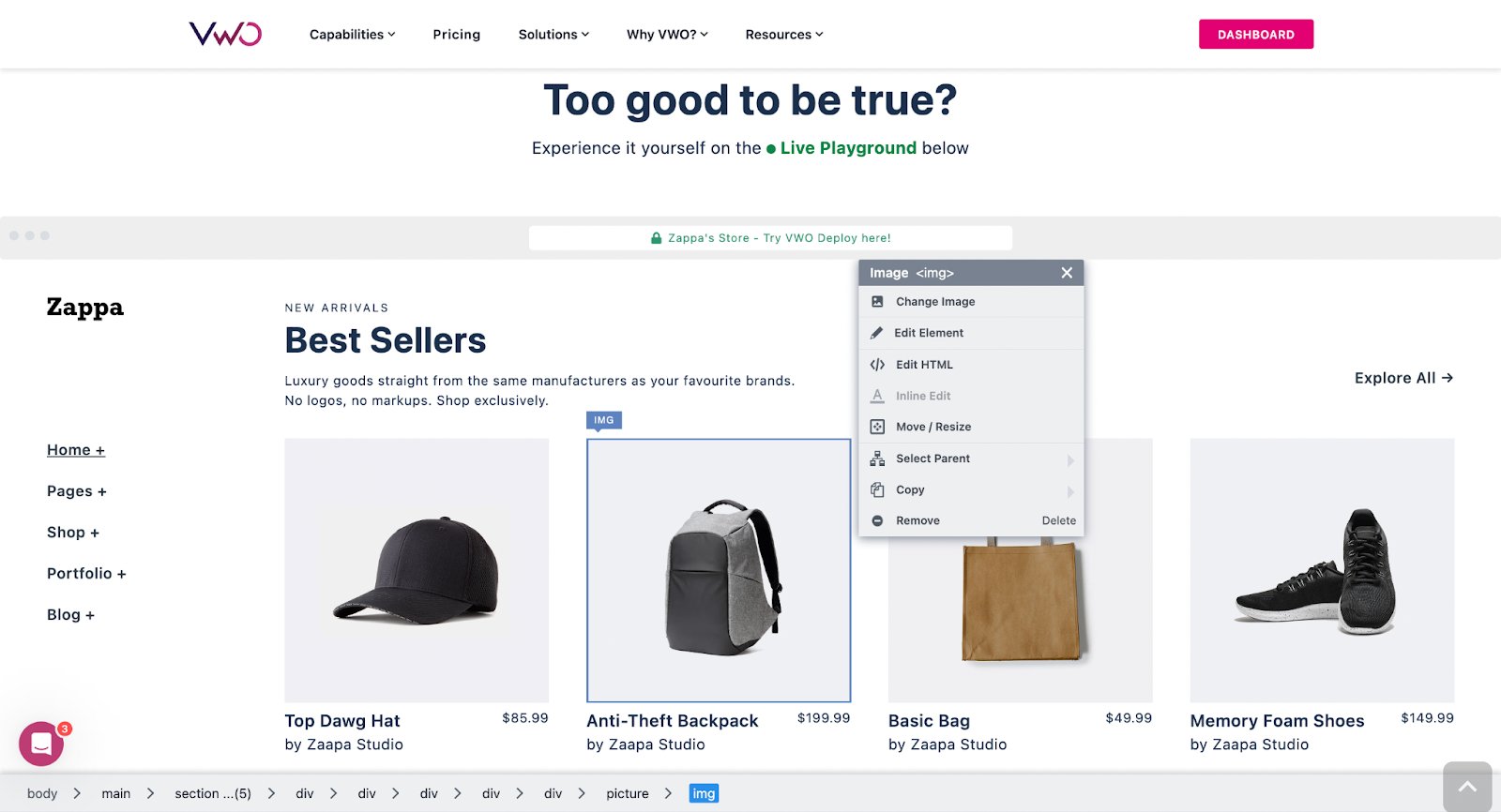
Image source: VWO Deploy
This increases the dwell time of visitors and helps them understand the product they intend to buy. Marketers must include interactive elements that align with the topic of the landing page and spark interest. Here are some of the common interactive elements that you can embed on your landing pages:
- Tools and calculators
- Quizzes, polls, assessments, and tests
- Maps, interactive timelines, and graphics
- 360-degree video
- Drag-drop media editors
Moving forward
Once you’ve successfully grabbed the visitor’s attention, make it count. Avoid ambiguity and provide clear messages that are comprehensible. Communicate what the next steps entail and ensure that they are easily accessible.
As attention spans may continue to decrease, the best way to deal with it is by continuously optimizing the user journey while keeping the three Es in mind: Experience, Expectation, and Ease of use.
Lastly, let the customer enjoy each interaction and see you as a beacon of positivity in the saturating market.
]]>Such a business will not flourish because as a customer, you need to buy into the experience before you pay for the product. In this digitally dominant world of business, you will judge the product based on the website’s experience and leave instantly if it is not up to the mark.
Download Free: A/B Testing Guide
The foundation of a high-performing website with the finest experience is based on three pillars: Optimization, Personalization, and Testing. Most of us understand these terms in theory, but their impact on the website depends on the correct execution.

Although optimization, personalization, and testing techniques should align with your business objectives, here are common best practices that can be utilized as a reference regardless of industry or business size.
Best practices in website optimization
Website optimization is about improving the performance of the website in terms of speed, traffic, and design using various strategies and tools. It involves reviewing, experimenting, and optimizing areas like SEO, copywriting, UI, analytics, CRO, and web development. Let’s explore some of the best practices:
Reducing website loading time
A fast-loading website creates a smooth user experience, which leads to a higher conversion rate and higher ranking on the SERPs. You should aim for 2 seconds of load time; the reason being the threshold set by Google for dynamic websites like an eCommerce store.
Although using cache plugins and minifying HTML and CSS is common, you can speed up the website with advanced measures. Following are some suggestions in this direction:
- Work on reducing redirects for the landing page
- Upgrade the hosting to reduce server response time
- Remove rendered-blocking JavaScript
- Enable G-zip compression
Studying visitor experience with heatmaps and session recording
Everybody with a website uses some analytics tool to understand user interaction. But, to create a strong position in this cut-throat competition, it’s crucial to use advanced tools like dynamic heatmaps and session recordings.
A basic analytics tool will point out a high bounce rate or low duration on a particular page. But, a heatmap and session recording will tell you at what point on the webpage users are leaving and how the website elements are performing on the heatmap. They will give precise information on the visitor’s experience with different elements, content, and media on the website. These advanced tools answer what to optimize.
Making it user and intent-friendly
The practice to create a landing page stuffed with keywords is obsolete. The user intent has taken center stage, and targeting the motive behind the search will ensure success in contemporary times. One of the simplest ways to understand the intent is to analyze the top 10 SERPs for a particular keyword as search engines have evolved to understand intent and rank pages.
For example, if we search for second-hand cars on Google, we get SERPs with “used cars” in the title, and the content of the pages intends for transactions rather than sharing knowledge.
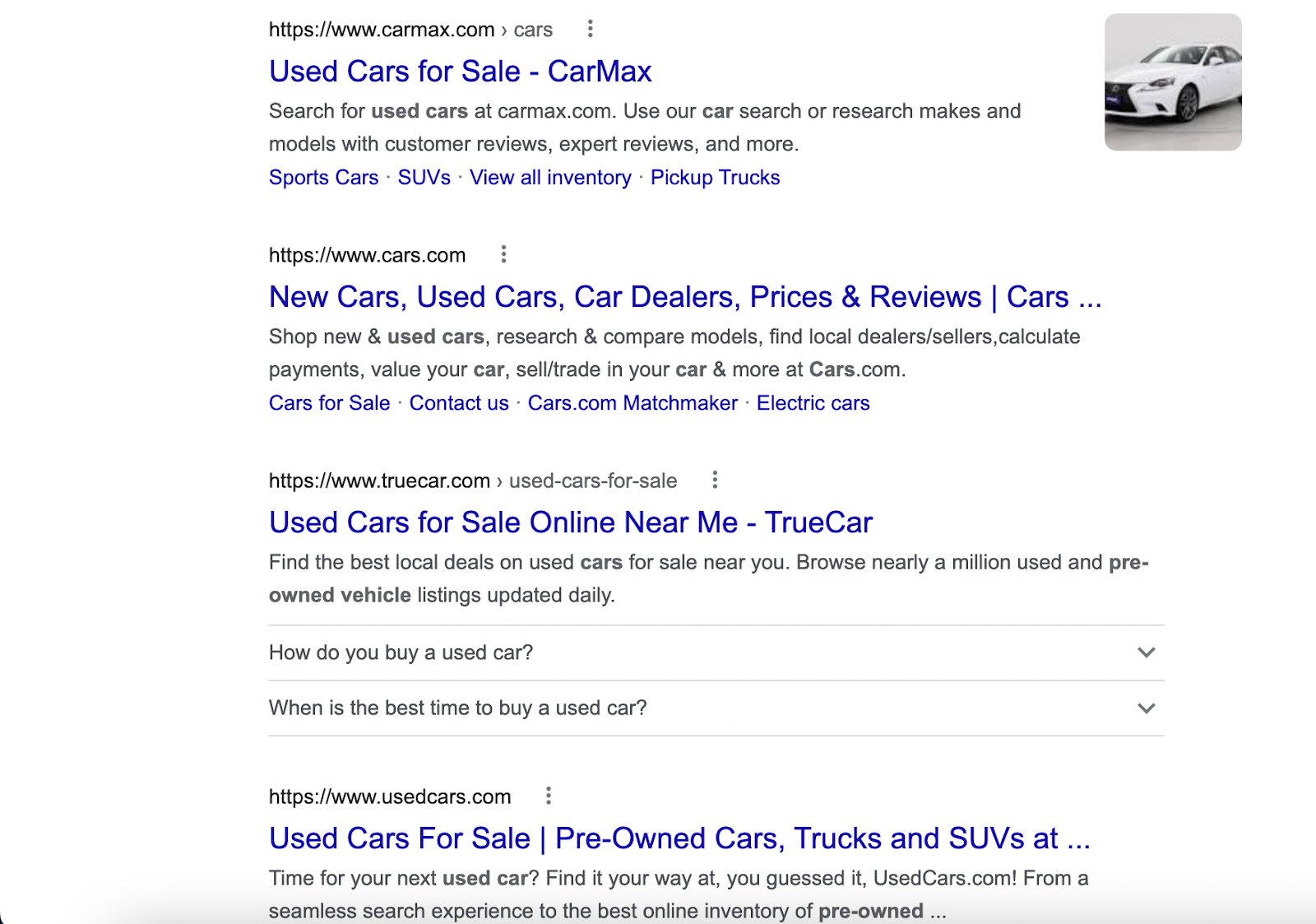
Thus, before creating content to target any keyword, a simple analysis of SERP can help understand the intent. Also, including modern features like text-to-speech, and voice search will keep you ahead of the curve.
Focusing on conversion rate optimization (CRO)
A website owner in these modern times must run CRO campaigns that intend to analyze and optimize each stage of a conversion funnel. CRO helps in making data-driven decisions when optimizing content, web design, and elements such as calls-to-action (CTAs). The focus of CRO should be to optimize the complete user journey rather than just the landing page or the website. On top of it, the future is all about customer data platforms (CDP), and it’s something to explore to scale up the website optimization process.
Regularly SEO auditing your website
High-growth brands audit their websites at regular time intervals. Visitor behavior is dynamic and changes quickly with time; regular SEO audits help keep your website up to the mark. Here are some tips to do an SEO audit:
- Check for indexing issues, mobile friendliness, and core web vitals on the website’s search console.
- Look for duplicate versions of your website.
- Analyze keyword queries on the search console or any SEO tool such as Semrush and Ahrefs. Check low CTR/impressions ratio and low rankings.
- With tools like Semrush, analyze and remove broken and low domain authority internal and external links.
- Analyze your site’s speed on different devices. You can use Google’s Pagespeed Insights to get suggestions to improve speed and core web vitals.
Example of website optimization
Yelp, a crowd-sourced business review platform, saw a decrease in page speed due to an increase in the number of steps in the ad purchase flow. The development team at Yelp did some initial optimization and found that an increase in page speed lifts the conversion rate by 12%.
Thus, the team started with tools like ChromeDev to find frontend development issues and Google Lighthouse to get suggestions on the speed. After a series of front-end and server-side optimization, the browser rendering of the content improved by 45%. The whole optimization effort led to a 15% improvement in conversion rate.
It just shows how website optimization improves the user experience and positively impacts the conversion rate.
Best practices in website personalization
Website personalization tailors visitors’ experiences based on preferences and past interactions. Here are some practices to ace website personalization.
Collecting data on user behavior and creating groups based on similar characteristics
Collecting data on the visitor journey is essential for creating a successful website personalization campaign. It allows you to understand how visitors perceive your website and what factors influence their decision to convert. The data should yield insights into conversion factors such as offers, product quality, or customer support. The insights can be used to create a hypothesis and visitor segments that guide the creation of a personalized journey.
For example, consider an eLearning platform that gathered customer information using a customer data platform (CDP). The data showed that some current learners visited a newly launched course, browsed the offers section at the checkout page, and left the platform. These learners can be grouped as discount seekers, to be targeted laterwards with a tailored campaign that informs them of discounts for the new course.
Gathering and using customer feedback to improve personalization
Collecting customer feedback can provide valuable insights for your next website personalization campaign. While behavioral analysis can reveal user behavior, direct communication with customers can give a more precise understanding of their needs and preferences. Surveys, email campaigns, and chatbots are all effective ways to gather customer feedback.
One of the good practices is to deploy surveys based on specific trigger conditions, such as an exit survey to understand what users expected at different stages of the journey. Here is one example, a survey gets triggered when a user intends to close the tab.
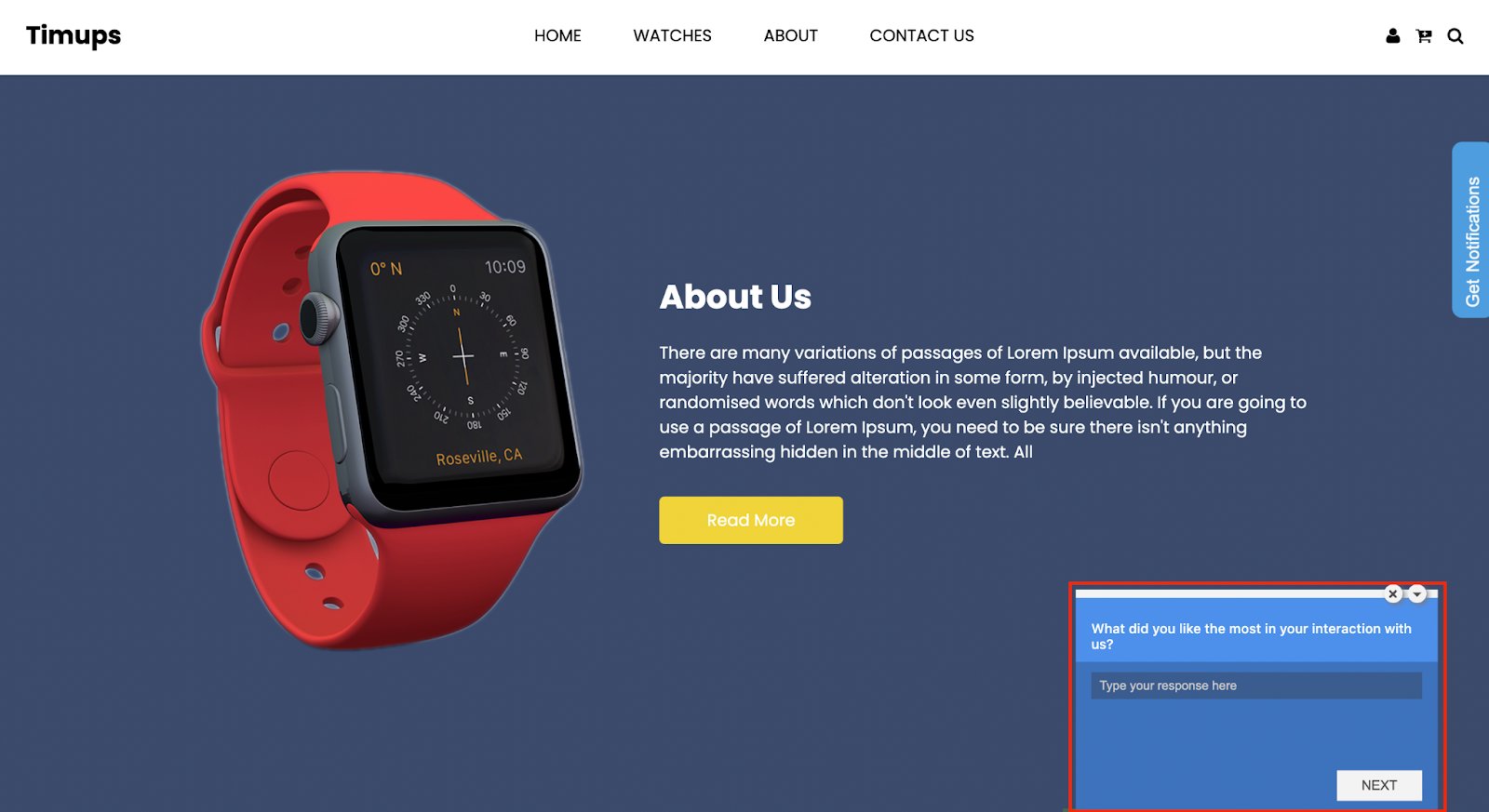
The feedback from the user helps in formulating a hypothesis for the next personalization campaign. Also, you can segment users based on their responses and target them laterwards.

Experimenting with different versions of personalized experiences
Combining experimentation with website personalization is like pairing milk and chocolate; they complement each other well. Experimentation can boost the performance of website personalization.
For example, you have a personalized floating widget on your eCommerce store that recommends new deals on products that are frequently bought by a customer. A/B testing the widget’s headline, image placement, and color of CTA can further improve the conversion rate.
Understanding the significance of personalization metrics
Tracking the right personalization metrics is a challenge for many firms. A key metric is like a signal that tells whether personalization campaigns are giving a fruitful output or not. So, it’s important to study the significance of each key metric before delving into website personalization.
For instance, consider a firm that provides an on-page SEO analysis tool. They have now introduced a technical SEO checker with a $5 increase in the subscription fee. The company initiated the rollout with a targeted campaign aimed at its loyal customer base, detailing the new feature.
In this scenario, measuring metrics such as Average Revenue per User (ARPU) is vital to assess the campaign’s effectiveness. A rise in ARPU indicates that the personalization campaign aligned with the customer’s needs and preferences.
Complying with the regulations
Ensuring data privacy and cybersecurity is a top priority in today’s dynamic digital environment. Personalization requires access to customer data, and there are regulations in place to protect this information. It is crucial to secure customer data for website personalization, not only for ethical reasons but also to comply with laws. When selecting a third-party tool for personalization, make sure it meets the standards and regulations set forth by organizations like GDPR, CCPA, HIPAA, and PCI DSS.
Example of website personalization
VWO is a trusted platform around the globe for experimentation. Here is how the landing page looks:
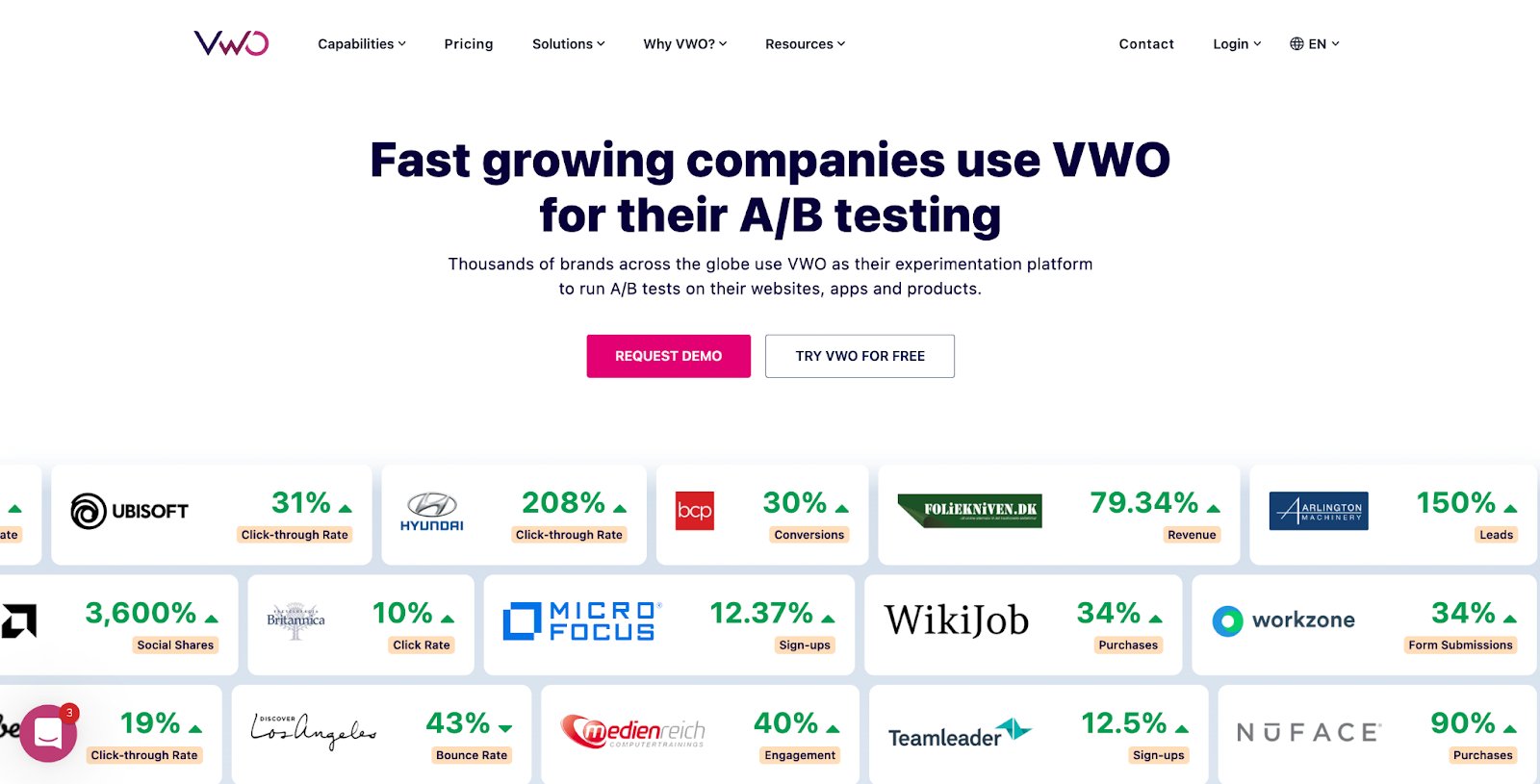
Prospects from various industries visit the homepage of VWO. These prospects can be segmented based on their industry, and a tailored experience can be created. Suppose, we personalized the homepage for an eCommerce lead with VWO Personalize. Here is how it will look:
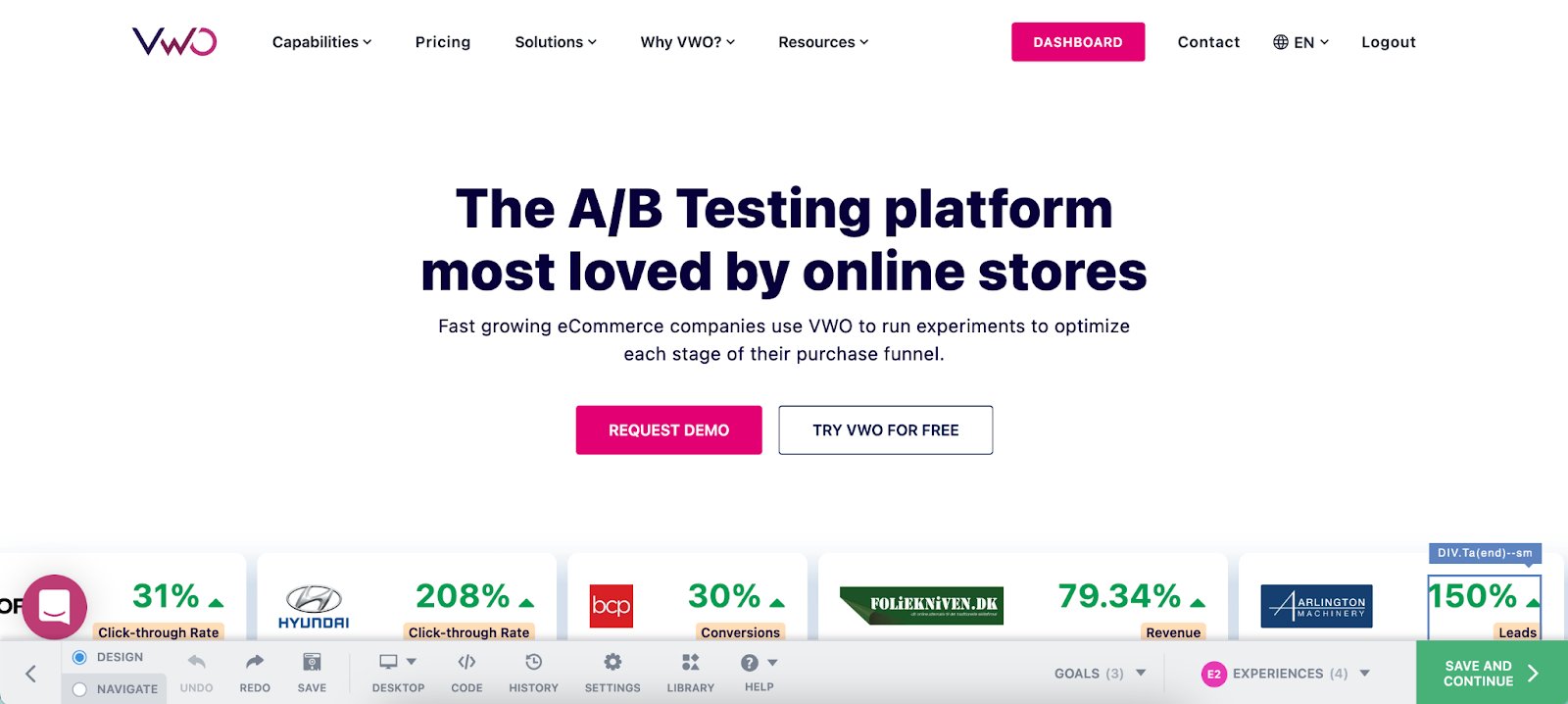
Image source: VWO Product Updates
Notice the personalized headline. Likewise, the headline will change for a SaaS, Edtech, or any other prospect. Personalization enhances brand positioning with such tailored communication.
Download Free: A/B Testing Guide
Best practices in website testing
Website testing is the process of comparing two or more versions of the webpage to find out a better-performing variation in terms of conversion rate, engagement, or any other metric. A/B testing, Split URL testing, and Multi-variate testing are widely adopted methods of website testing. Here are some of the best practices for website testing:
Testing based on data-backed hypotheses
Website testing should not be an output of a hunch but a data-backed hypothesis. Before testing, you should do an extensive analysis of visitor behavior with real-time analytics tools.
The analysis helps understand the leaks in the sales funnel, baseline conversion, and information on the non-converting user segment. The dataset then leads to a hypothesis, which guides the testing campaign.
Create an experimentation roadmap
You just don’t show up at work and start experimentation. It should be a planned, ongoing activity that is part of your organization’s culture. After an extensive study of visitor experiences, and hypothesis creation, it’s good to prioritize test ideas based on easiness, impact, and confidence in getting a result. Your roadmap should be available to all stakeholders within the organization for accountability and cross-team collaboration of ideas.
Don’t make changes to a running test
It is not recommended to make changes to a running A/B or split URL test, as doing so can skew the results and make them less accurate. It is best to let the test run its full course and, if the results are not satisfactory, start a new test with the desired changes.
Create mutually exclusive groups while running multiple tests
When running multiple tests on a homepage for visitors, it is important to ensure that the tests do not overlap or conflict with one another. For example, if one A/B test is offering a discount on a specific product, and another test is offering a flat discount on all products, a visitor becoming part of both tests could get confused. To ensure the accuracy of the tests and avoid confusion, it is crucial to create mutually exclusive groups so that a visitor is exposed to only one test at a time.
Document learnings from the experiment
If you are new to experimentation, the whole process of experimentation is itself a learning experience. You must document the process, along with the results. It helps a lot for future experimentation campaigns, especially if the team working on it changes. The notes on mistakes, learnings, and secondary KPIs that showed changes, can set the tone and hypothesis for future experimentation campaigns.
Example of website testing
Contorion, a B2B online marketplace utilized VWO for A/B and Split URL testing. Contorion ran an A/B test to determine the effectiveness of a site-wide banner for promotion, which helped them increase the conversion rate during promotional periods by 5%. Similarly, they ran a Split URL test to compare the new design of the product page with the old one. The variation performed better, with a 2.4% increase in the add-to-cart click rate.
Conclusion
Optimizing your website, personalizing its content, and testing its performance requires effort and investment. However, the results are worth it as they create a positive impression on your customers.
Improving the speed and relevance of your website content and conducting an SEO audit enhances the user experience. It’s like regular maintenance for a car to ensure a smooth ride.
By testing and personalizing your website, you can bridge the gap between your perception of the digital property and customers’ expectations of it. But many times, website owners hesitate due to sudden monetary demands to carry out experimentation. Investment in an experimentation tool or development team means spending money even before understanding its nuances. But not anymore.
VWO allows you to create data back hypothesis, run tests like A/B, split URL, and multivariate test, and personalize website experience for user segments. Features like Visual Editor mean less time spent conversing with the development team and more time for optimization. What’s amazing is that you don’t have to spend a single penny on starting experimenting.
VWO offers an all-inclusive free trial of all its capabilities so that you can gather data, test, and personalize. If testing is what you want to start with, VWO has a free starter pack on web testing for 50k monthly traffic. Check out the details of VWO’s plans and pricing.
]]>To measure personalization success, you decide to keep track of a certain metric. But the metric tells you about the progress in weight lifting, and there is no clue about the improvement in cycling time. Without any idea of your cycling performance, you enter the race. Do you think you will win the competition?
While it’s a no-brainer that the situation and your chances of winning will be odd, this example teaches the importance of tracking the right metric. The right metric navigates you toward your goal and prevents you from getting lost on the wrong path.
Download Free: Website Personalization Guide
Metrics measurement has the same importance when it comes to the personalization of consumer experience. Each metric has its significance and contributes differently to personalization success. Thus, it’s important to know when to track a particular metric depending on the goal.
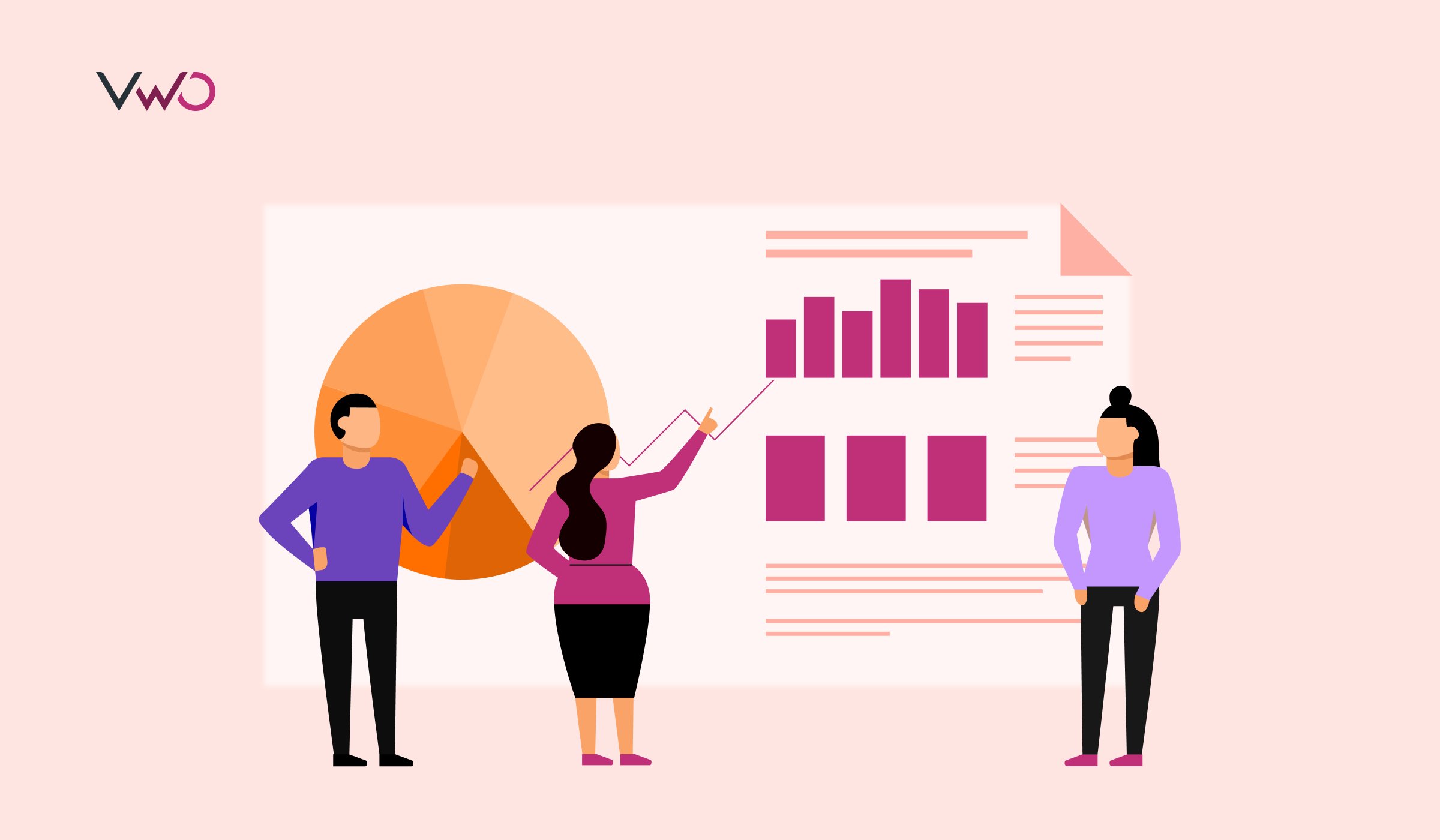
So, let’s dive into metric measurement and its relationship to the success of a personalization campaign. We will then look at ROI tracking of personalization because a positive ROI is the ultimate aim of any business, and it decides the continuation/repetition of the campaign.
Personalization and its significance
Before going forward, let’s understand personalization and its significance in your marketing strategy.
Personalization is customizing the experience of returning users to make them feel more connected. The whole process of this customization is based on data gathered from past interactions, behavior, and customer background.
The reason personalization is so important is that it makes the customer feel special and see things of interest at different touchpoints. Thus, making the customer stay for a longer time, increasing the lifetime value of a customer, and reducing the customer acquisition cost.
Now, let’s move on to the crucial part of measuring personalization success with the key metrics.
Key metrics to measure personalization success
Forrester conducted a survey that included 372 business decision-makers. The survey revealed that only 30% of firms have the right metrics to measure the success of their personalization program. The key metrics are equivalent to understanding your customer’s response to your digital communication effort. Some of these key metrics are as follows:
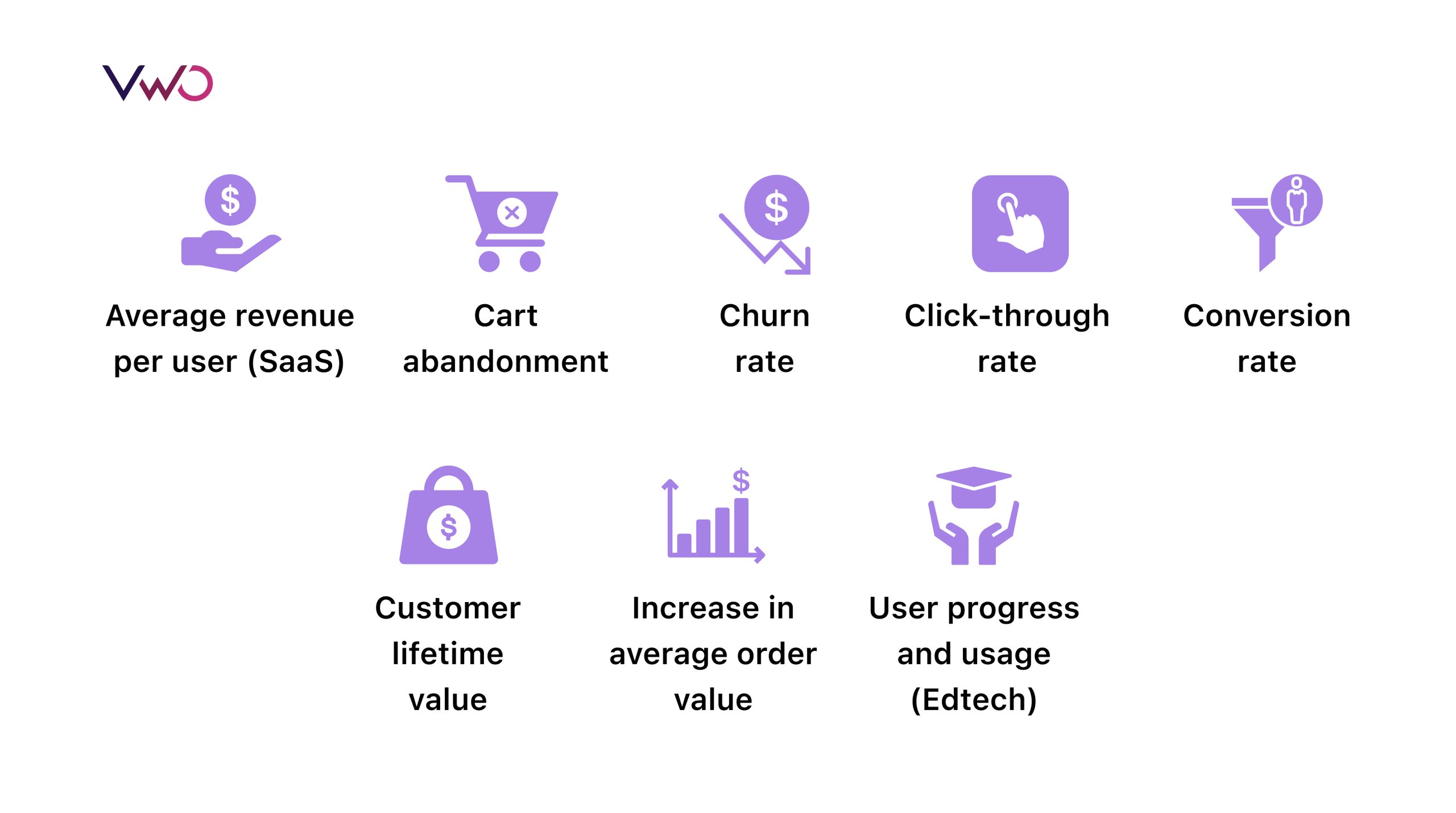
Here’s an explanation for each of the metrics –
Average revenue per user (ARPU)
It is one of the key metrics that is mainly used in the SaaS industry. This metric is tracked when you roll extensions and packages tailored for customer segments. For example, say a company offers a SaaS marketing tool with an off-page SEO analysis feature. Now, the company is rolling out an on-page SEO analyzer with a $5 increase in subscription for its loyal customer segments in the initial stages. In such a situation, tracking ARPU becomes crucial to know the effectiveness of the campaign to roll out the extension.
An increase in the average revenue per user means that the personalized campaigns to suggest extensions and packages have successfully aligned with the customer’s needs and interests. Thus, this metric summarizes the ROI of the marketing campaigns.
Here is the formula for ARPU calculation:

Cart abandonment
This metric combined with past customer behavior data helps understand your customers’ purchase behavior. For instance, say you have a group of regular customers that buy whenever there’s an offer discount, and in a recent buying journey, they abandoned the cart because there were no new promotions or offers. This particular behavior helps in segmenting the group as discount seekers. You can personalize the upcoming campaign with offers for this specific group and again track the cart abandonment rate to check the success of the personalization measure.
Also, sometimes due to a lack of payment options, users drop out at the last step. Thus, when you test your payment gateway page with new payment methods, tracking the abandonment rate helps in knowing their efficacy.
So, this key metric is vital when you enrich your customer’s experience with new favorable payment methods or offers on the product. Also, this data is required for segmenting users, who can be targeted with custom digital marketing ads and communication.
The equation to calculate cart abandonment is as follows:

Churn rate
Churn rate helps you gauge the dissatisfaction in customers while using your product or service in the follow-up interaction. When you want to increase the revenue from returning users, then tracking this metric is vital.
Churn rate tracking before and after personalization helps in knowing whether the tailored experience is keeping up with customers’ expectations.
Here is the formula for the churn rate:

Click-through rate (CTR)
A website, whether a SaaS or eCommerce platform, has multiple call-to-action buttons which guide the customer to make a decision. Tracking the CTR of these buttons is essential when the goal is to understand the effect of UI/UX on the customer’s decision. CTR tracking of buttons like add to wishlist, add to cart, read details, etc. helps pinpoint where the customer is finding ease or difficulty in navigation.
CTR tracking in personalization becomes vital when the returning customer sees the product catalog based on interest and past purchases. Thus, tracking CTR buttons before and after personalization aids in making the UI/UX and product recommendation better, which in turn affects sales.
The formula to calculate CTR is as follows:

Conversion rate
Conversion rate gives you a complete picture of your sales cycle and its weak points. This metric helps in testing hypotheses related to gaps and personalization measures.
It also tells you about the impact of the product recommendation mechanism, especially when the revenue has a significant chunk from returning customers.
You must track this key metric for personalization when you see a stream of traffic but lowering/ stagnant sales and if you are testing new features for a custom experience.
Here is how you can calculate the conversion rate:

Customer lifetime value (CLV)
CLV is tracked when the long-term association is in view with multiple transactions between a customer and the company. Personalization success monitoring with this key metric determines whether the experience was as per customers’ needs. You track it not just for one campaign but for a larger picture.
The formula for CLV measurement is as follows:

Download Free: Website Personalization Guide
Increase in average order value
This metric is essential when you want to improve cross-selling, subscriptions, and related course sales. The success of the personalized products section on the webpage is known through this metric.
One example is Bear Mattress, which utilized VWO to redesign the cross-sell flow and personalize the recommendation based on purchase behavior history. The goal to increase order value and key metric tracking helped them increase revenue by 16%.
An increase in average order value is calculated as follows:


User progress and usage
A metric that is the heart of eLearning website analytics, you must measure it after the personalization of study material and courses for the user. It helps validate hypotheses for personalized course recommendations.
The formula to measure user progress and usage:

Now, that we know the importance of metric tracking in personalization success, let’s move on to an overview of the ROI of personalization measurement. Personalization is worthy only when it positively contributes to the ROI.
Keeping a check on the ROI of your personalization campaign
There is no doubt that personalization increases revenue. As per Deloitte, Starbucks once carried out a personalization campaign that included 400k personalized messages. The campaign saw a threefold increase in the offer redemption.
ROI from personalization must be checked on a dashboard with pre and post-personalization campaign results rather than in silos. To check ROI, go through the Conversion Rate, ARPU, and Average Order Value of the control group to whom you showed the personalization campaign and compare it with your previous data.
Also, it’s necessary to monitor human resource involvement, third-party tool usage, and disruption (if any) in the regular flow of work while measuring the ROI.
In the end, to improve the ROI of the personalization program, the foundation needs to be strong. This means you must have a robust data strategy that fills all the gaps and creates a strong visual of the consumer journey.
Measuring personalization success with VWO
VWO Personalize makes personalization easy and effective. It helps you trigger unique experiences for specific audiences at the right place and time by –
- Leveraging visitor data
- Prompting experiences via triggers that are based on visitors’ persona or events like when one refreshes a page
- Helping you create experiences via the visual editor without relying on developers each time
With VWO Personalize, you can track how your personalization campaigns impact the conversion rate for the metrics associated with the campaigns. Our platform allows you to track the following goals:
- Page Visits
- Form Submits
- Clicks on Link
- Clicks on Element(s)
- Revenue
- Custom Conversion
- Engagement
The VWO Personalize report dashboard shows real-time conversions and is easy to read, which assists in better business decisions. The ongoing personalization journeys can be optimized based on report observations.
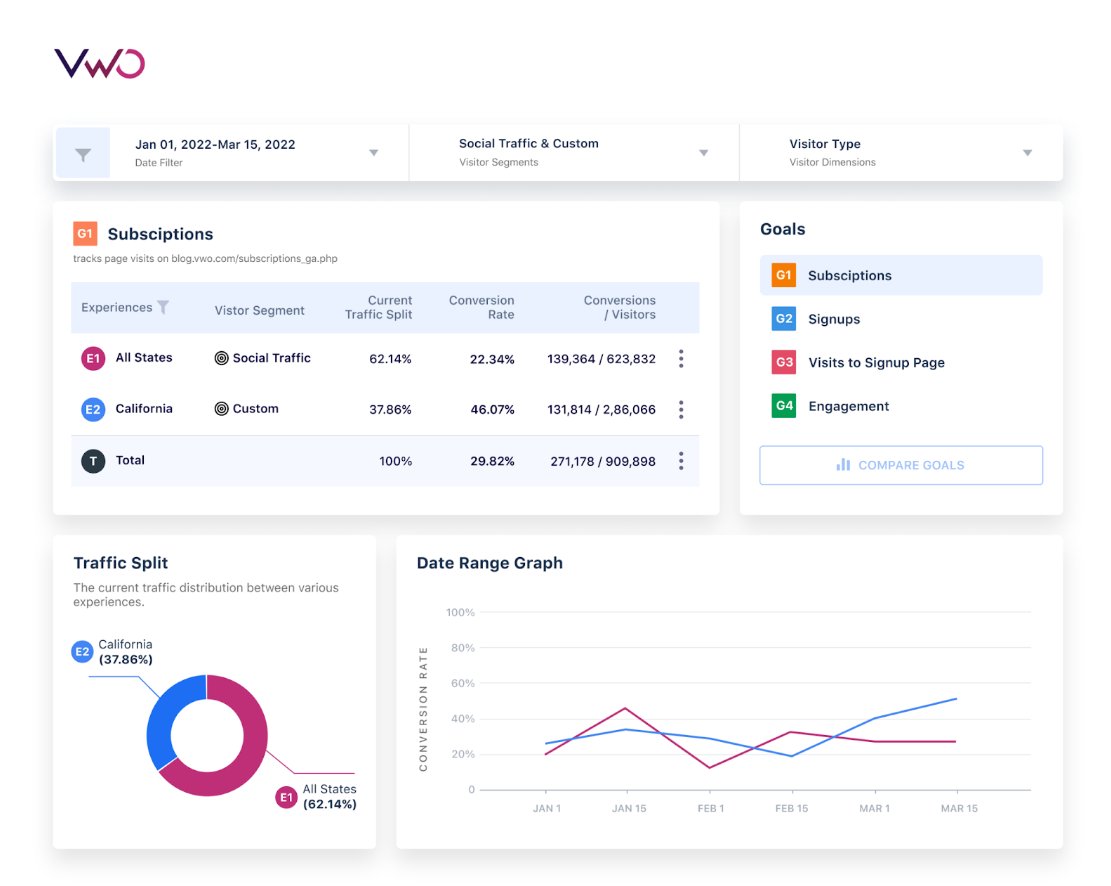
Conclusion
The true potential of personalization is unlocked with the right metric tracking. It’s like becoming a pro in bike racing, measuring your cycling performance each time, analyzing faults, and making more personalized efforts to grab the competition trophy, while your competition is still measuring weight lifts or making efforts without any analysis.
In the growing business competition, your trophy is a loyal consumer base, and personalization measured with the right metric is your effort. Metric tracking will help you personalize and become the true server to a loyal consumer base.
Let VWO Personalize become a partner in your journey, and it will do the heavy lifting of bringing you accurate reports on your key metrics. Also, create 1000s of consumer journeys, run A/B tests, create variations with an easy-to-use visual editor, measure ROI, and get behavior insights on a single dashboard. Grab a free demo for all the VWO features and capabilities including personalization.
]]>